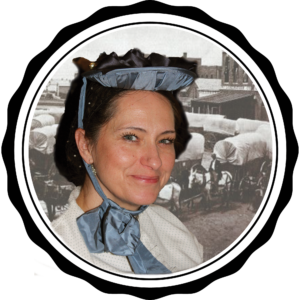a

Kristi Harder, 1868-72 Pioneer & Settler (Emigrant & Farm Wife)
Depicting a strong-willed 1870’s pioneer woman of western US (Nebraska, South Dakota, Wyoming) who came with her family via wagon at a time when the world was speeding up after the completion of the transcontinental railroad. The fast pace of the era combined with the rough and rustic lifestyle of the American West meant there were some conveniences, but they were not easy to come by.
Kristi hires out to living history farms, forts, and museums for seasonal interpretation of specific activities; notably that of a married farm woman in either her “working clothes” or her “go to meeting” clothes. The authenticity of her ensemble allows her to participate as an “extra” in short films about the west, to fill in photo shoots, or to work with schools on educational programs.
Kristi’s ensemble must be historically correct from the “bum up” because she will be working outside in the elements, actually handling stock and the tasks such as driving a team, gardening, housekeeping, and cooking. Details and accessories must be consistent and appear (or actually end up being) worn and weathered. She will need summer and winter outer wear (bonnet and cloak) for year round interpretation.
SETTING FOR HER STORY
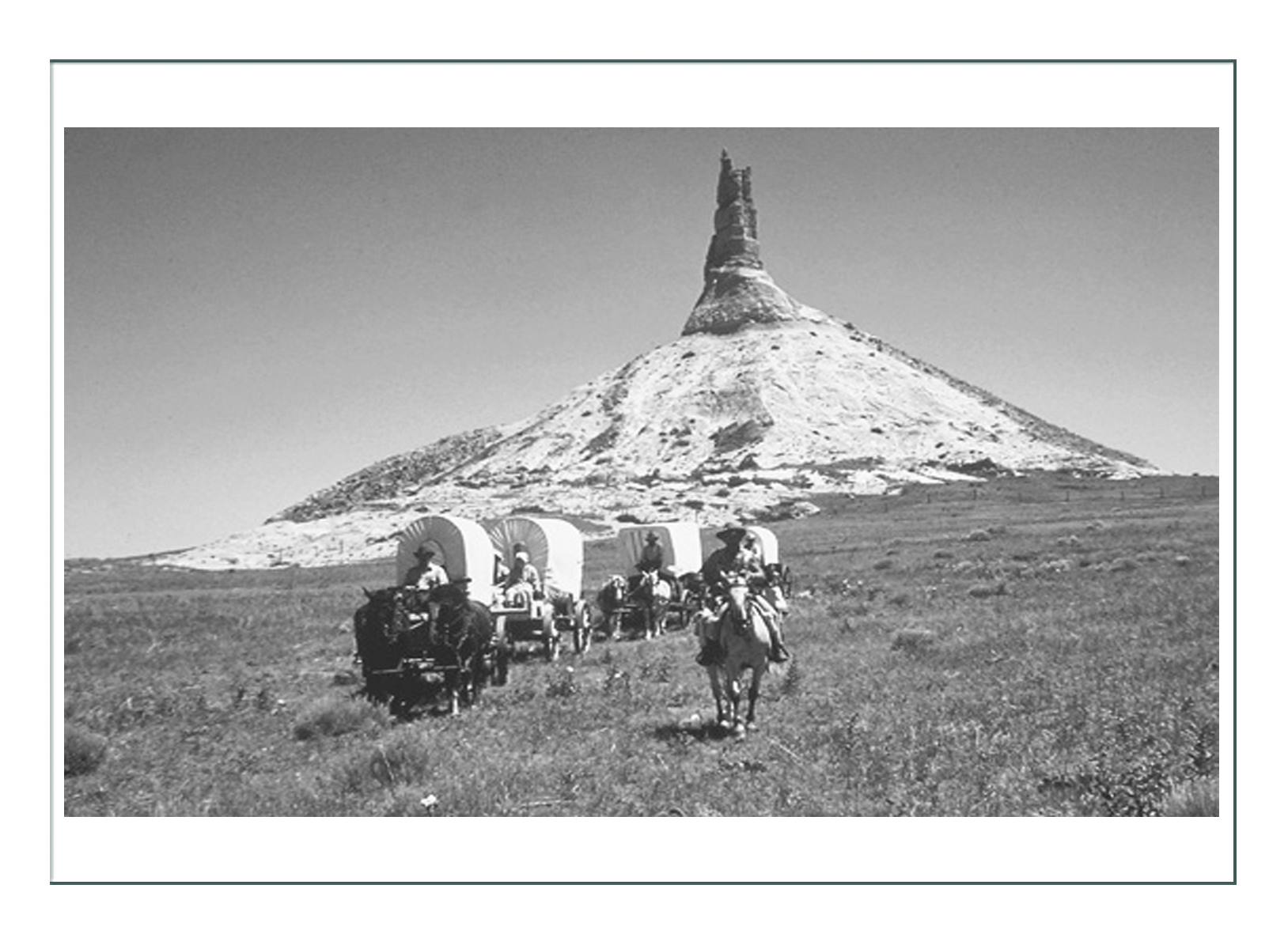
‘WESTWARD BOUND, THE OREGON TRAIL
Between 1840 and 1869 visions of paradise, towering trees, lush valleys, rich soil, and limitless opportunity called to over 500,000 pioneers who would head west to fulfill their dreams. The 2000 mile route was called the Oregon Trail.
Originally an ancient network of Indian footpaths and animal trails that crisscrossed the West, in the early 1800’s fir tra[ers made the trail passable for wagons. Freight wagons followed soon after in the 1830’s and 1840’s, beating a track along the Platte River and South Pass in what is now Wyoming. This “fur trace” was the beginning of the trail.
Christian missionaries took advantage of the trail, joining caravans for safety. Missionary wives Narcissa Whitman and Eliza Spalding joined the “fur brigade” in 1836, becoming the first white women to cross the continent on what would become the Oregon Trail.
As the beaver died out with a final fur trader’s Rendezvous in 1840, travelers Joel and Mary Walker and their 4 children traveled on to Oregon’s Willamette Valley. This proved families could make the trip, opening the way for pioneer families to come. Early in 1841 the first emigrant wagon trail set out from Independence, MO. The party of 80 men, women, and children headed through Kansas, to Chimeny Rock in Scott’s Bluff (which would be Nebrraska), and across the Continental Divide to Soda Springs. There the party split up between the Oregon and California bound travelers.
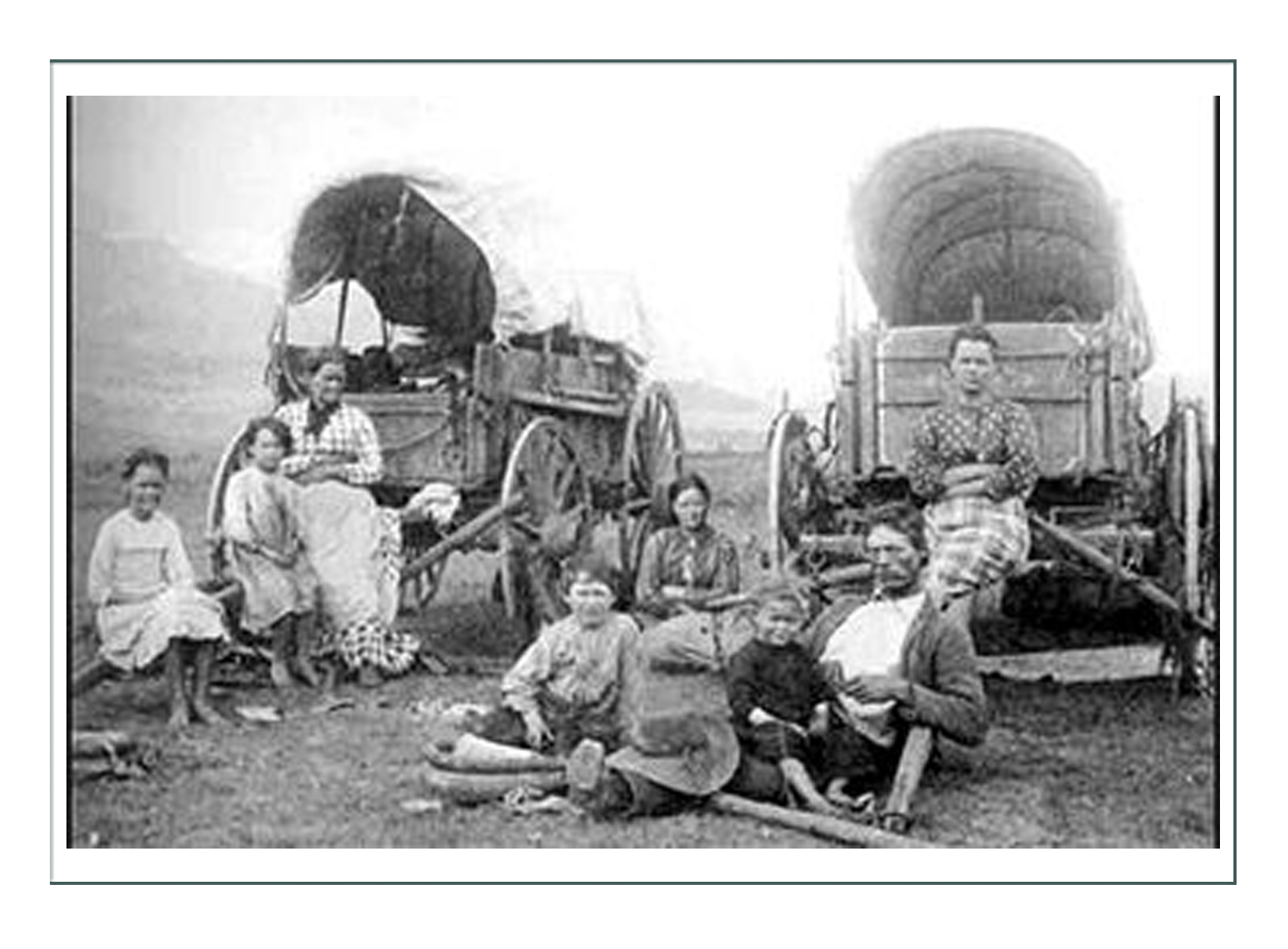
FROM EMIGRANT TO SETTLER
In 1850 Congress passed the Donation Land Act, offering 160 acres ofland to white males or half-Indian settlers, with another 160 acres to their wives. Travel – and weddings! – boomed as settlers rushed to stake claims in the new West. By the mid to late 1800’s settlers laid claim to what had been tribal lands.
In the first decade of Oregon Trail travel, relationships between Indians and emigrants was generally cooperative. Tribes helped supply game and acted as guides. Most emigrants returned the favors. Tensions grew, however, in 1849 when gold was found in California, increasing the number of travelers beyond emigrants.
Gold prospectors slaughtered buffalo herds, trampled native plants, and destroyed the Indian’s way of life. The Indians demanded payment for passage, but the travelers refused. Relations deteriiorated by the late 1850’s. Indians killed travelers, and travelers killed Indians. In Oregon, farming, mining, and logging destroyed Indian villages and salmon sites. Treaties were made and broken, and most tribes were forced onto reservations.
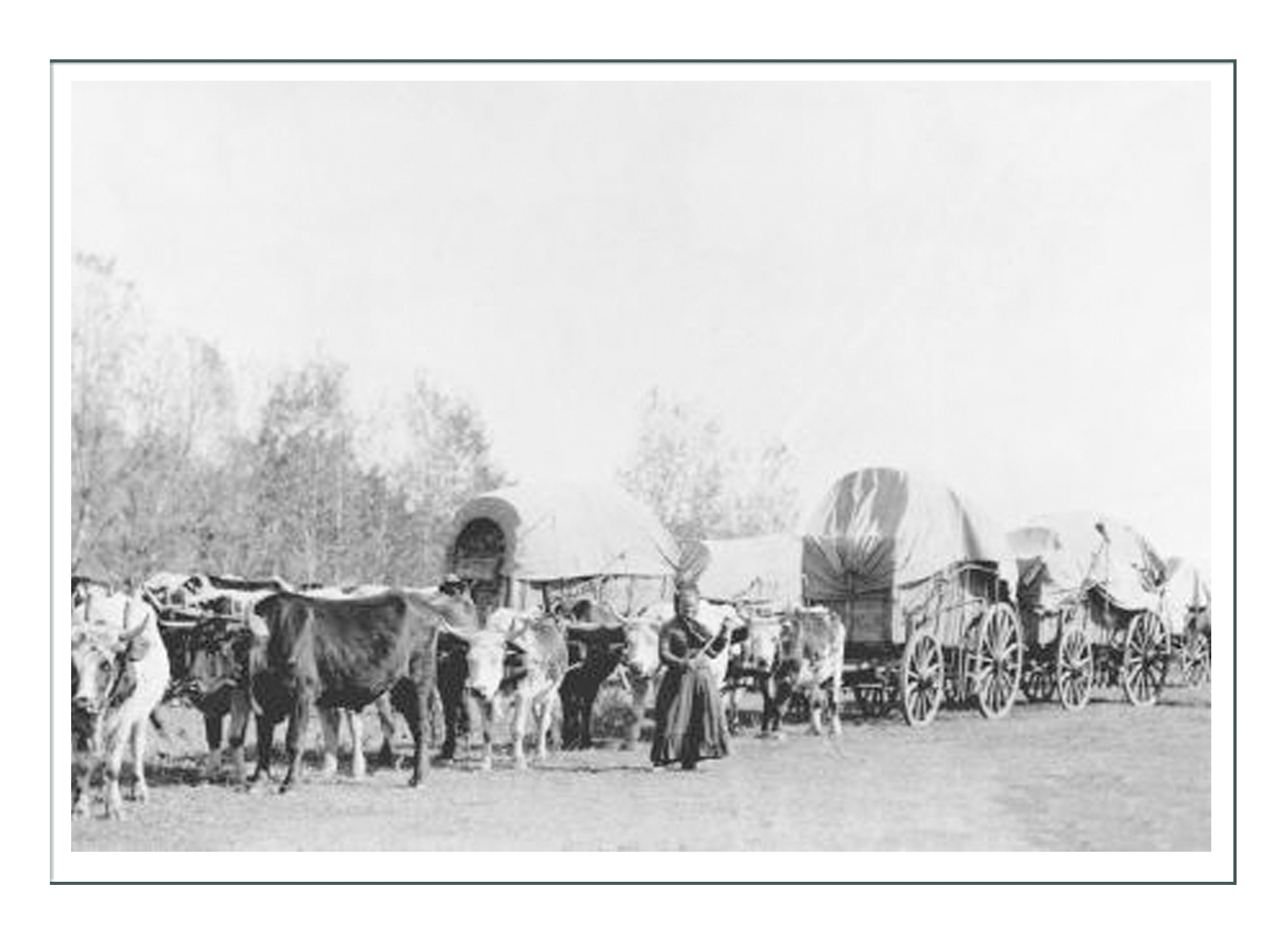
In just a few decades, the western world had been changed forever.
AT THE TIME OF DEPICTION
The story of the Oregon Trail closed in 1869 with the completion of the transcontinental railroad. People still used sections of the trail for local trips, and well-used sections were paved as highways and roads.
Kristi’s story begins at this meeting of what was and what would be. Experiences of those traveling west on the many trails and passages were similar:drudgery of walking hundreds of miles, suffocating dust, violent thunderstorms, mud, temperature extremes, bad water, poor forage, sickness, and death.
We find her character finally settled on 320 acres of her own in Wyoming, after surviving more than a year of the journey across the country.
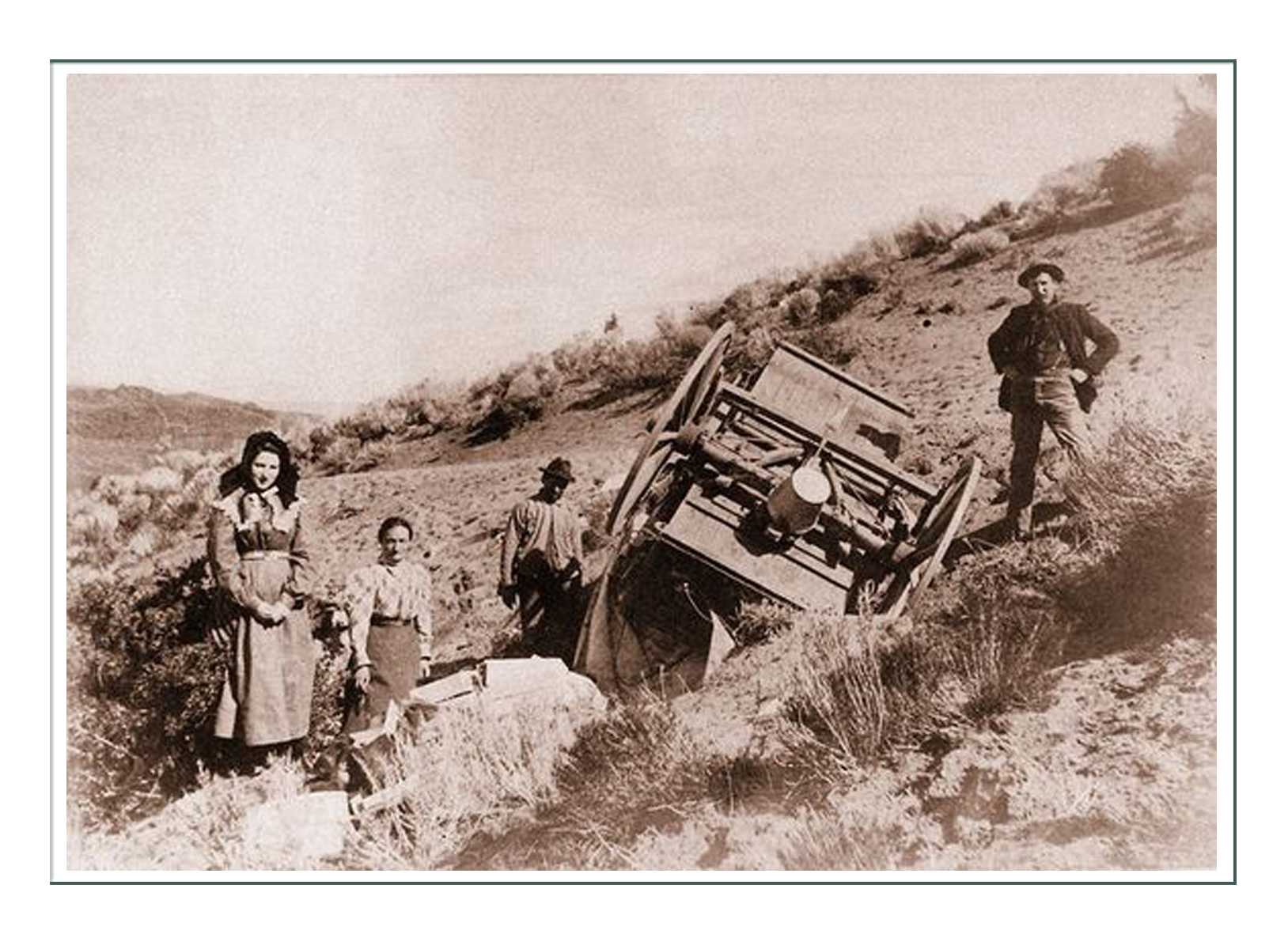
Click to go to Kristi’s Historical Research of Time & Place Page
Click to go to Kristi’s History of Fashion Research Page
Click to go to Kristi’s Design Development Page
Continue below to see the Finished Product
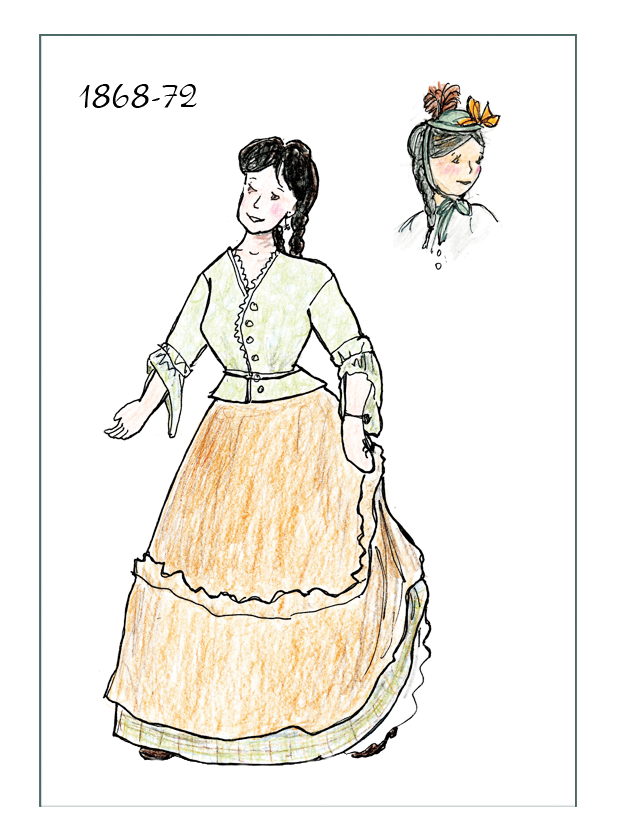
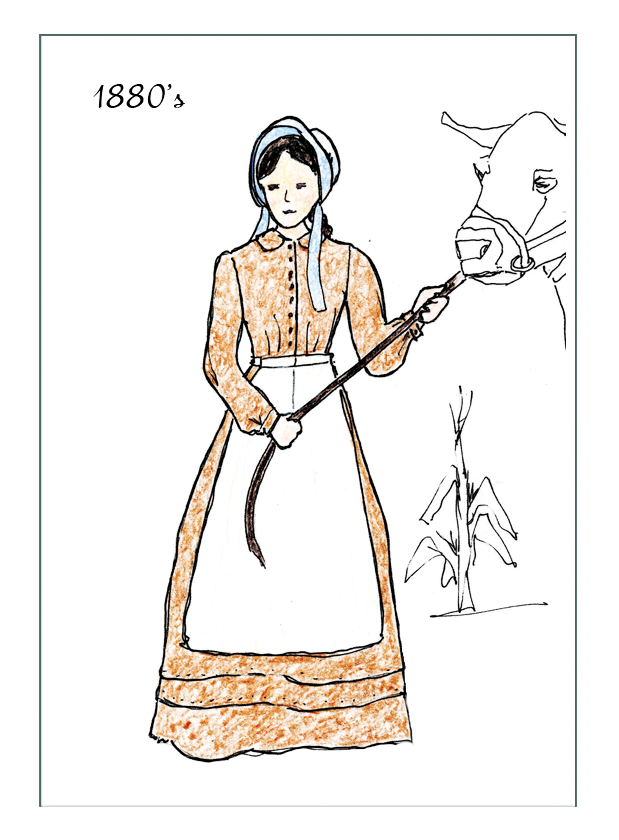
Pioneer to Settler Ensemble 1868-72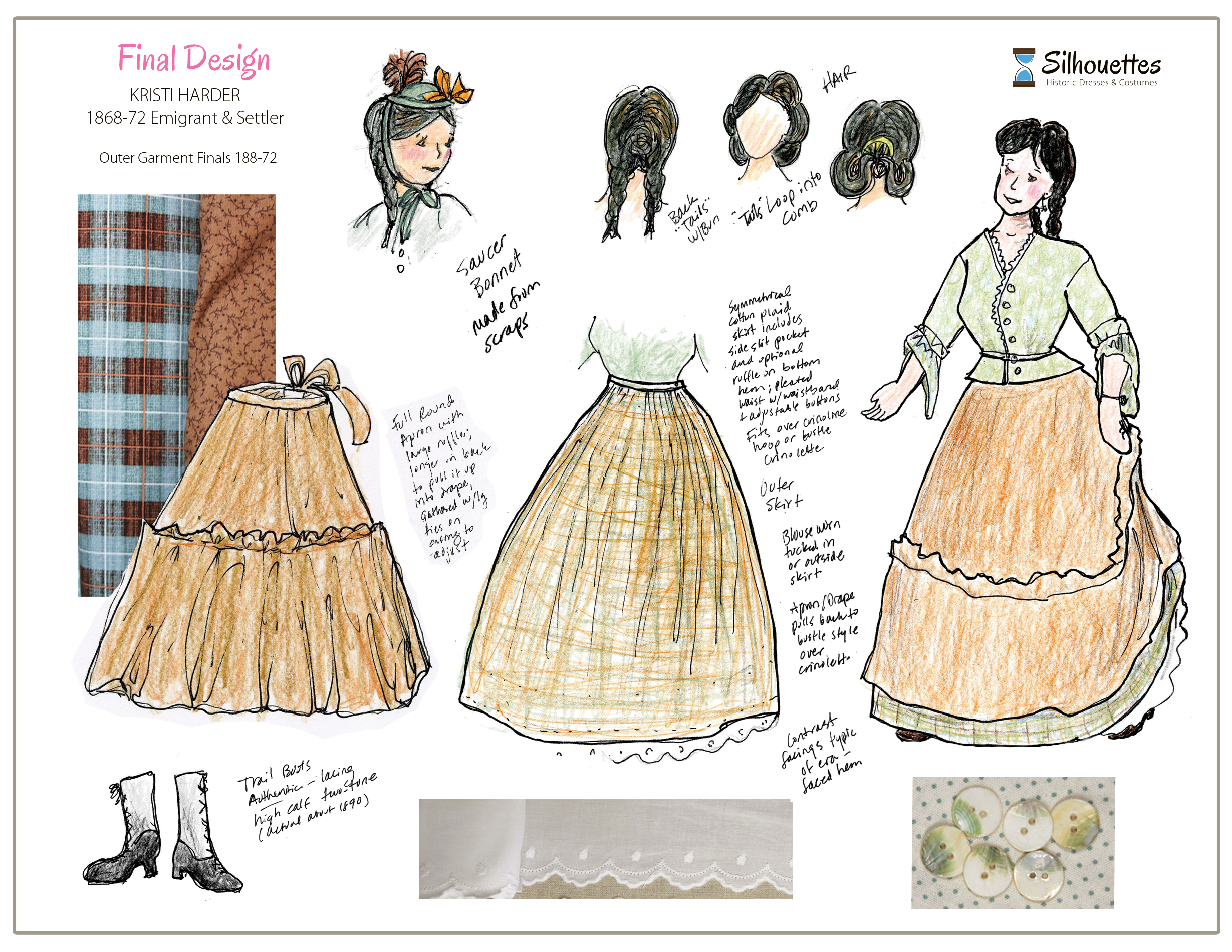
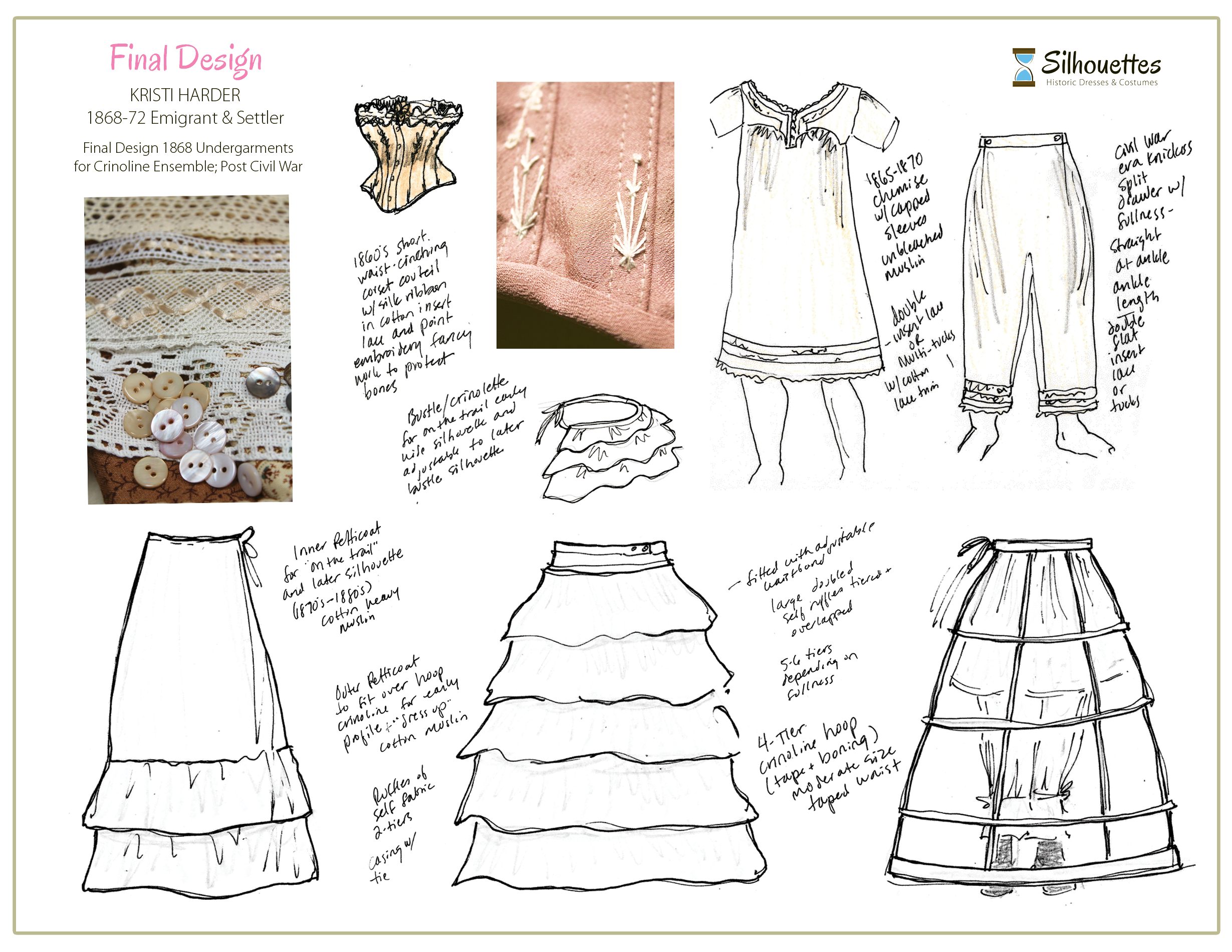
Ensemble:
- Knee length chemise with basic flat lace on neckline only, alteration tucks, puffed sleeves with bands
- Split pantaloons with drop down and flat lace or inset/faggoting on bottom; low calf with optional string tie to make 3″ ruffle
- Period correct corset, minimal boned, basic with some embroidery
- No corset cover
- Inner (warmth and modesty) ankle petticoat flat with no ornament of unbleached muslin
- petticoat with layers of ruffle, bottom layer ornamented, and alteration tucks (1–4 tucks); tie for gathering adjustment (optional button closure if tight fitting bodice used)
- full dress with bodice attached – bodice with darts and fitted (as opposed to the looser gathered style equally pertinent to the character – this is a personal preference); straight at natural waist (no insert “V”) except for 2 piece for tucking; skirt evening gathered front to back with wide bell skirt to allow full movement (as per historic samples)
- (optional 2-piece in contrasting light cotton with heavier fabric skirt – but same silhouettes). 2 piece would be less fitted
- drop front apron with ties; full gather to match skirt and straight line
- flat heeled, lacing boots in black or brown – well worn
- bonnet of high fashion fabric and ties of self fabric – working slat bonnet
- “Saucer” Bonnet with double chin ties for dress up
- brooch or pendant watch
- hair as per period using pins or combs
- cotton gartered stockings (modern tall boot COTTON (no blends) knee socks will suffice)
1880’s “Settled” Western Pioneer Ensemble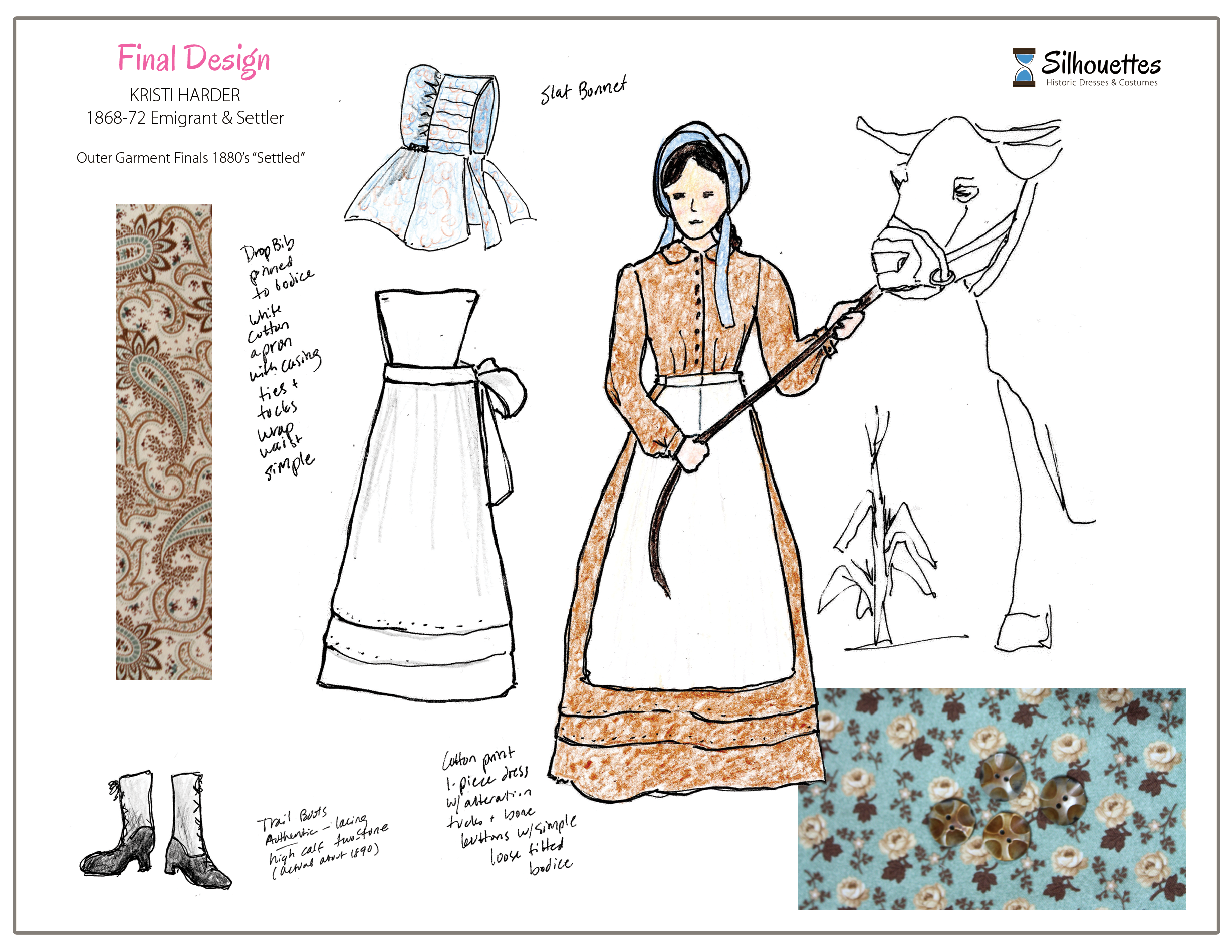
To extend Kristi’s story, and to provide her with a wider range of work possibilities in interpretation of the West, we have designed in a way to use her investment in most of the outfit, and to just change the top dress layer and some accessories.
Not only does this follow her across the US on the trail into finding her new home, but also finds her settled and living a new lifestyle of the pioneer of the 1880’s. The fashion, style and function of her later garments will – exactly as a woman of the time would have done – use as much of what she had to be worked over, reconstructed, or remade at minimal cost and minimal materials, with intent to meet her new lifestyle and limited resources at first.
New Dress
Created new for her will be outer garments:
- 1 piece cotton print work dress, with print/dye processes of a later date reproduction fabric
- Slat Prairie style work bonnet (may be used earlier too, but this too has a later dated dye and print process included a 2-color paisley)
- White cotton simple apron; with a pin bib drop front and string ties
- Boots – the REAL AUTHENTIC boots we purchased for Kristi are actually mid-1880’s; too late for her 1868 depiction, and exactly accurate for this depiction. She will stretch the interpretation and wear the same pair for both eras
Same Unders For Both Eras
Kristi will be using her same undergarments, with slight switches and modifications, to depict 10-15 years later after her character has been established in the West on her farm in Nebraska. She will be tossing the crinoline and cup bonnet of her previous era, and keeping most everything else the same underneath.
Her 1880’s will use from the 1868-72 undergarments:
- Short Corset (unmodified)
- Bustle/Crinolette (instead of hoop crinoline)
- Chemise (there are 2; she may choose either and switch out for the two eras)
- Drawers (there are 2; she may choose either and switch out)
- Petticoat – using JUST the inner petticoat of the previous era; 1 only and no modesty petticoats
- Shoes, stockings, boots the same
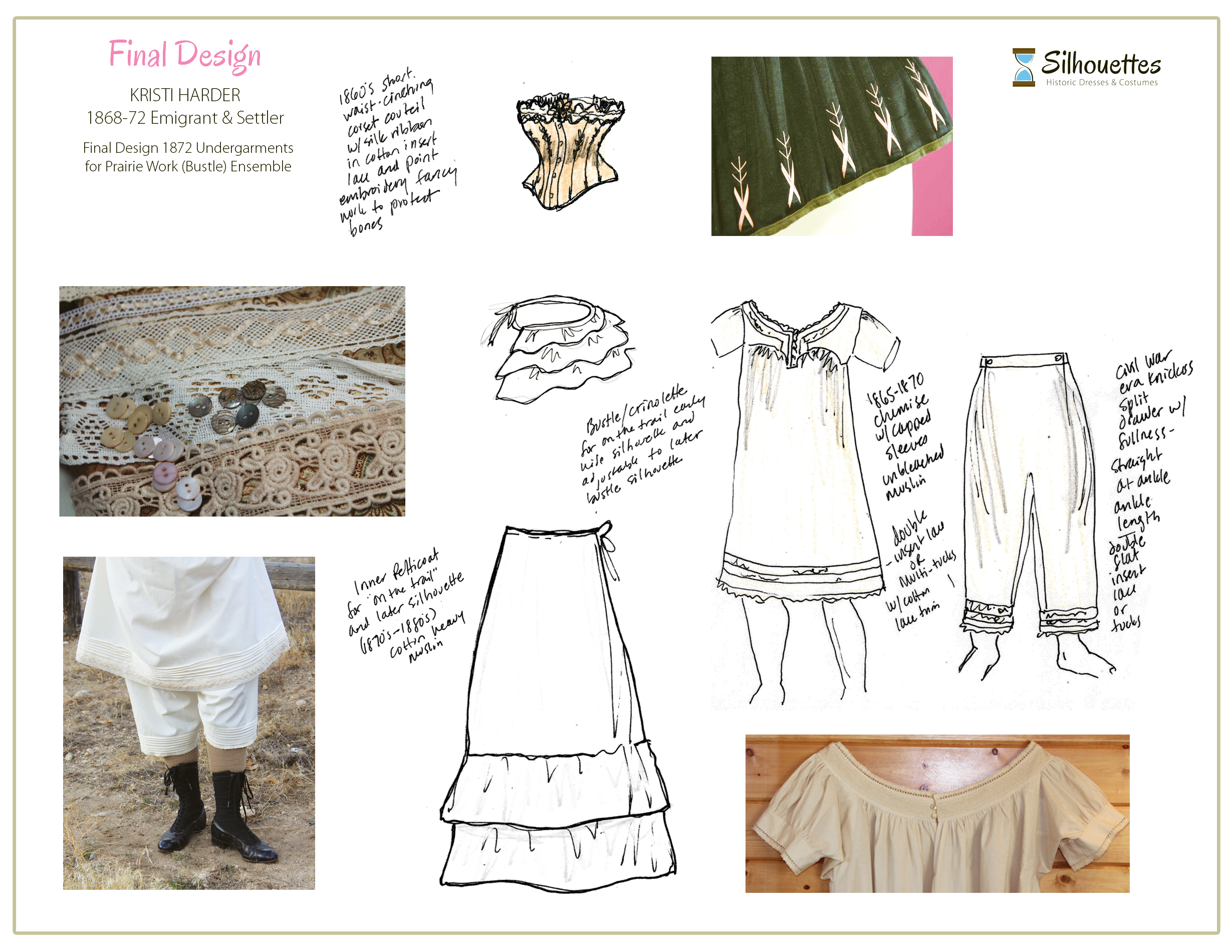
SELECTED FABRICS & NOTIONS
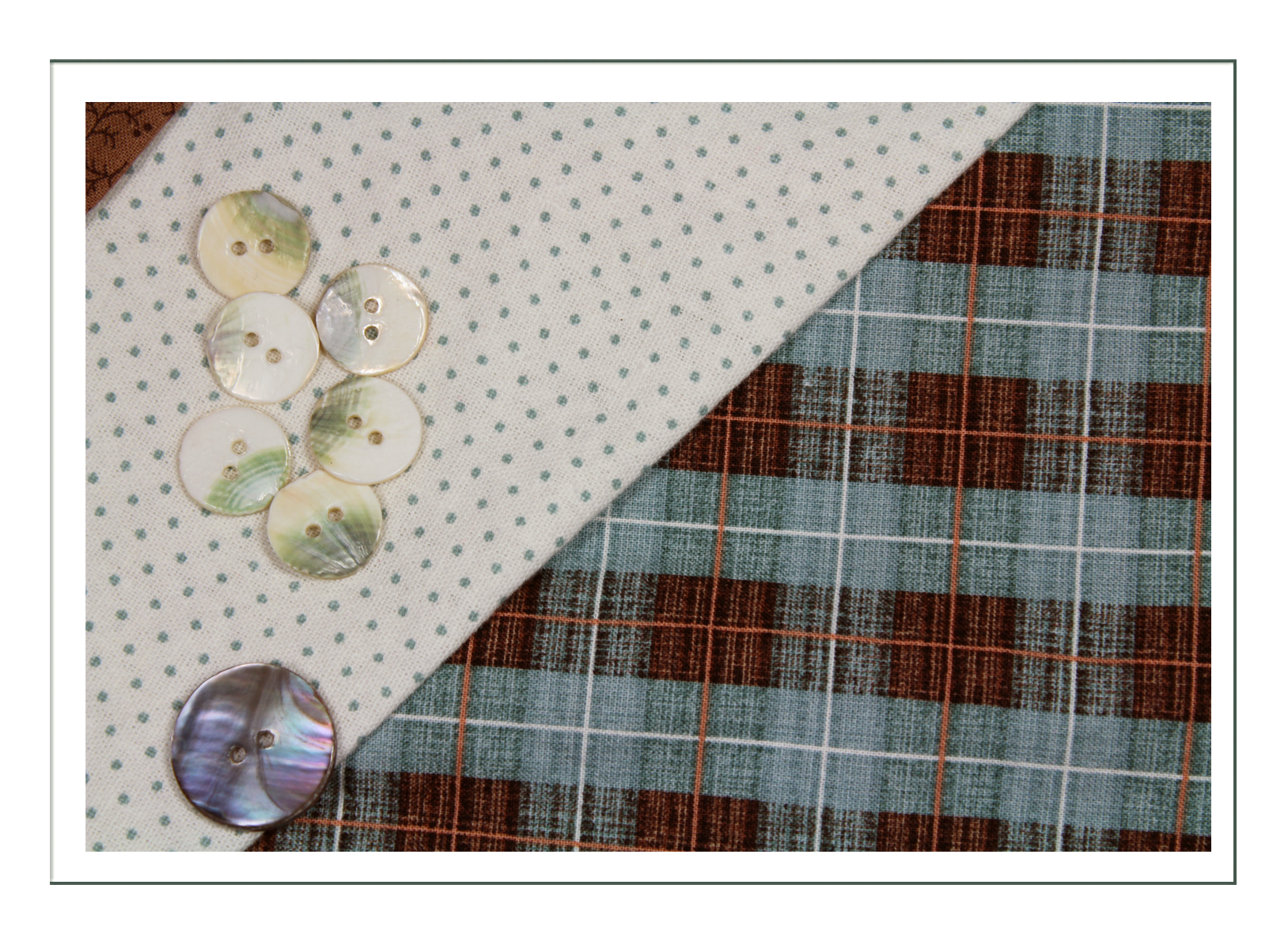
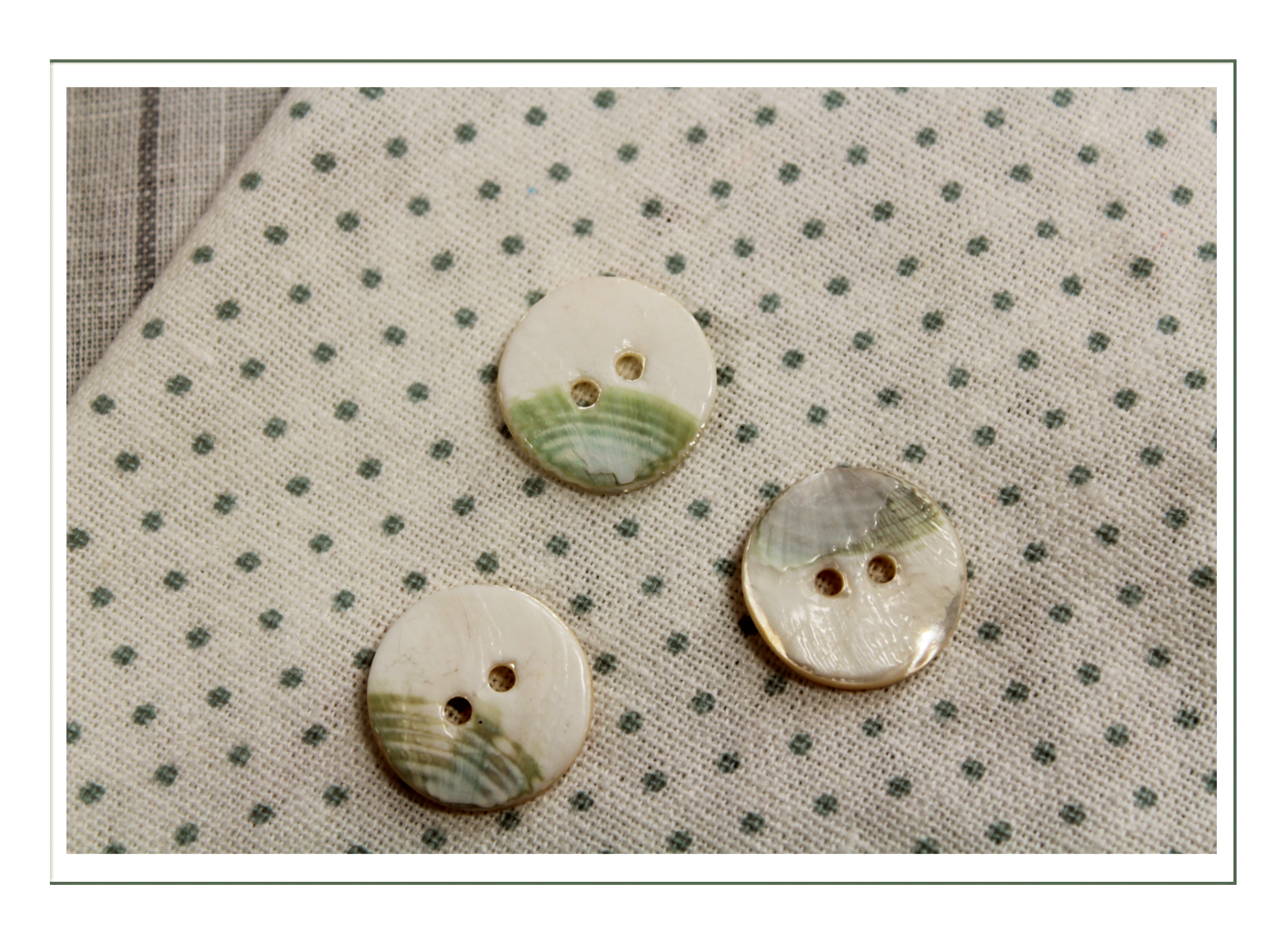
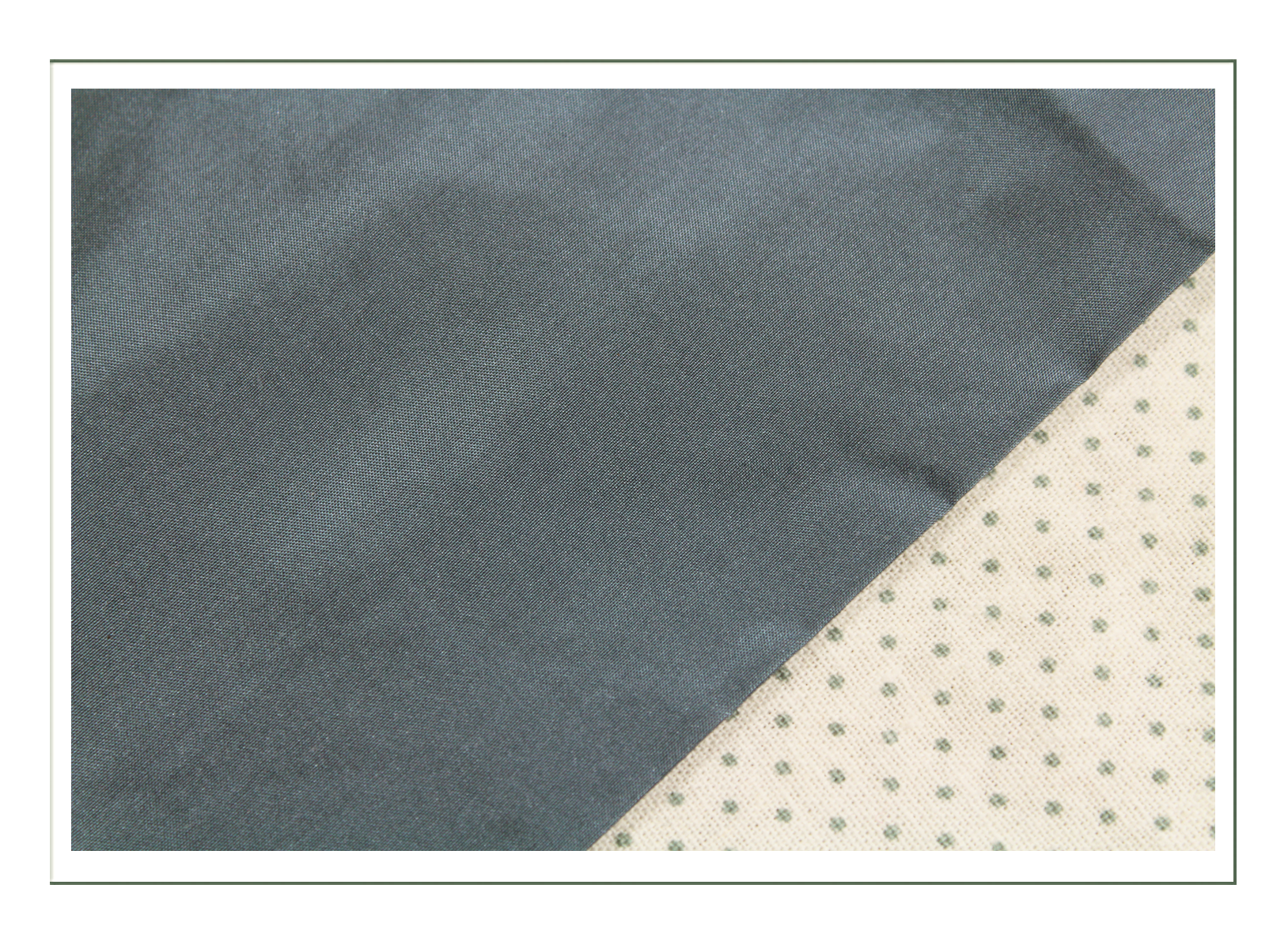
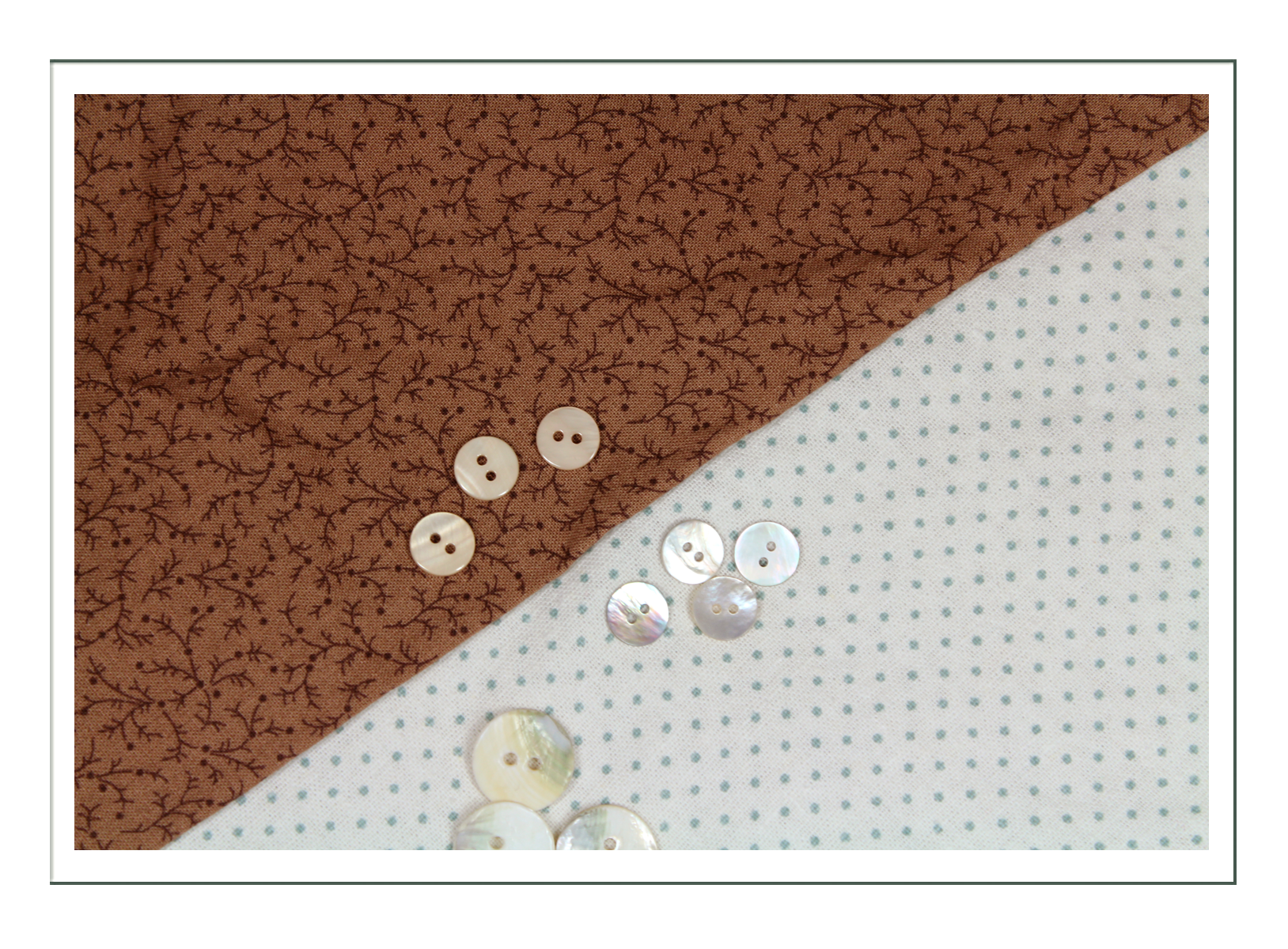
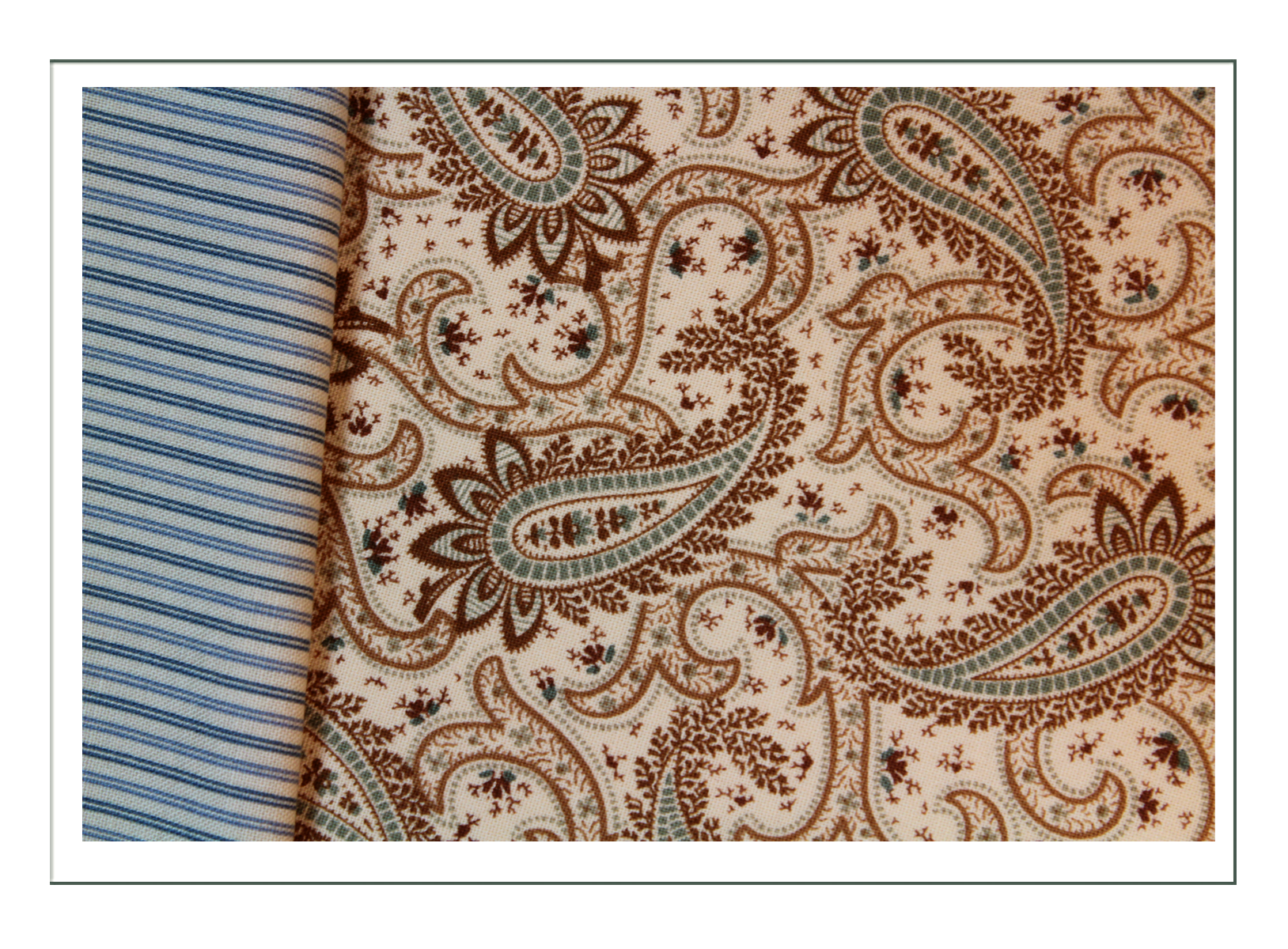
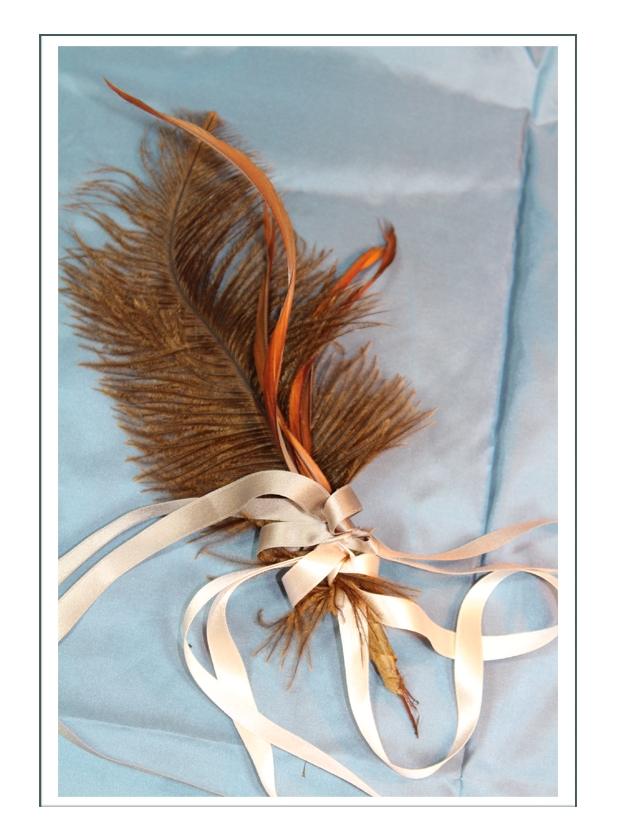
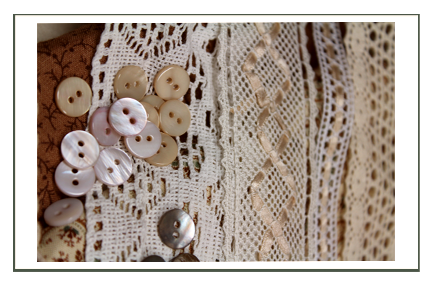
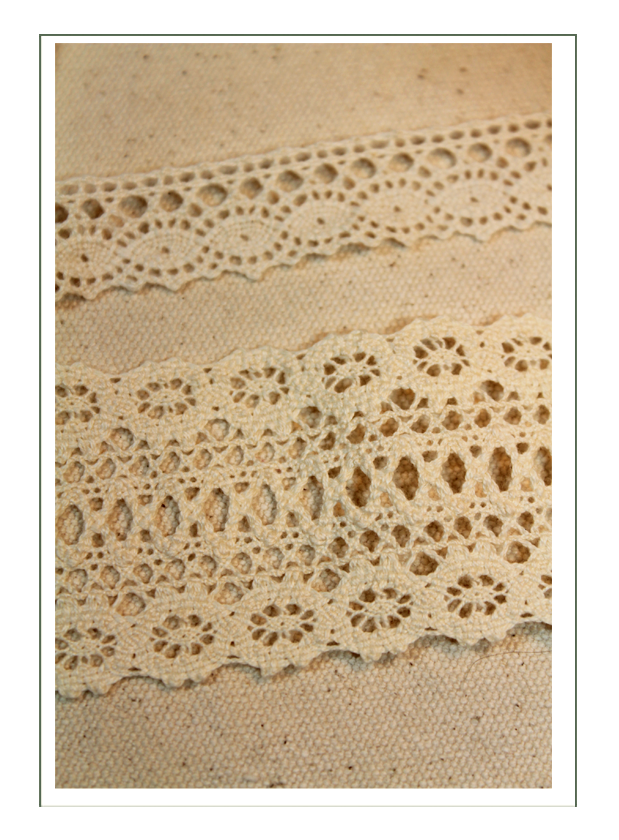
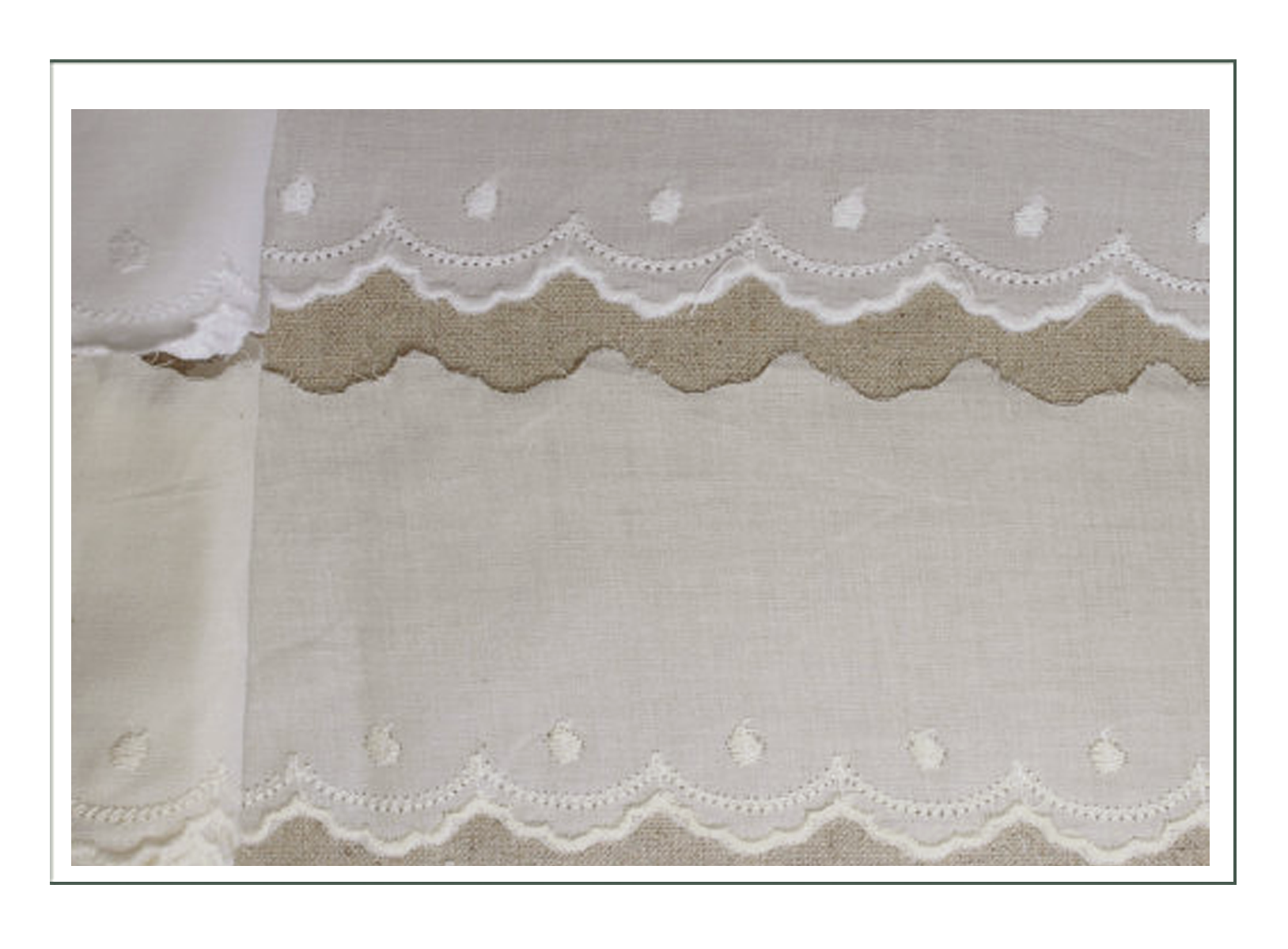
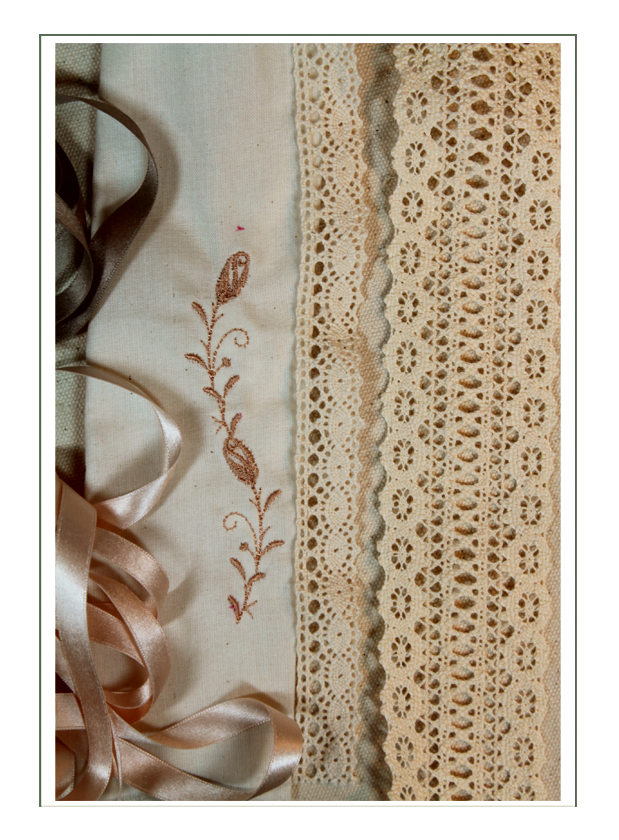
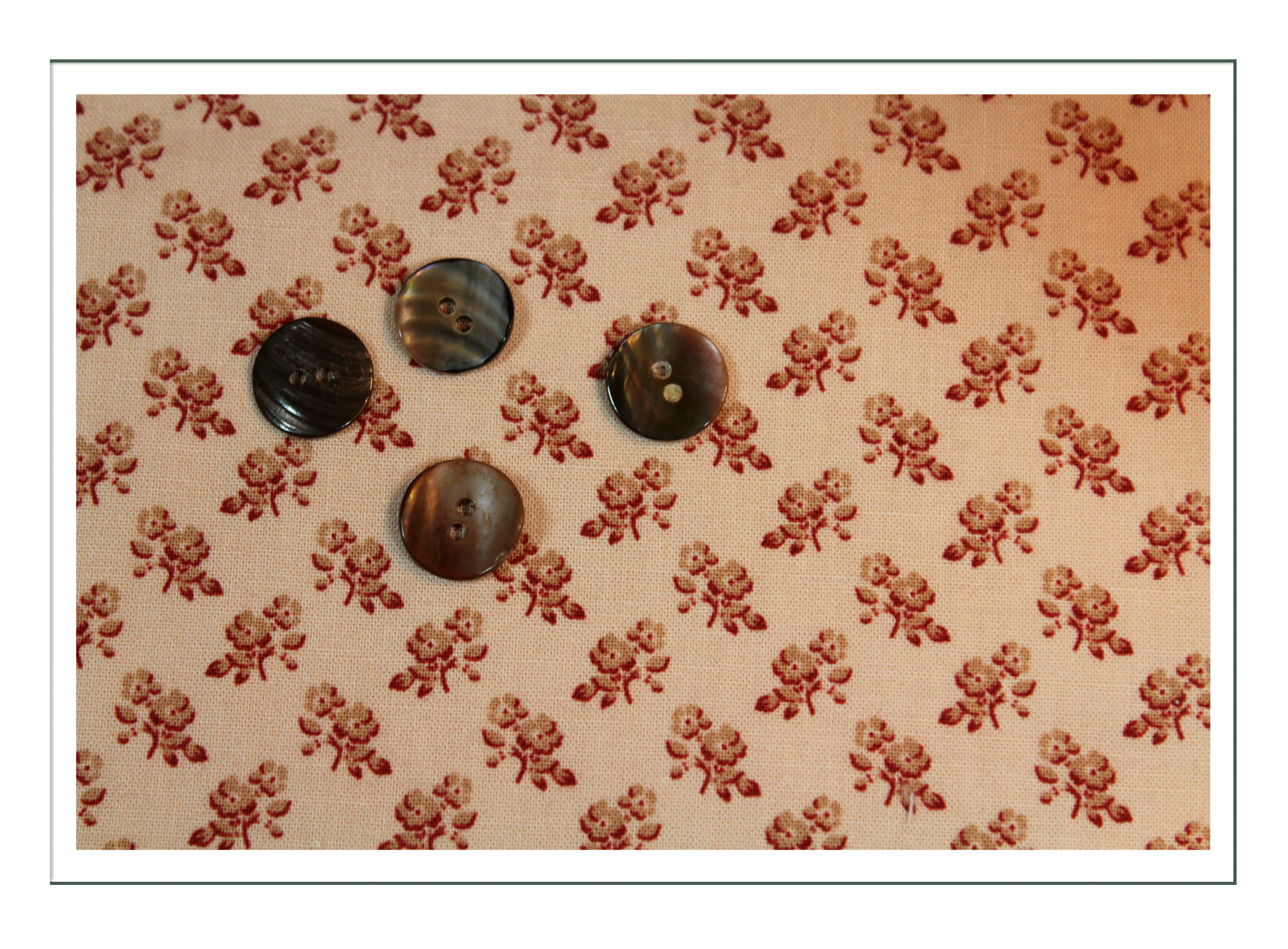
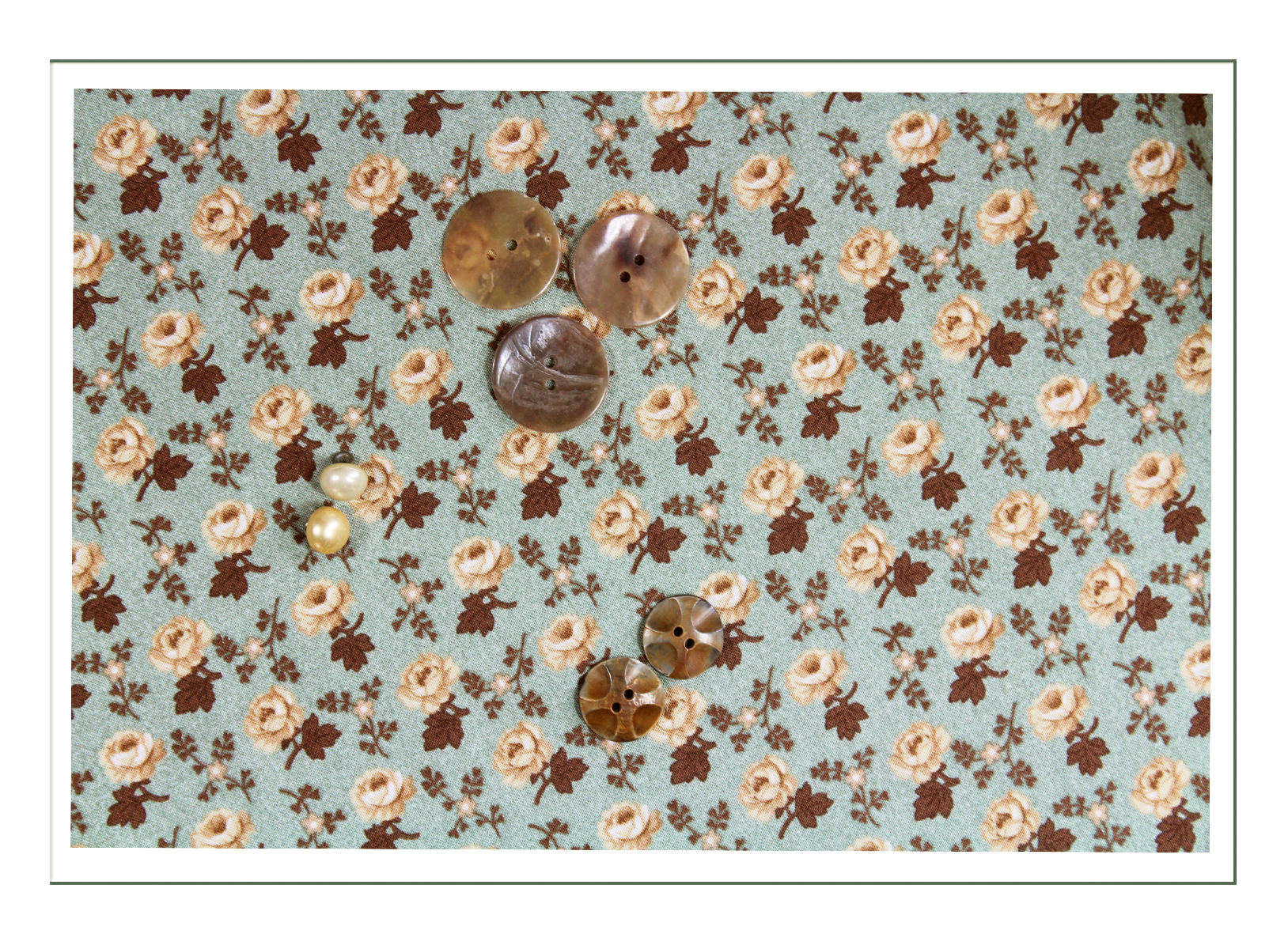

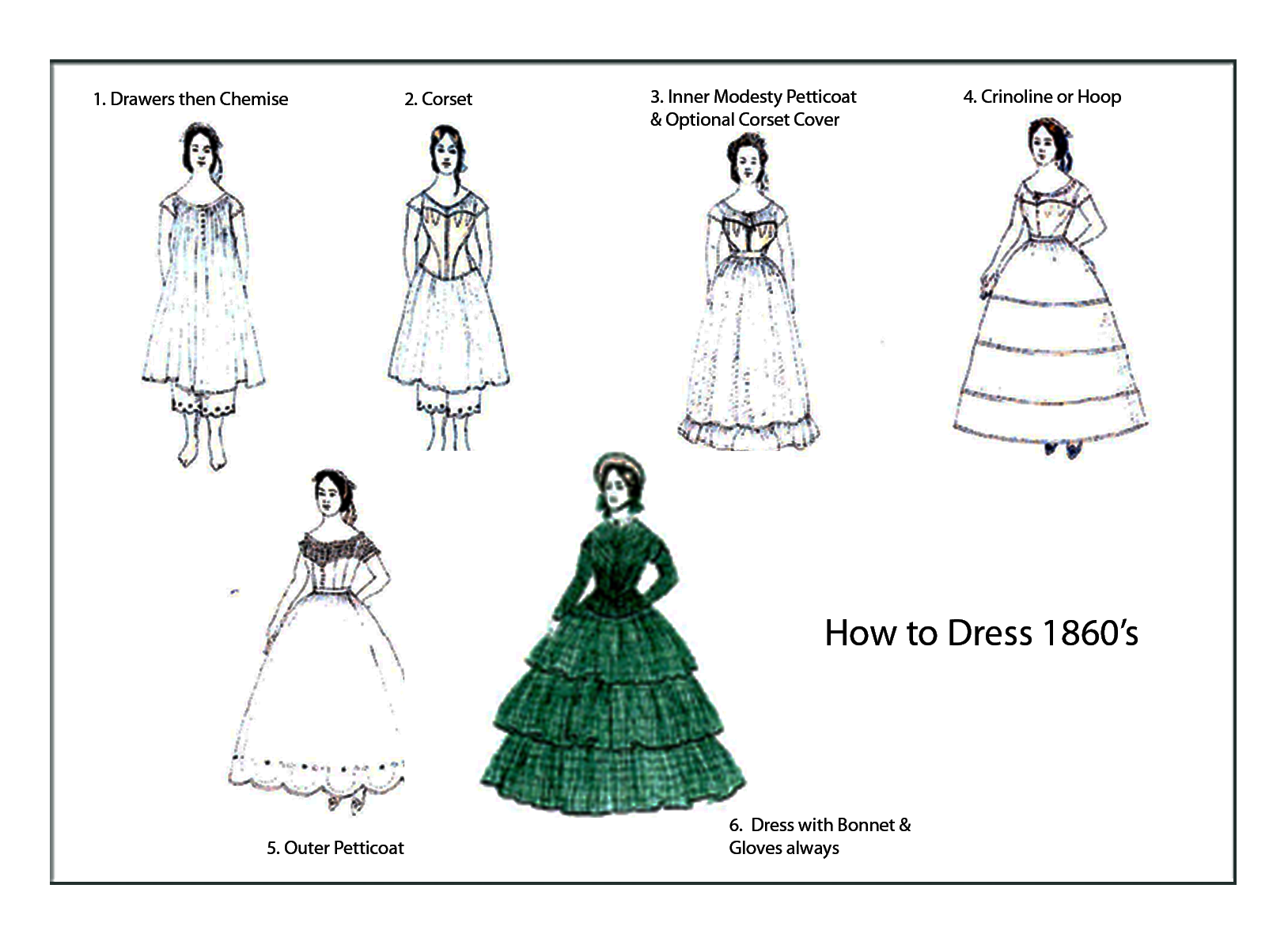
Corset
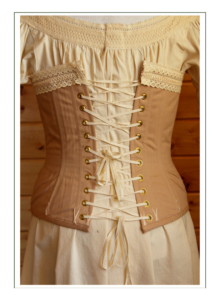
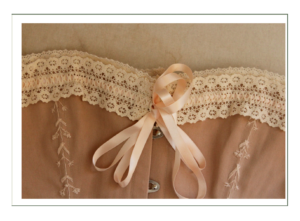

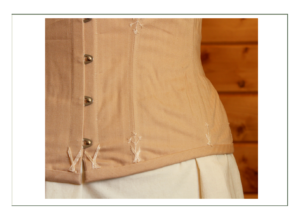
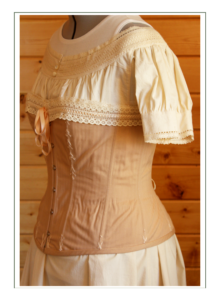
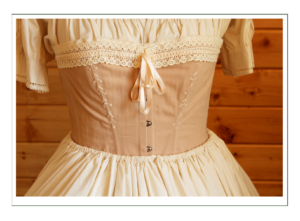
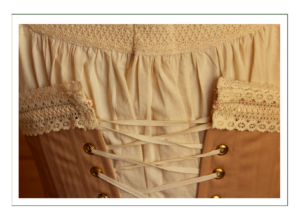
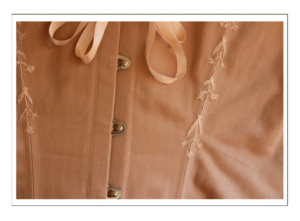
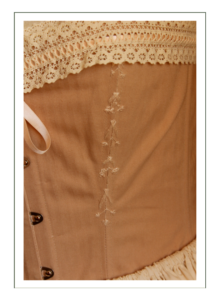
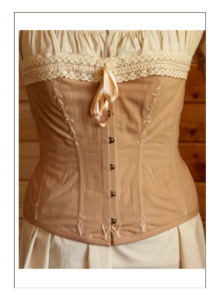
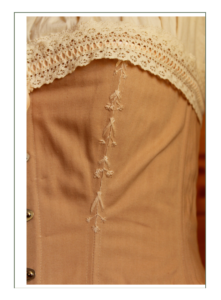
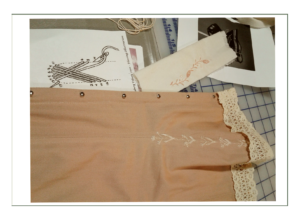
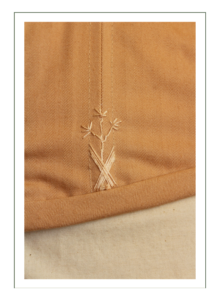
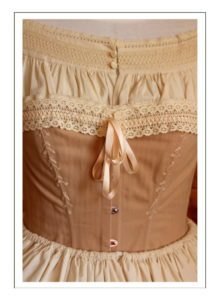
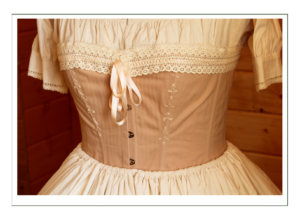
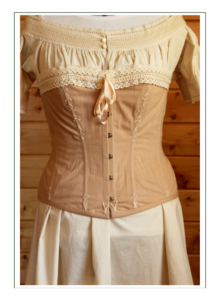
Chemise 1
We made 2 sets of Chemise and Drawers. The first was of unbleached cotton sateen. The design was modified to drop the shoulders to accommodate the dropped shoulders on the semi-sheer gauze blouse to come. We wish we had made cap sleeves instead of full sleeves; would have been more appropriate for the trail.
While the fit will be correct and period accurate, we felt the chemise was too long to tuck into the drawers without gauzing a “pooch” (we’re aiming for a smooth front belly to switch back and forth from crinoline wide skirt to early bustle flat front). It seemed too high quality for a pioneer; better as sleep garment if it had a neck. We made use it yet; whichever has best fit.
Of particular note is the intricate hand detailing of silk twist loops on the real pearl buttons, and the complex tucks on the bottom. While this era permits machine stitching, the complex gusset and neckline design required hours of fine hand work. You can see how flattering this will be for a thin waist and emphasis on a full bust.
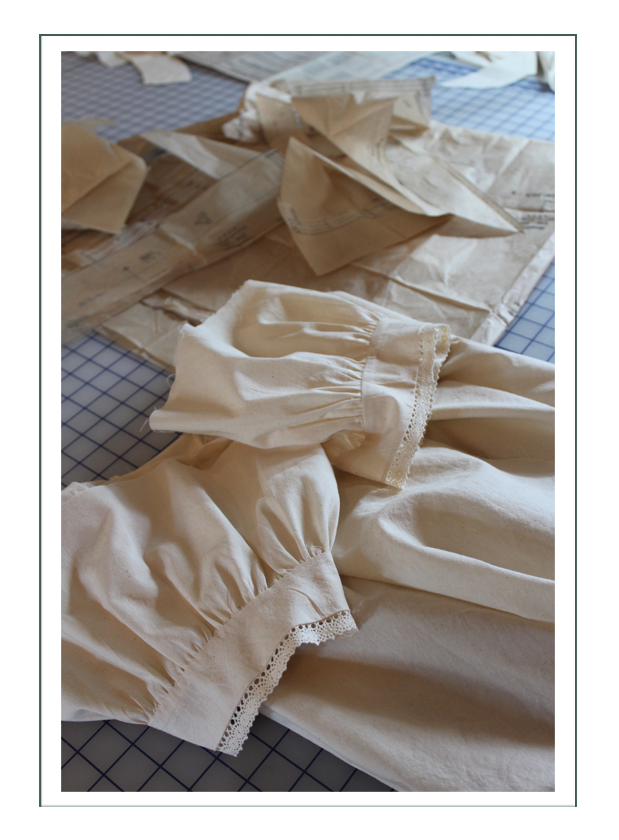
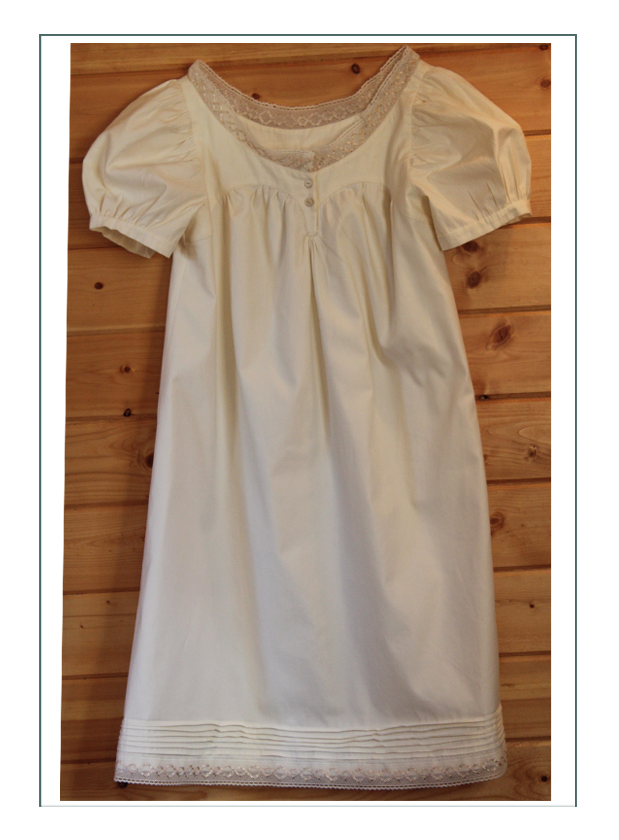
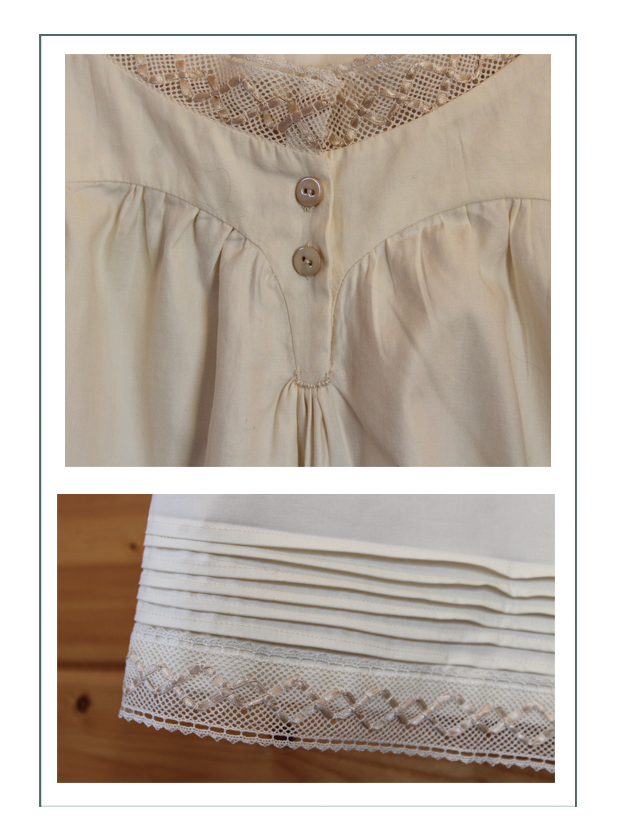
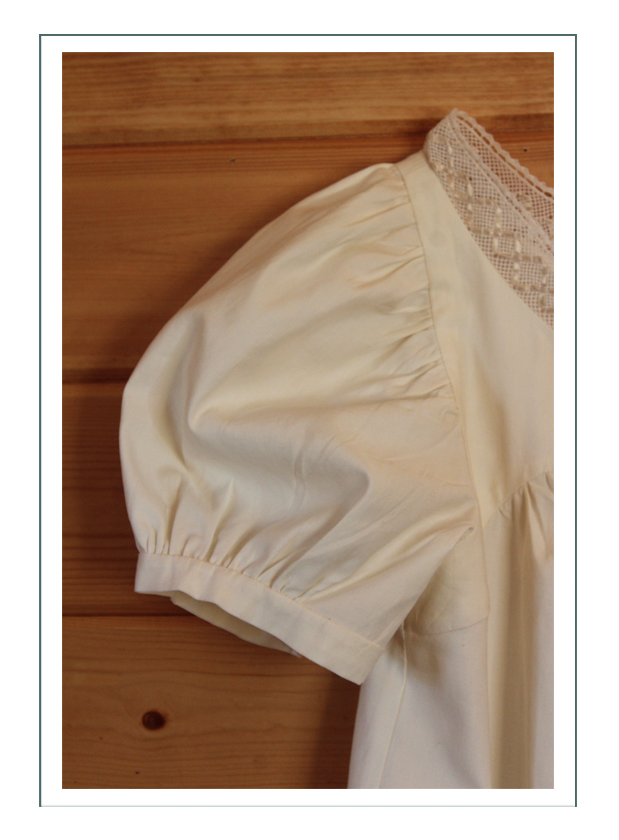
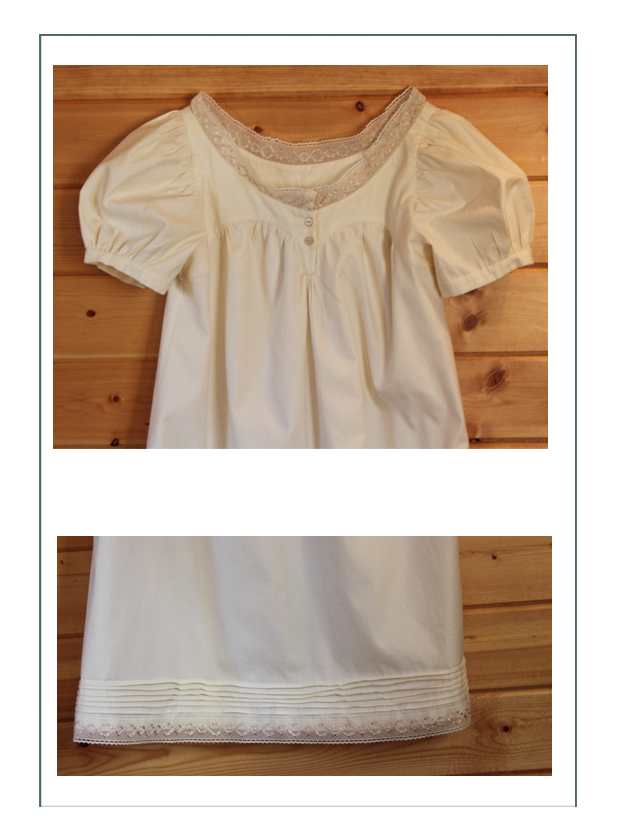
Drawers 1
Made to match Chemise 1, these are “split drawers”. Fully split to allow Kristi to use the toilet, they are of sateen unbleached cotton. Again attempting a flat front and emphasis on small waist (and large rear end), these we felt were a bit short in design, and a bit too high of quality for the trail. Both Chemise and Drawers 1 would be something Kristi’s character would carry in a trunk from her wedding day.
We applied the same cotton edge lace and pin tucks as the chemise, but felt further lace would be too extreme. The lace used on Chemise 1 feels a bit too “renaissance” rather than Victorian.
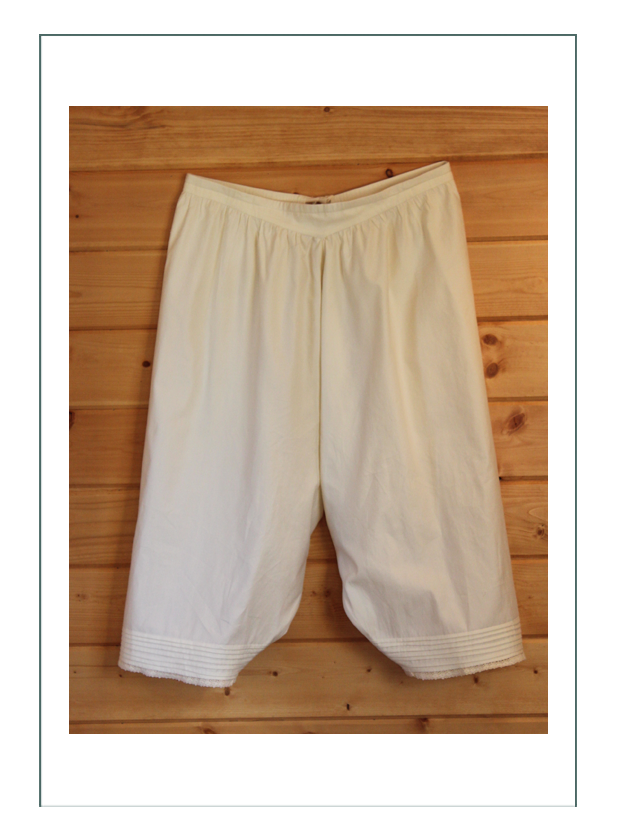
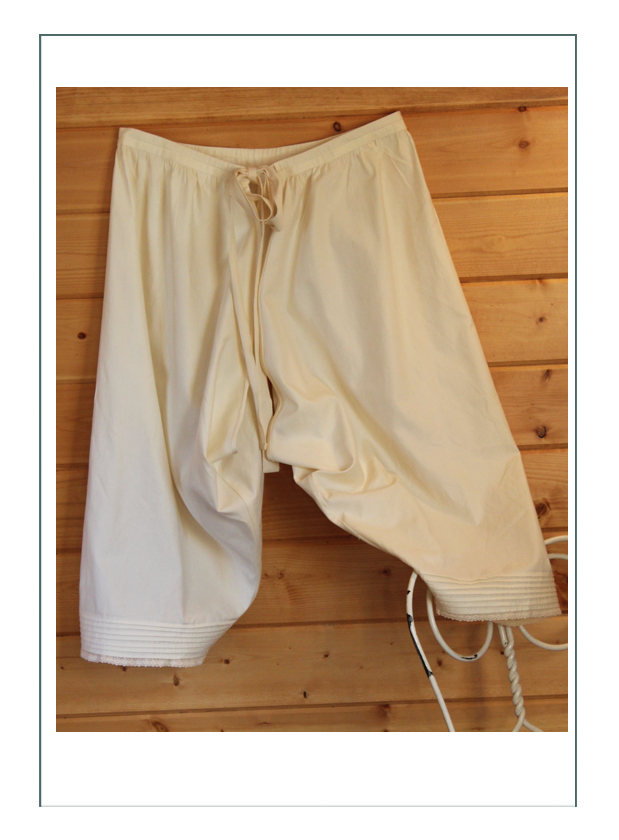
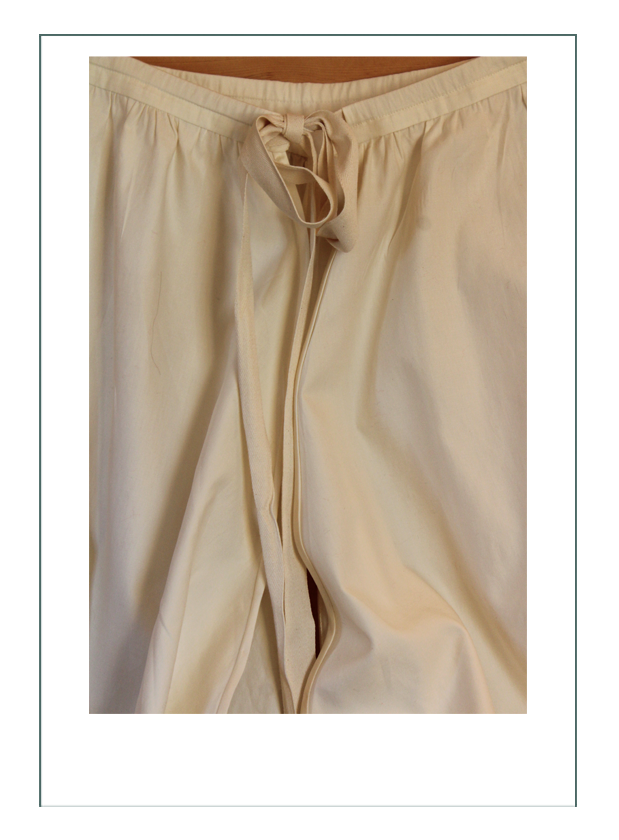
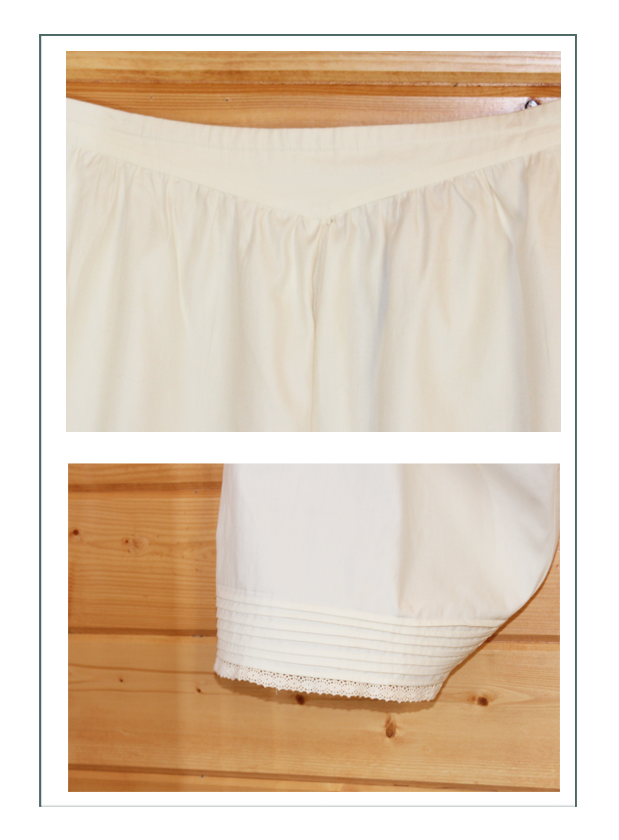
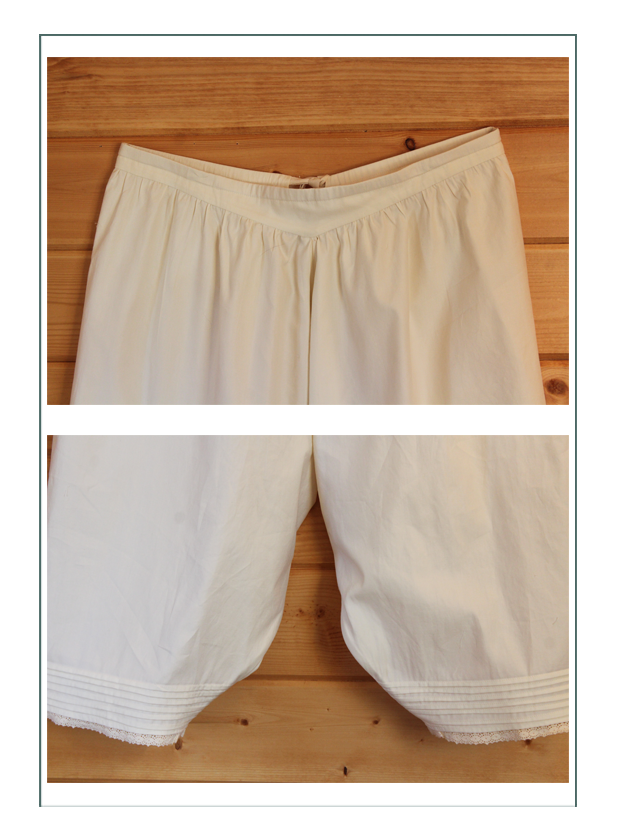
Chemise 2
Fixing a few things; simplify, lighten the weight to a simple unbleached muslin that is more “trail worthy”, shortening the chemise, and lengthening the drawers. This should have a better “tuck”, better fit under the drop shoulder of the blouse, and be extremely flattering on the shoulders. It will give the hourglass silhouette.
The decision as to which to use will depend on fit and comfort. These are to be the bottom most layer of undergarments for this character, so they must be very durable and washable. Without Kristi to fit the shoulders, we keep our fingers crossed there will be no alterations.
This era used commercial patterns and sewing machines; so our flat pattern modifications of a real pattern was appropriate. There was still more than 3/4 of the stitching by hand, for much detail and handwork. Of particular note again is the lovely real pearl button with silk twist hand made buttonhole loops, and organic cotton laces and threads.
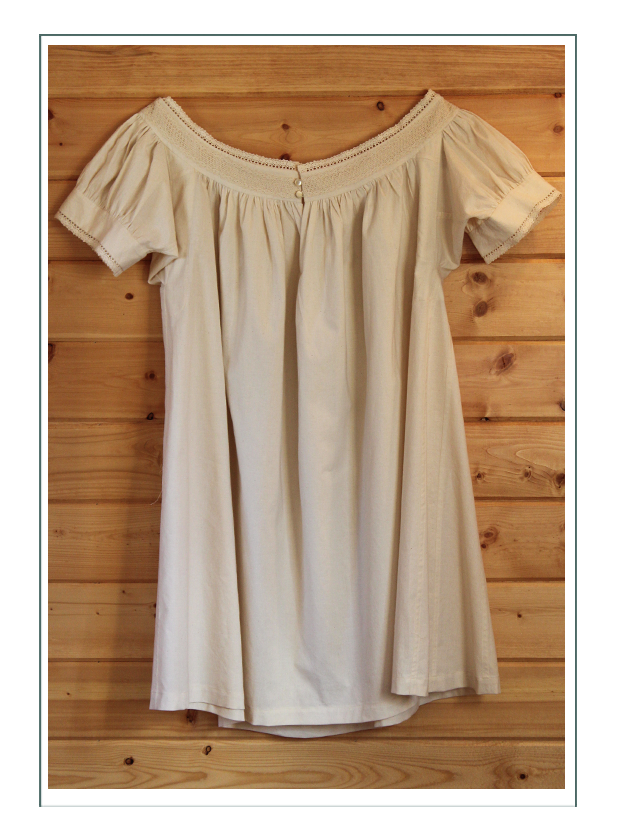
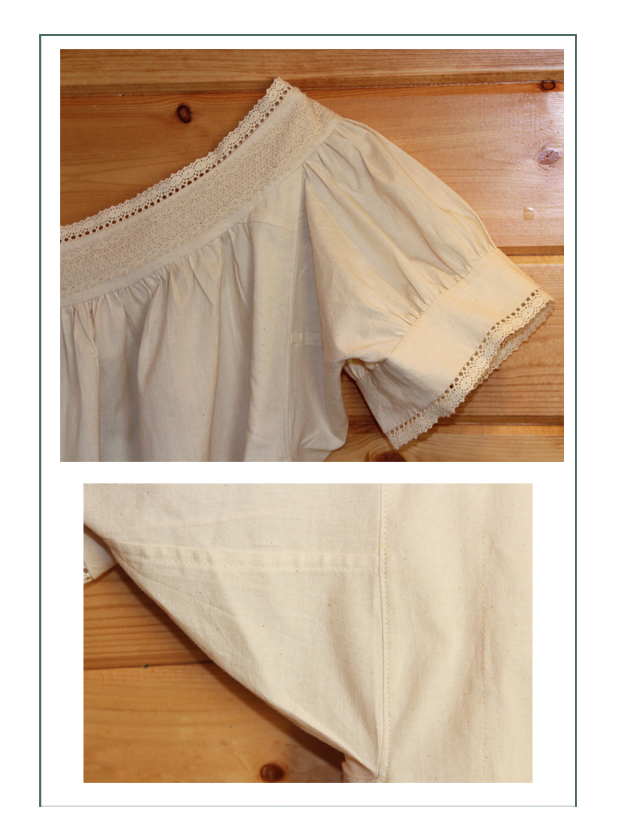
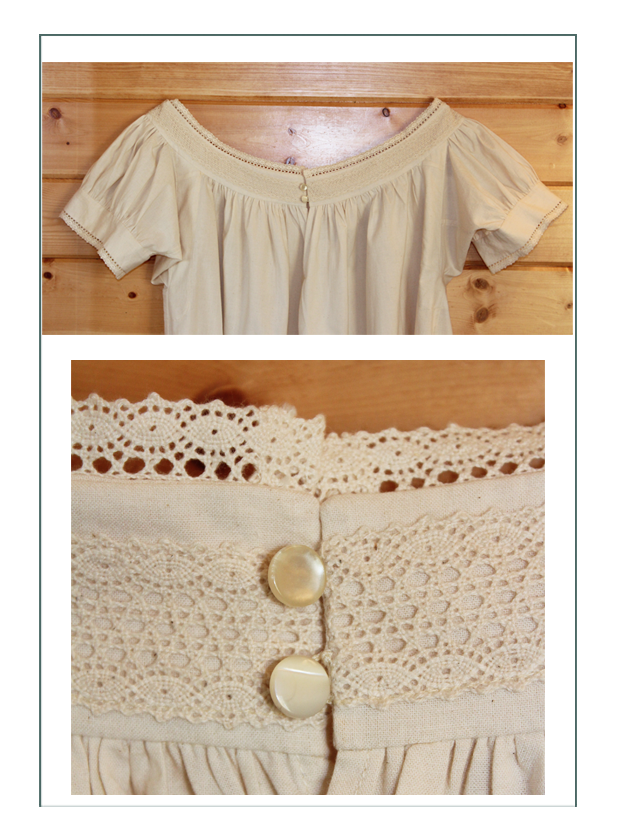
Drawers 2
Matching the lightweight unbleached muslin of Chemise 2, these have similar handwork and detailing which include organic cotton crocheted lace and cotton ties. These are fully split drawers again – from waistband to leg for use on the toilet. We made these ankle length more appropriate to the 1868, with silk ribbon ties to bring them up for an 1872 look. Ruffles are of self fabric and designed to be light, durable, and very washable without ironing.
The weight and feel of these should be right for the trail.


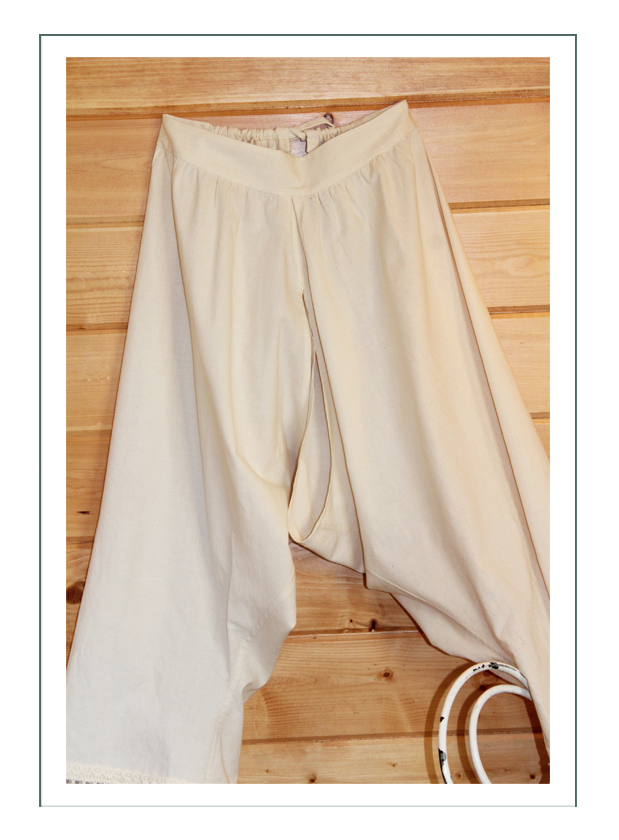
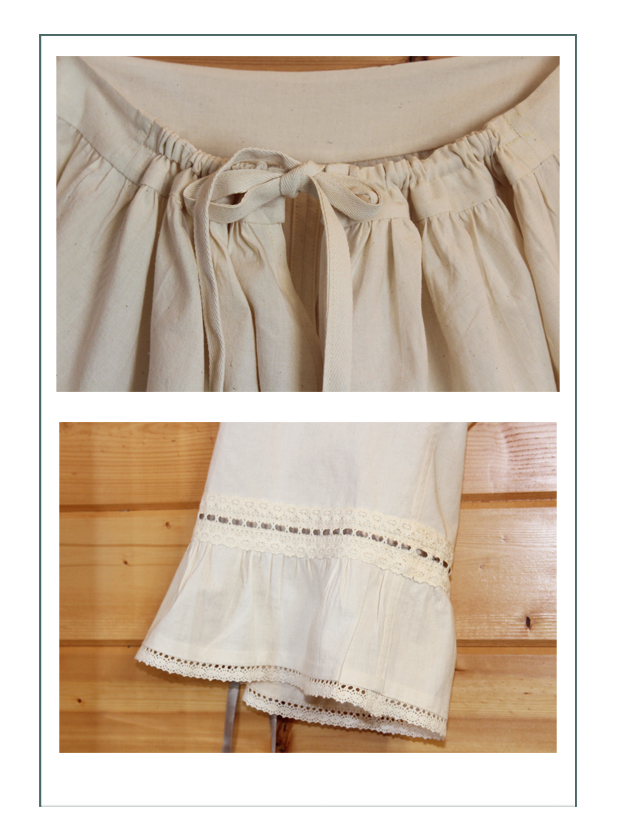 Hoop
Hoop
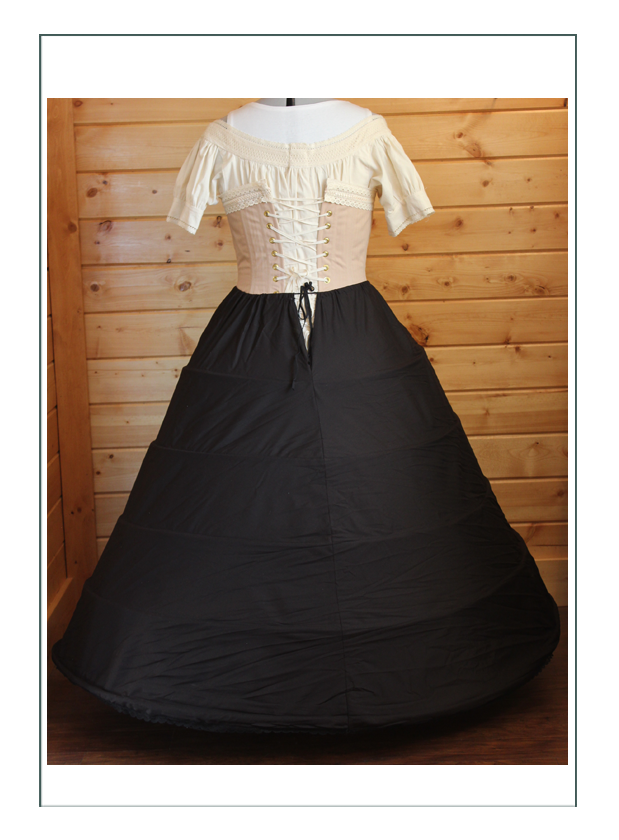
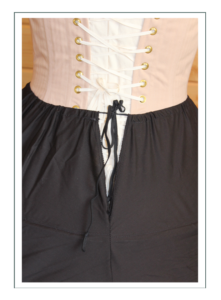
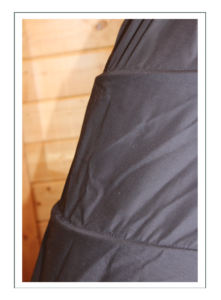
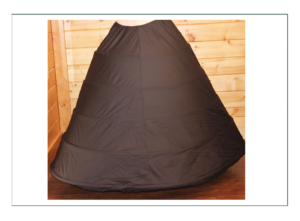
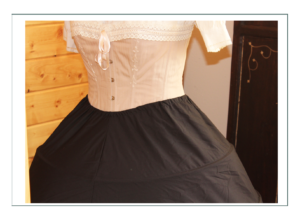
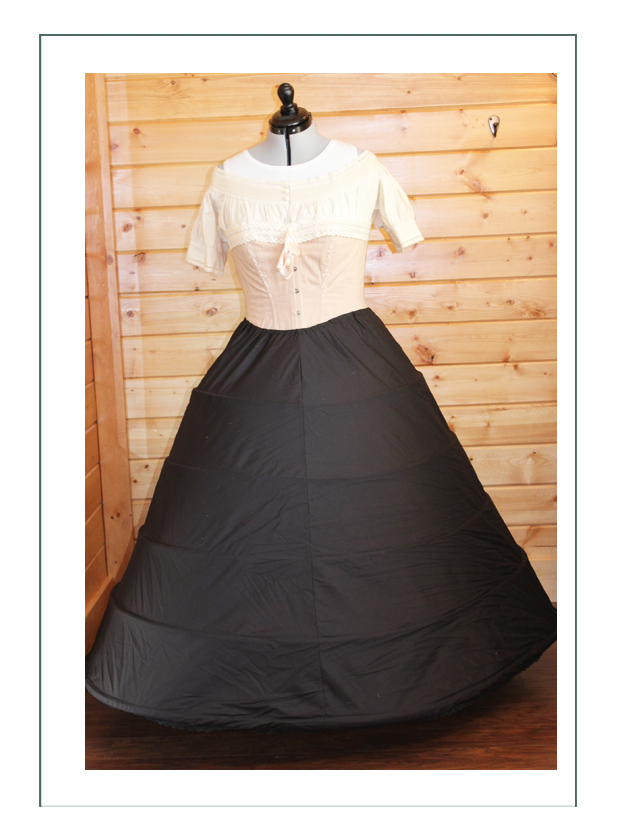
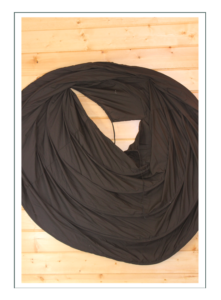

Skirt (1868-72)
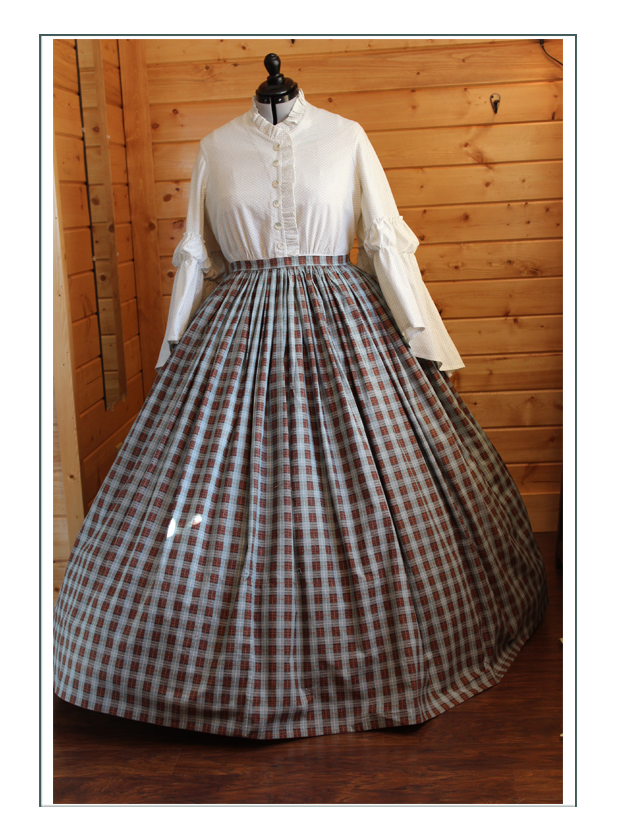
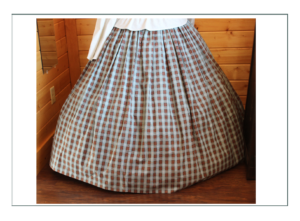
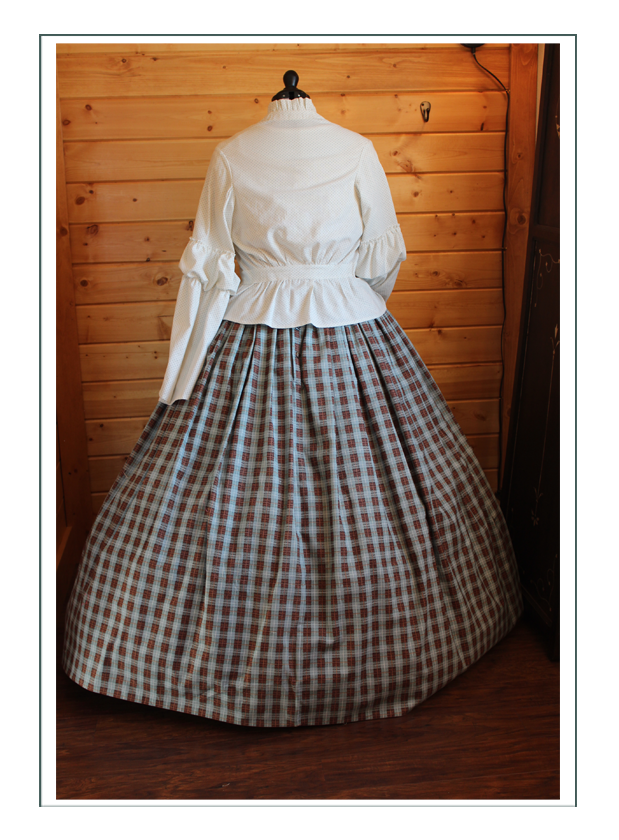
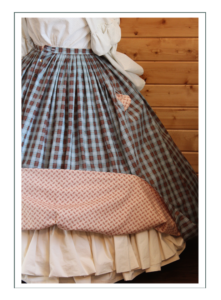
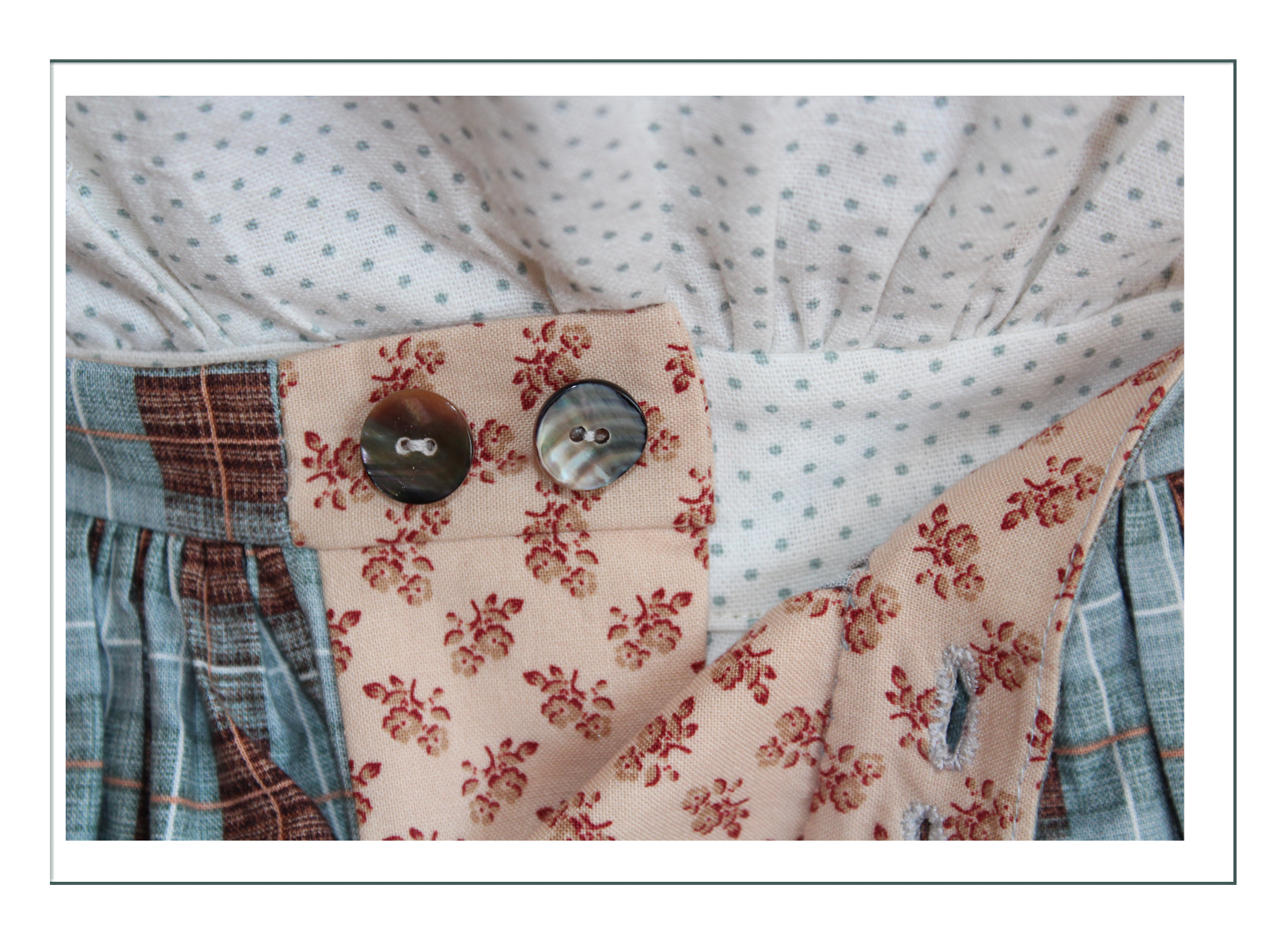
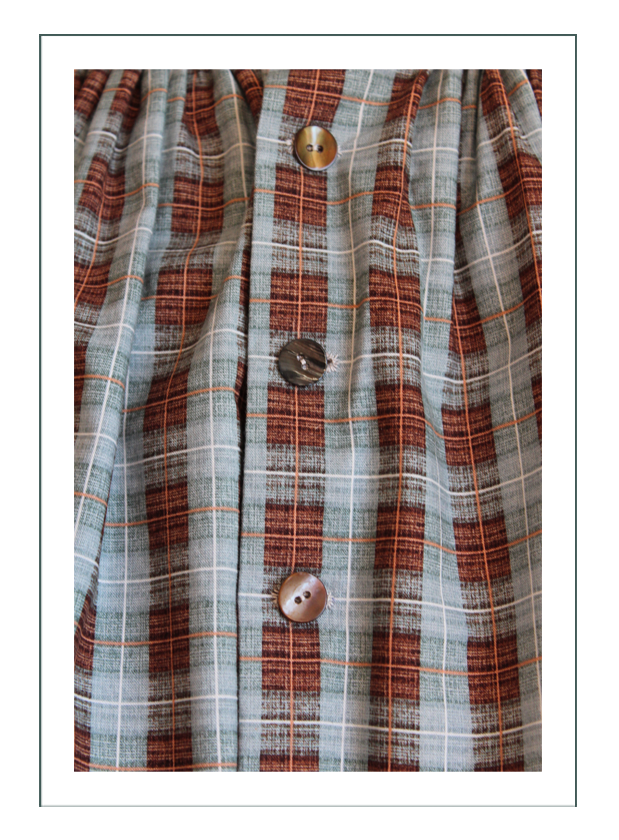
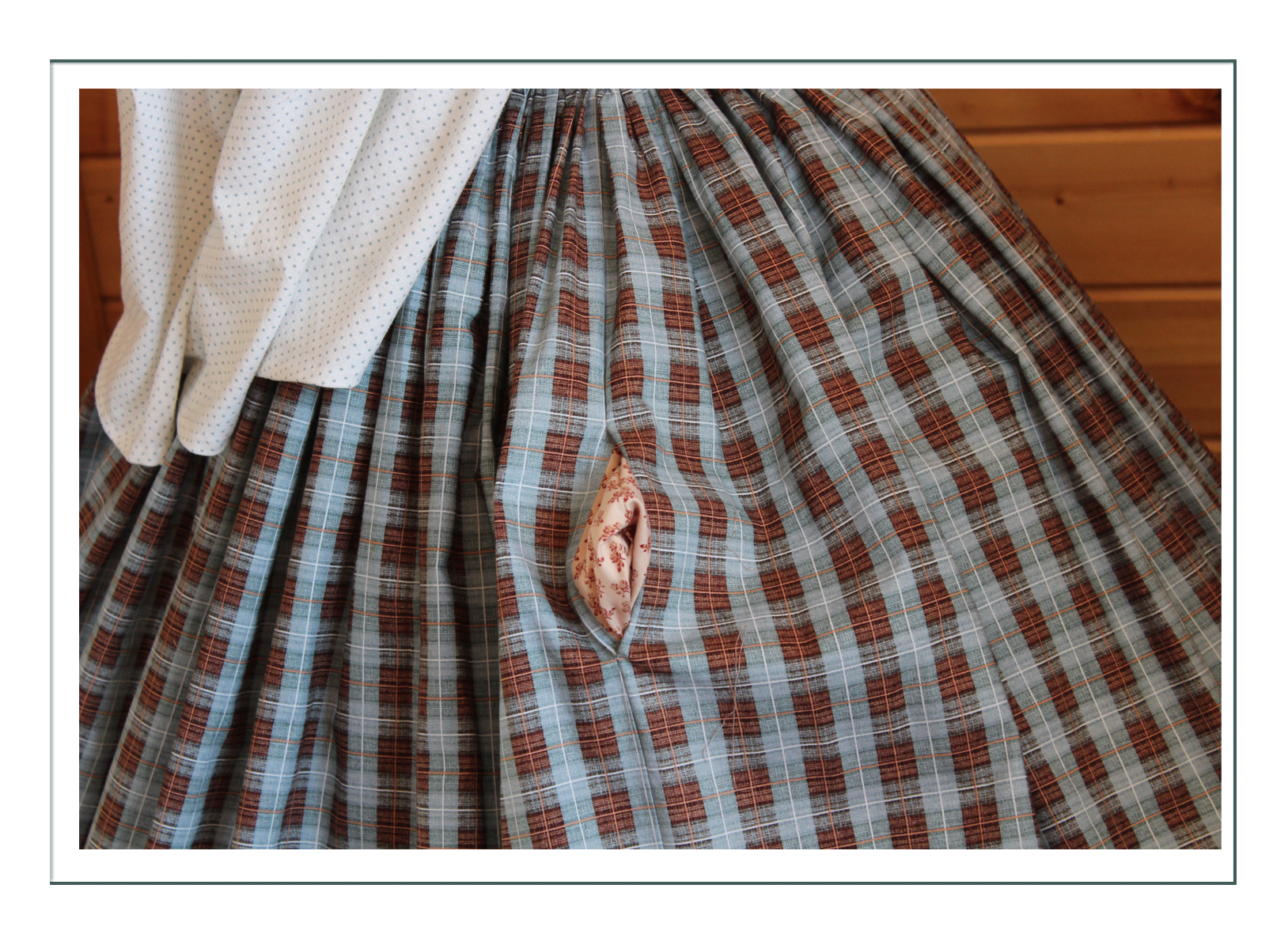
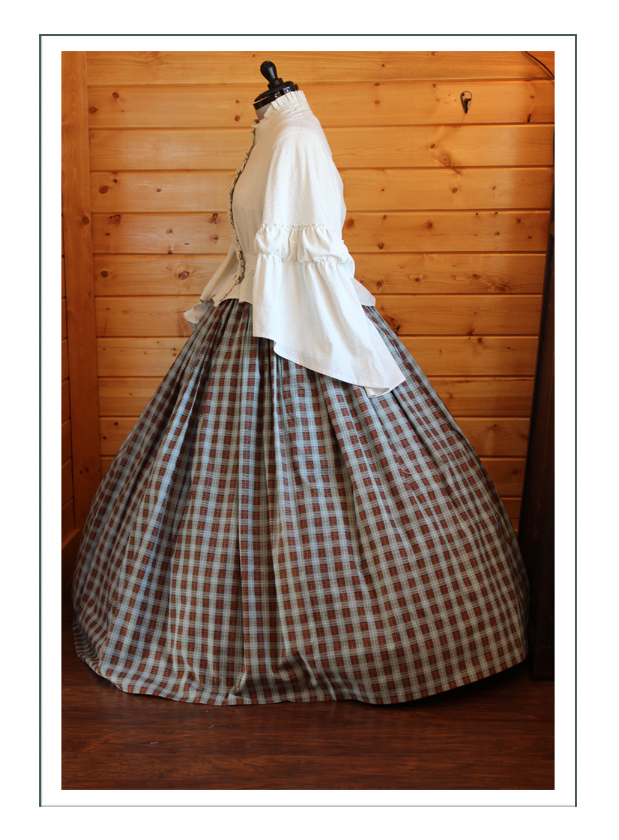
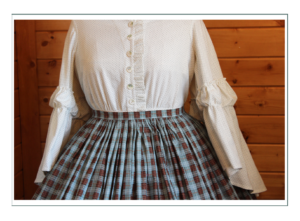
Bodice (1868-72)
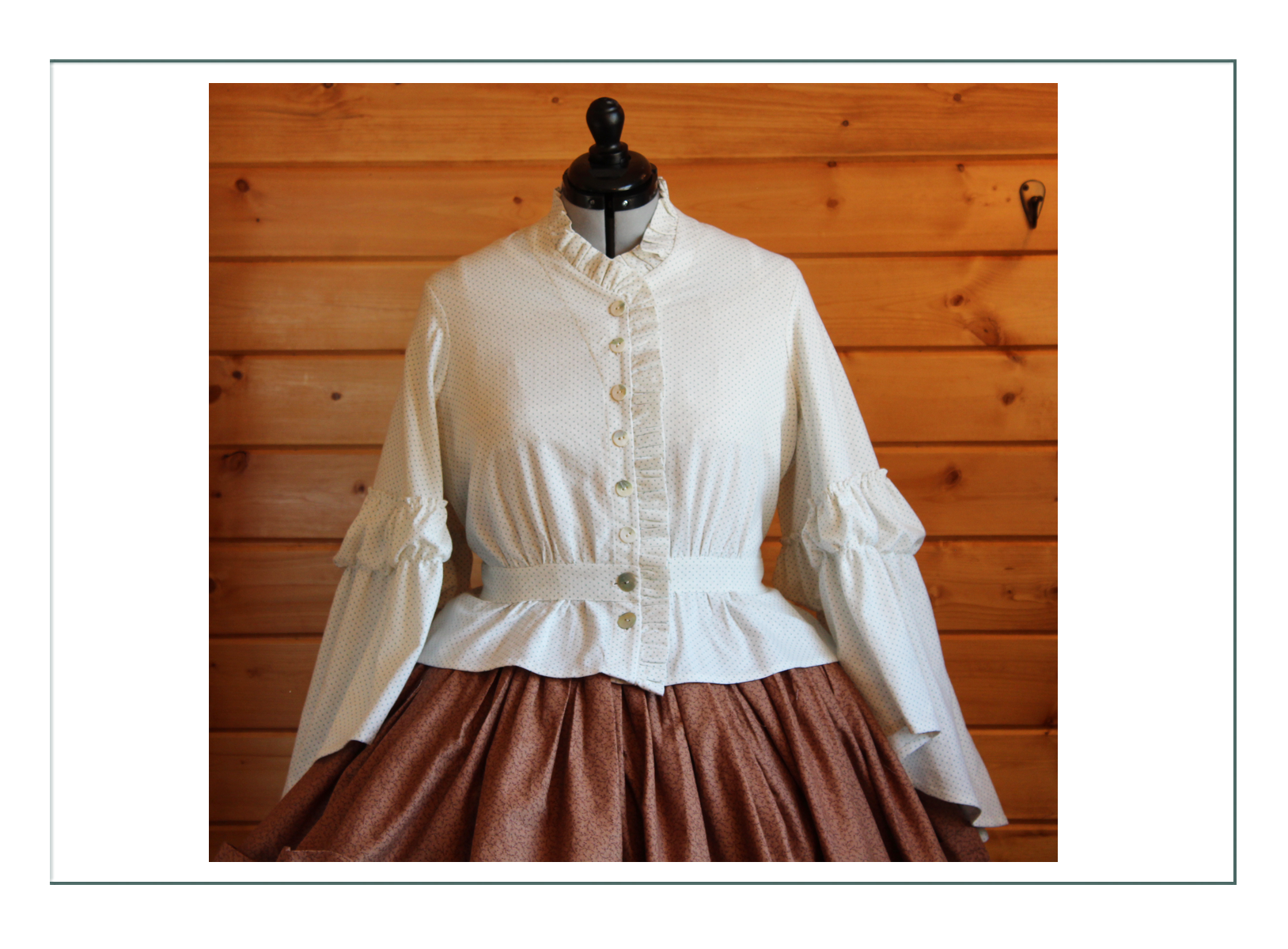
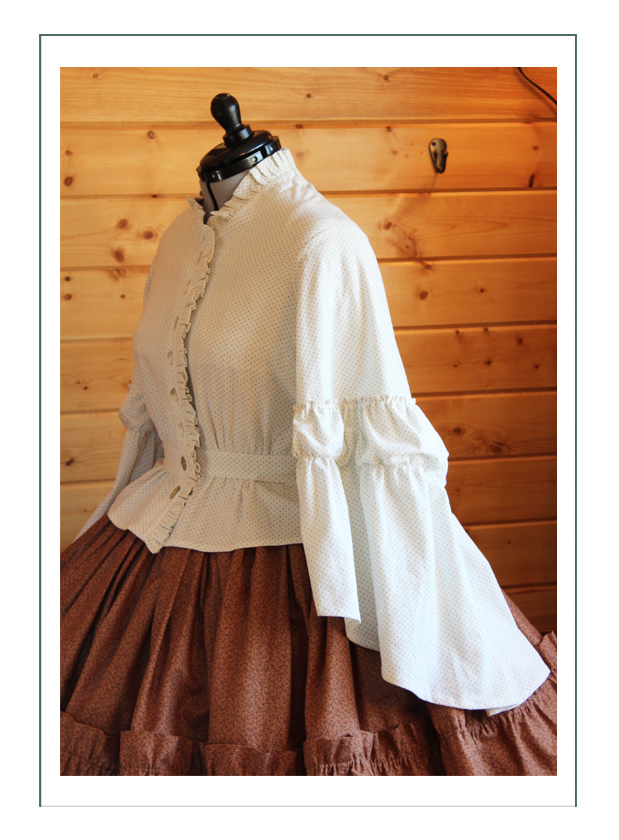
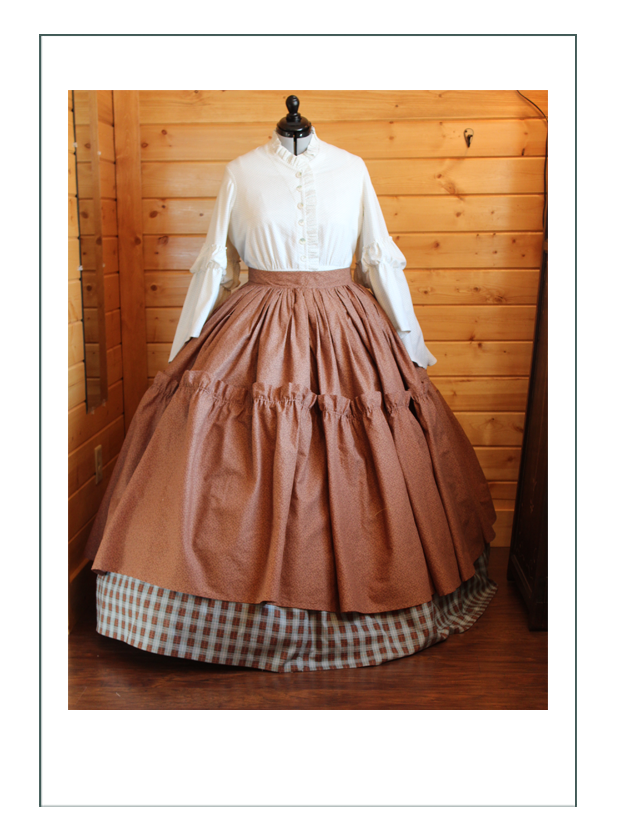
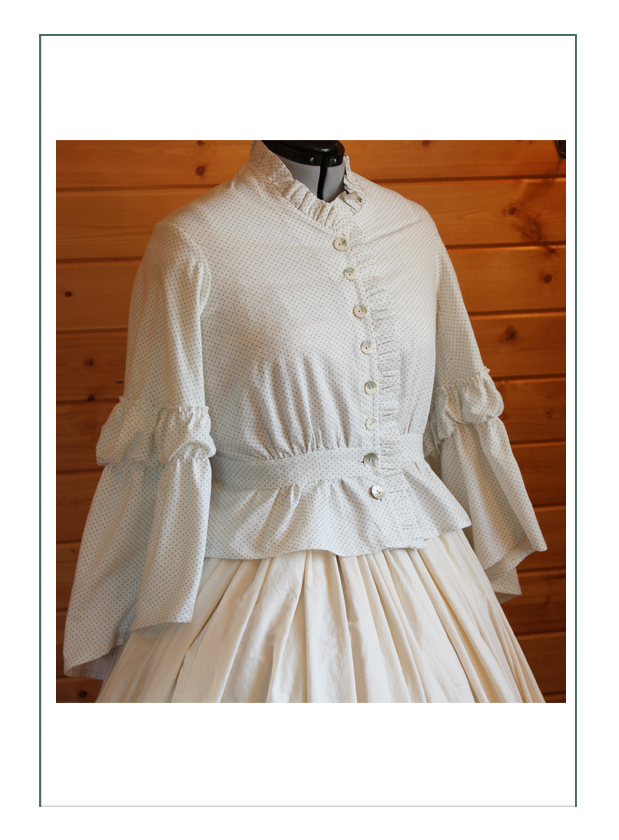
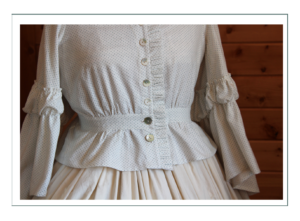
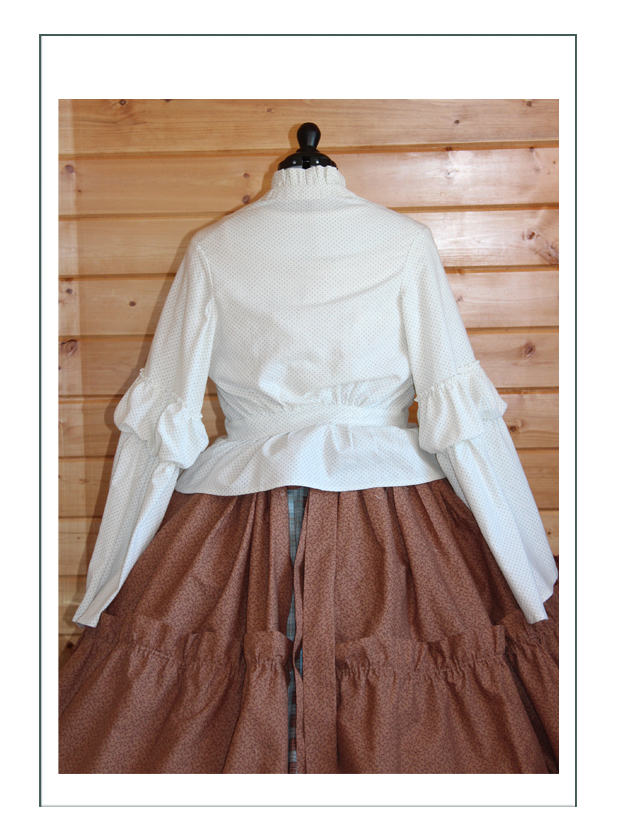

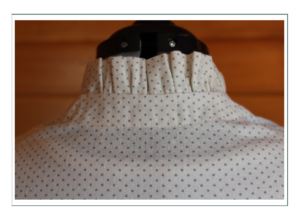
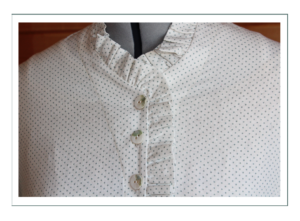
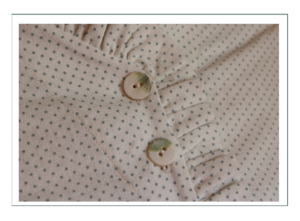
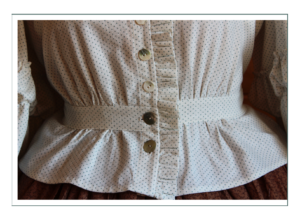
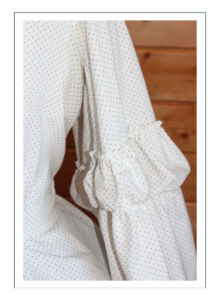
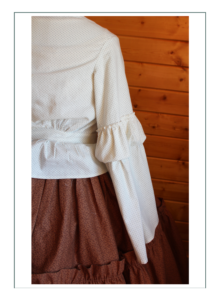
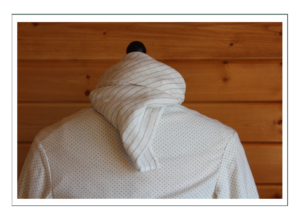
Apron/Drape (1868-72)
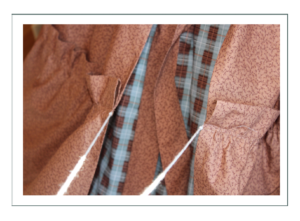
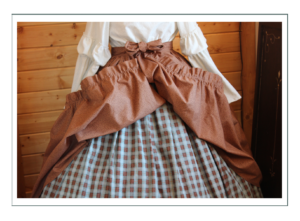
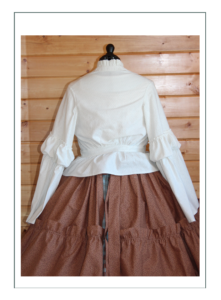
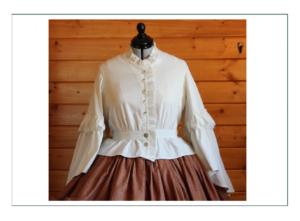
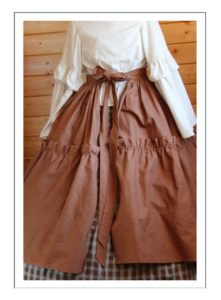
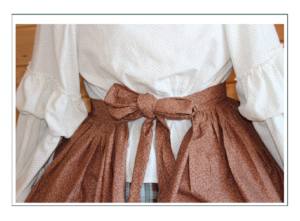
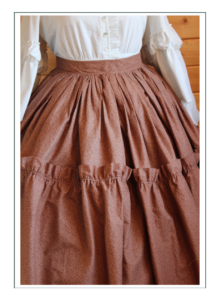
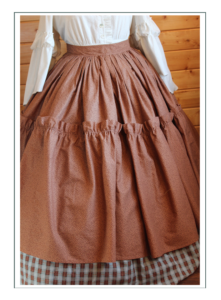
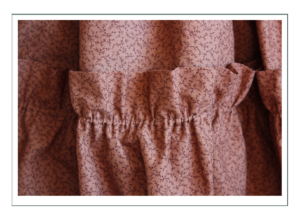

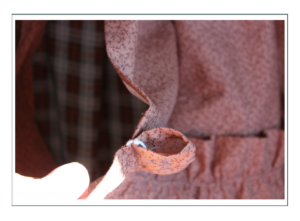

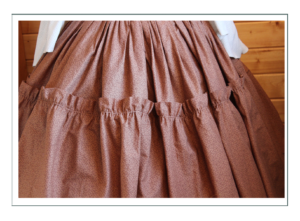
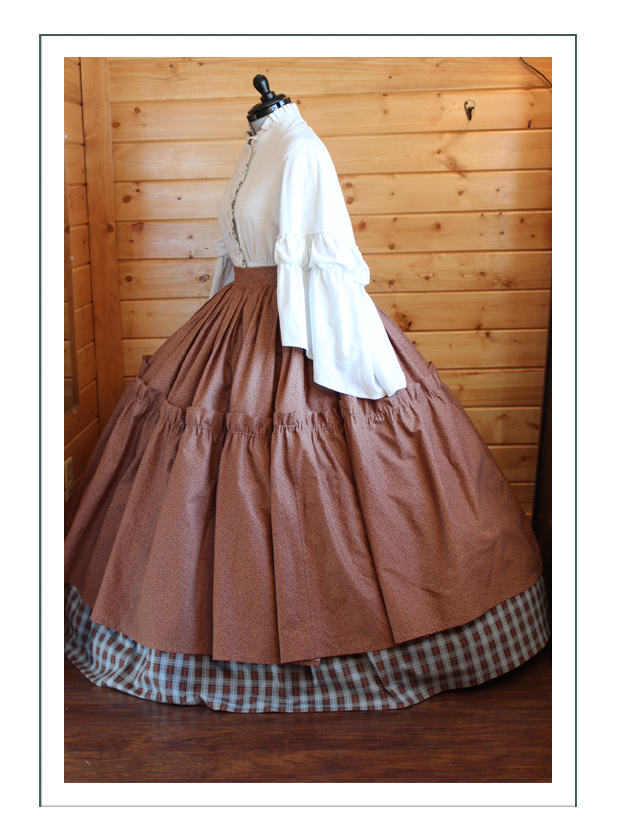
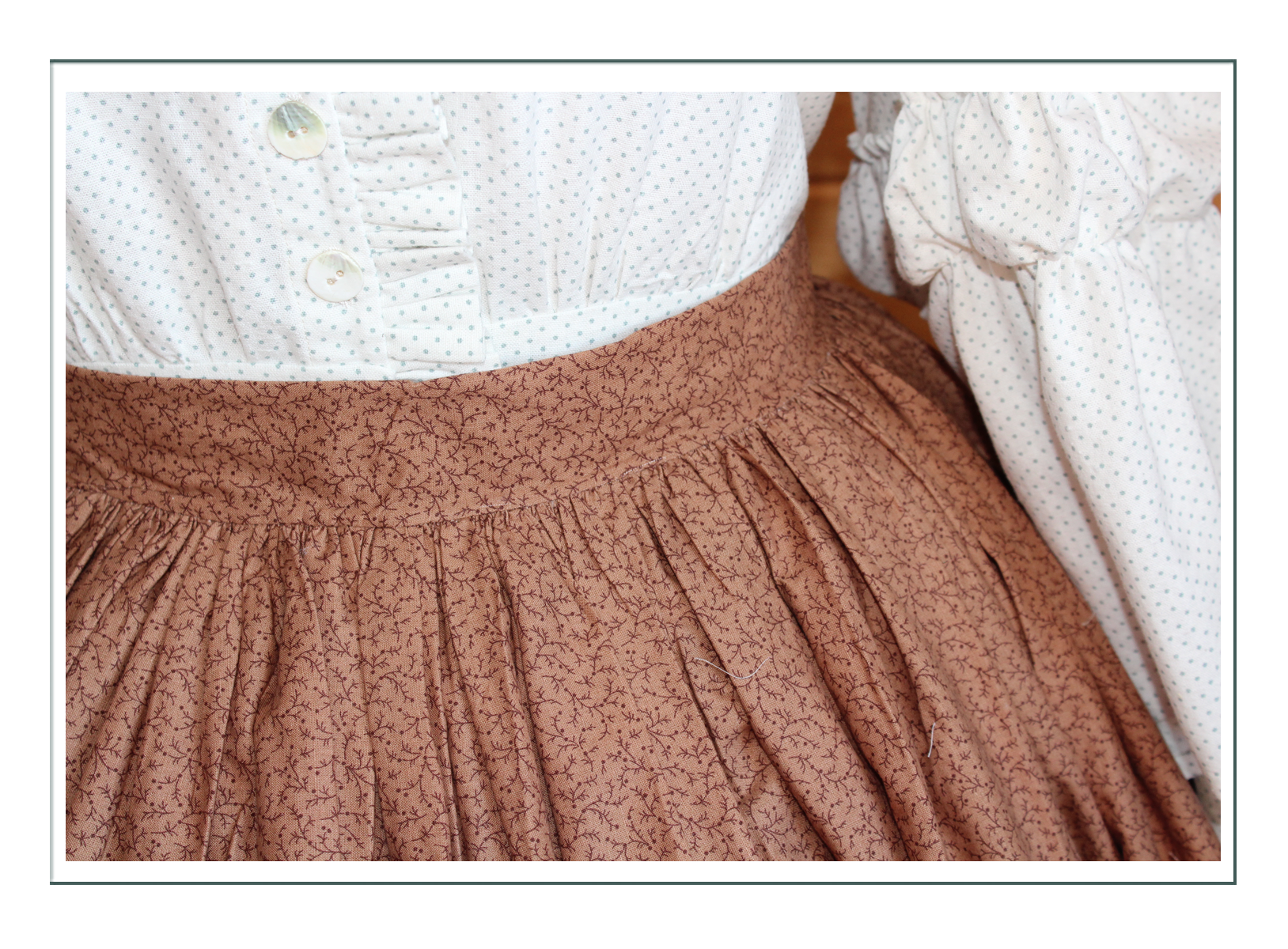

Dress (1880’s)
Boots, Stockings, & Gloves
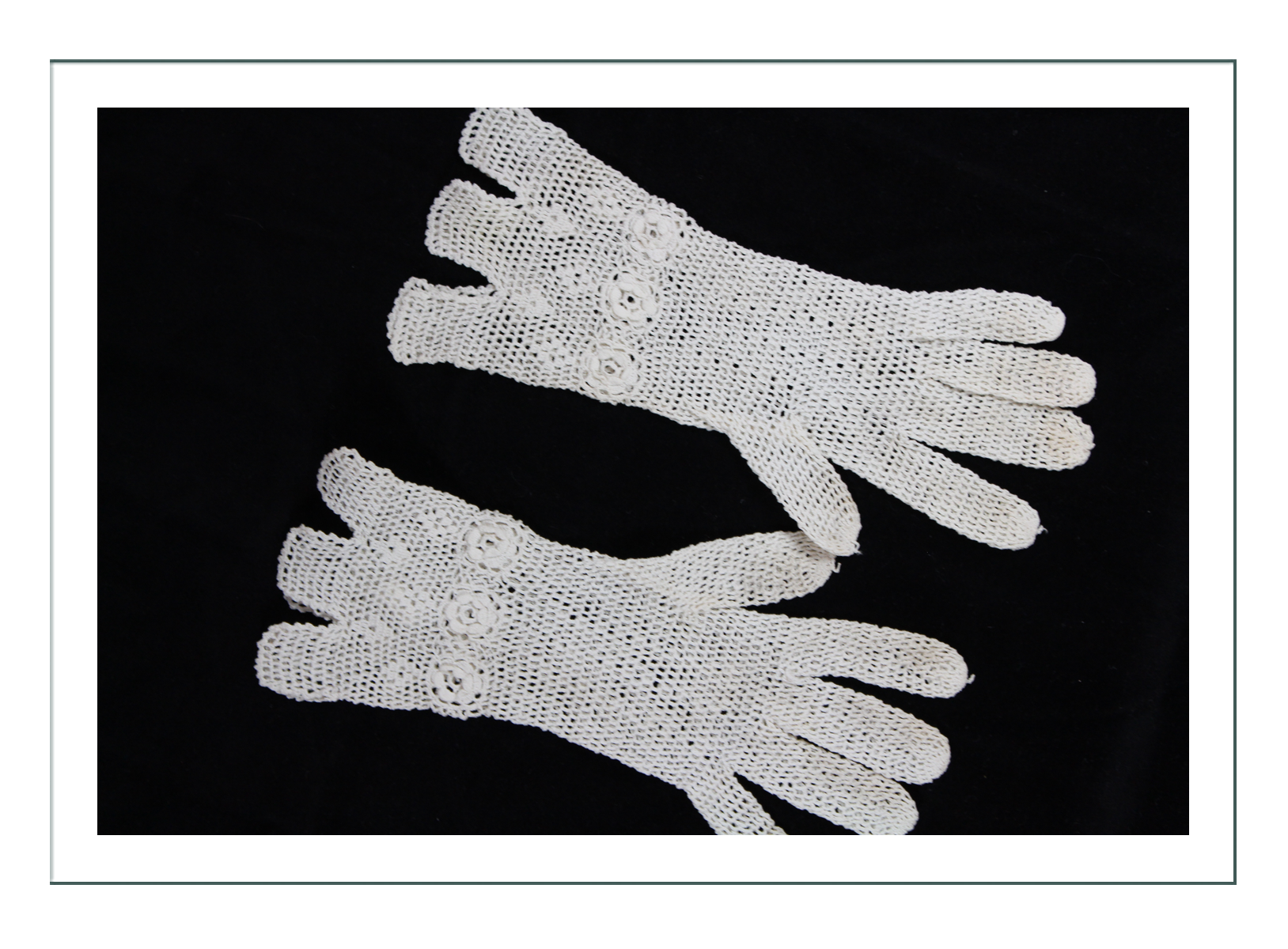
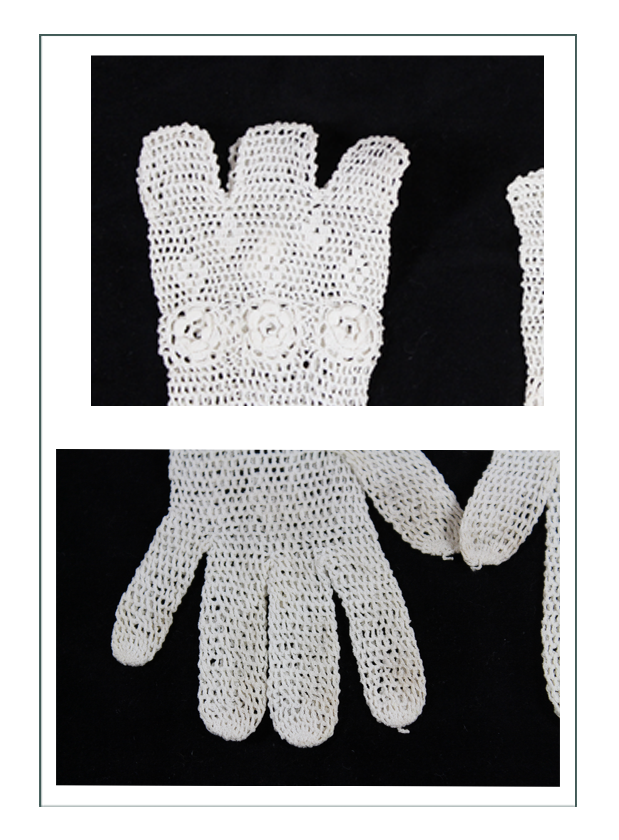
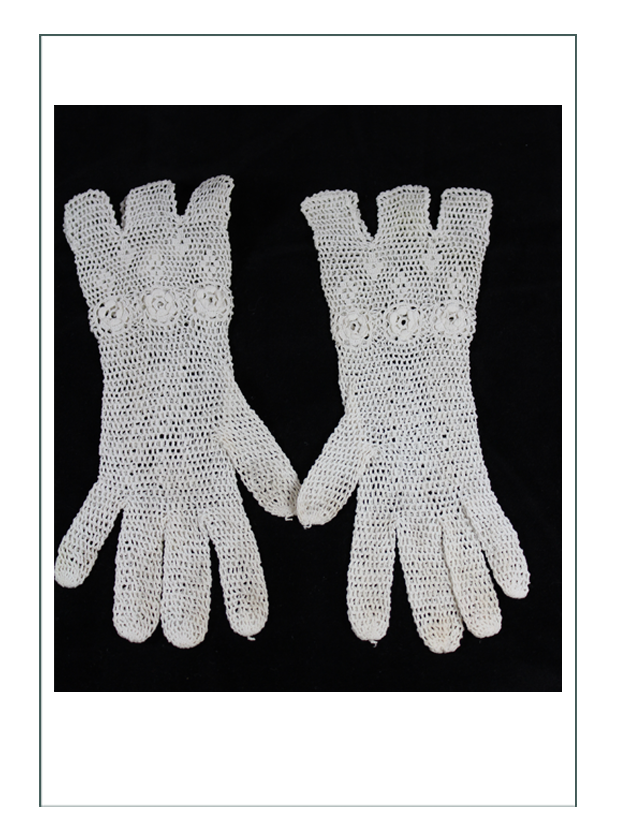
Replacement Gloves. The first pair were too delicate. These are AUTHENTIC too!
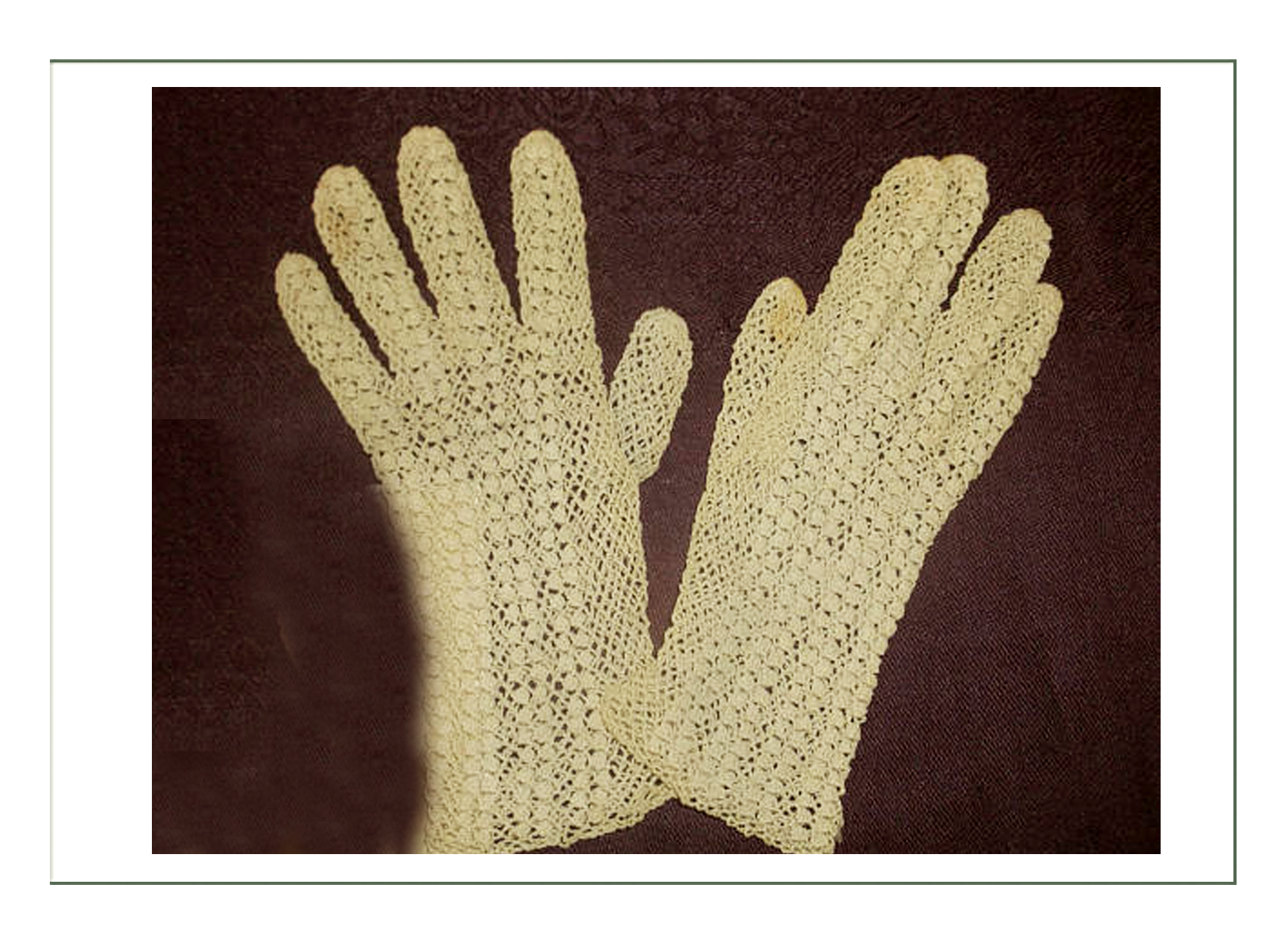 Boots
Boots
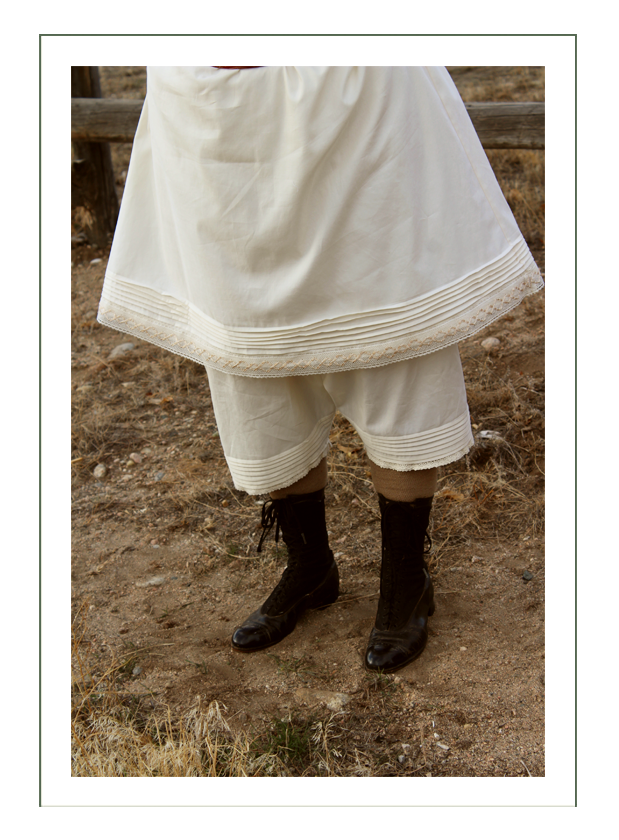
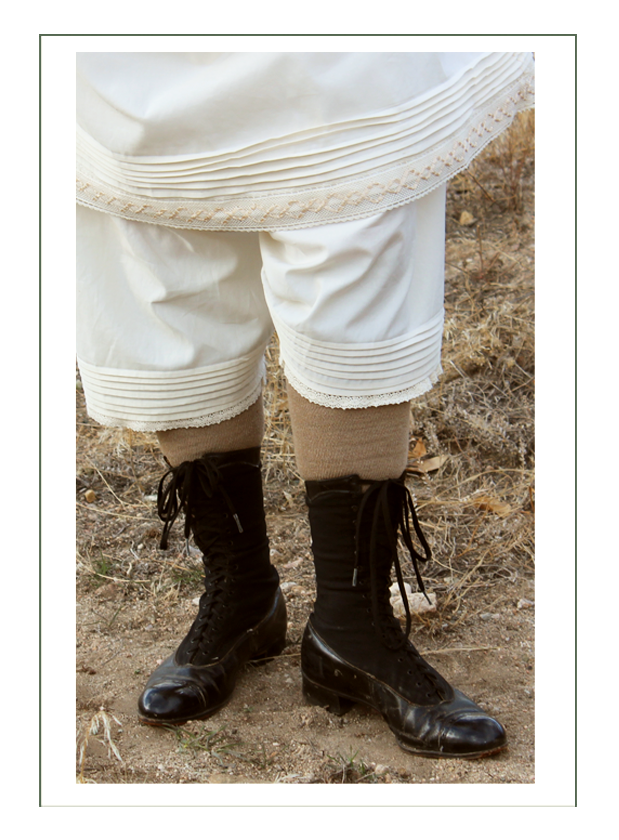
Jewelry
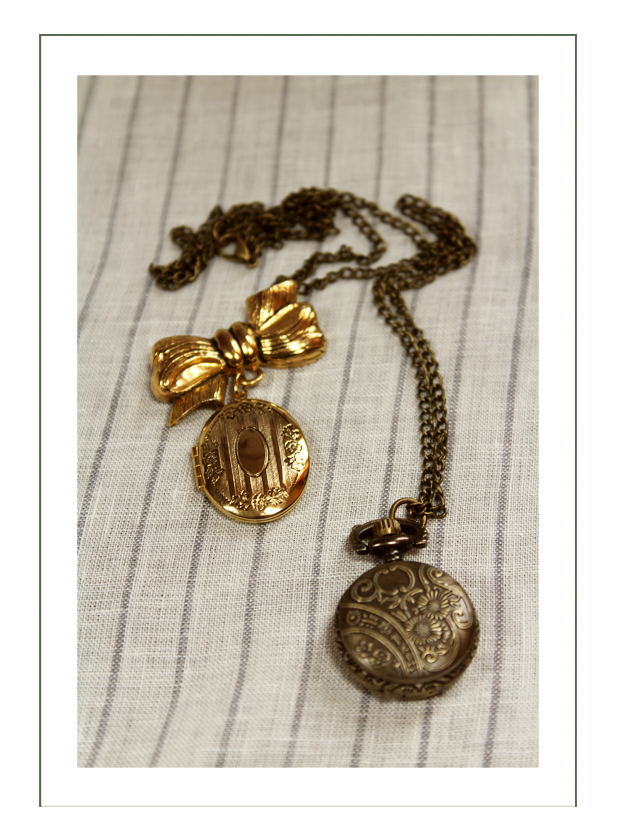
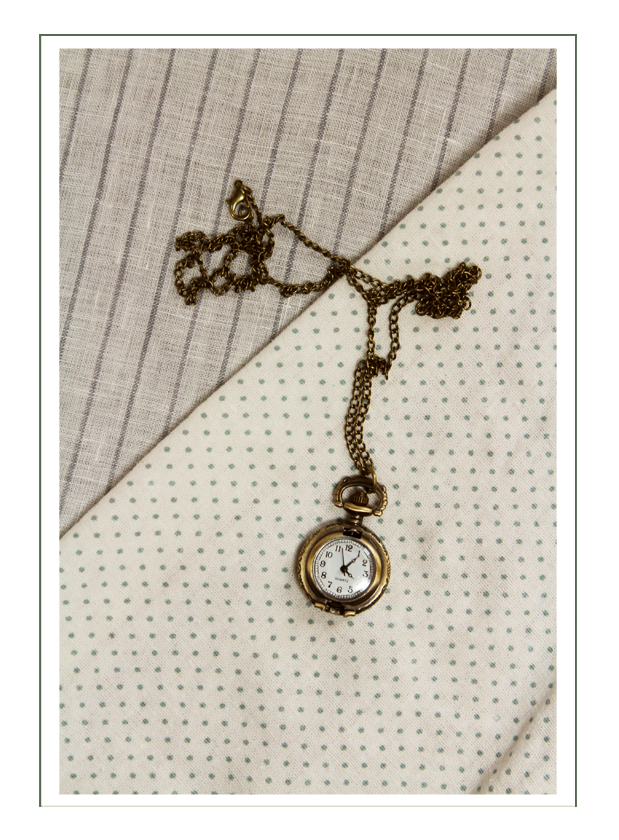
Silk Saucer Bonnet (1868-72)
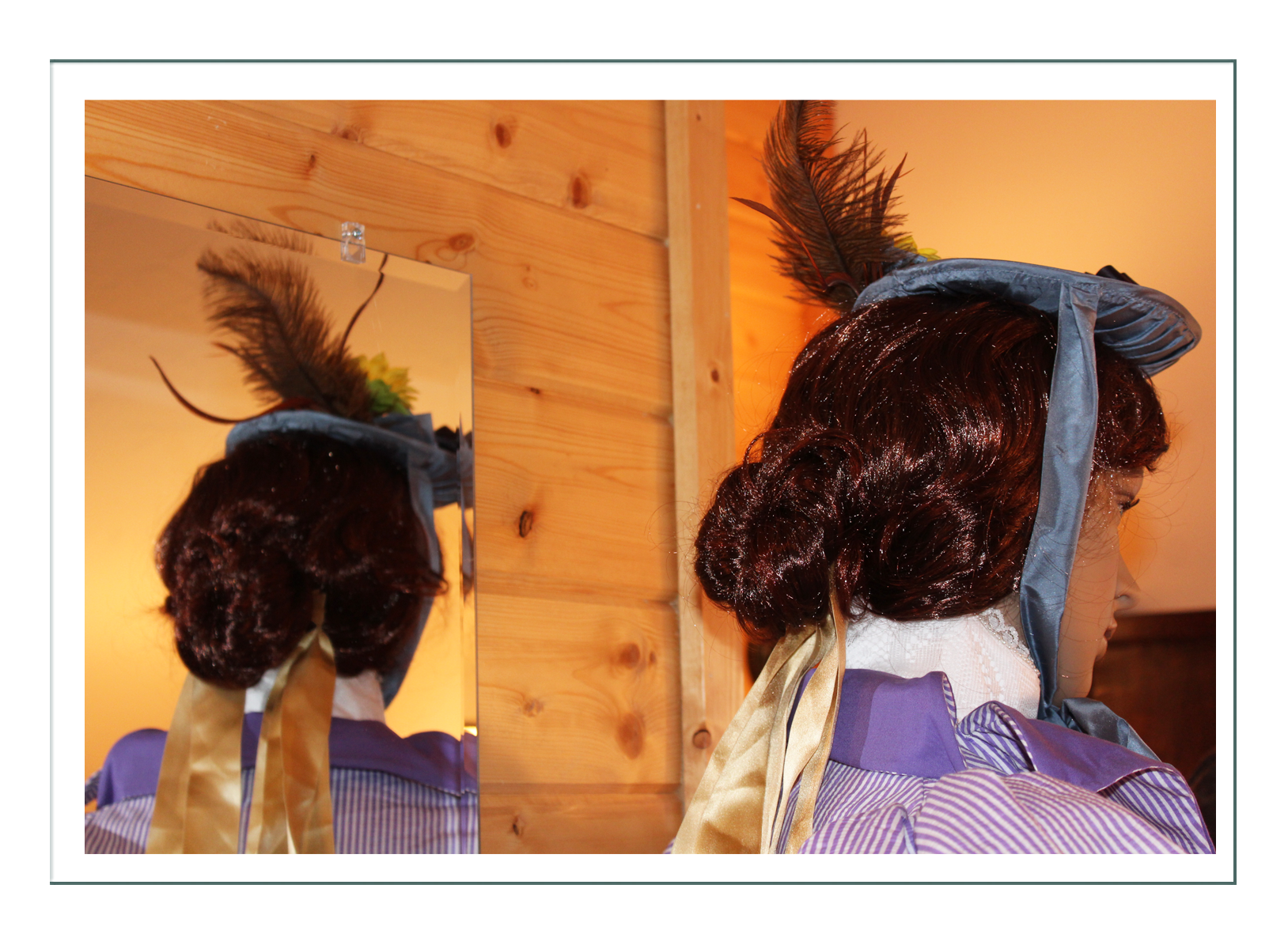

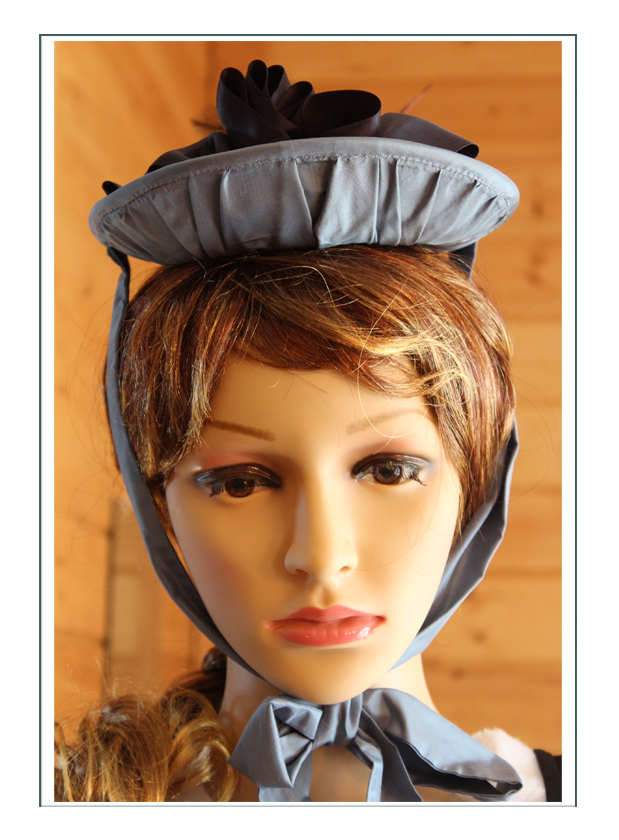
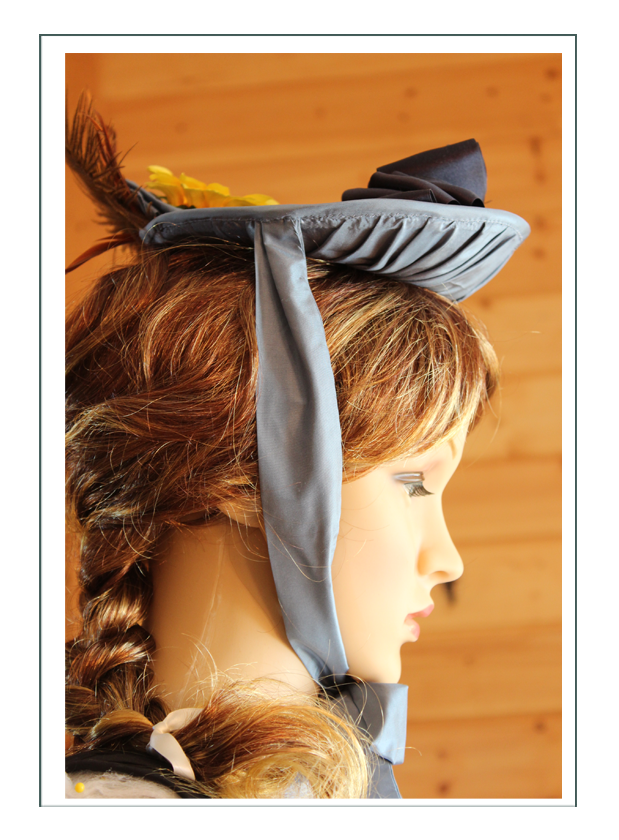
Slat Bonnet (1880’s)
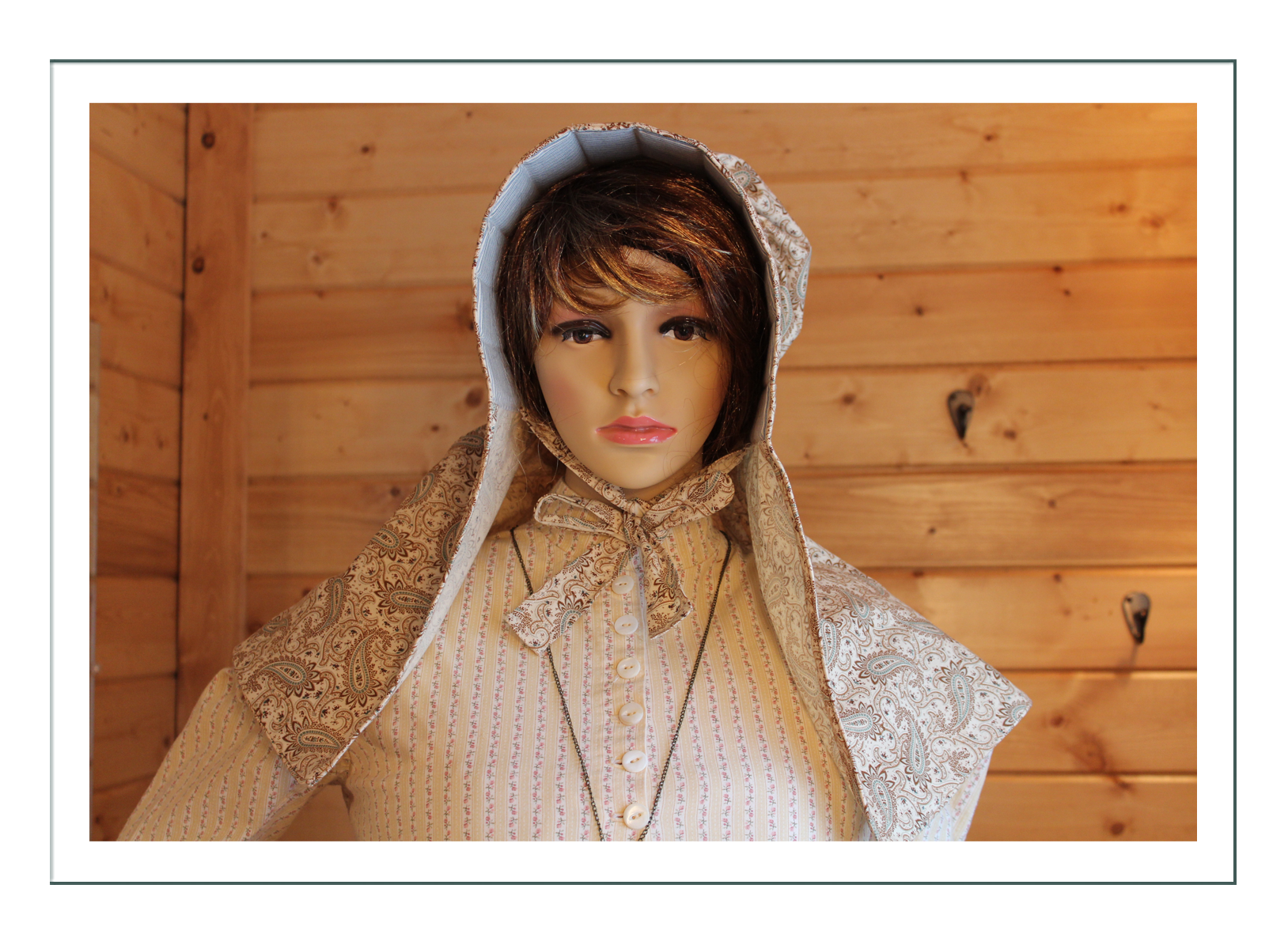
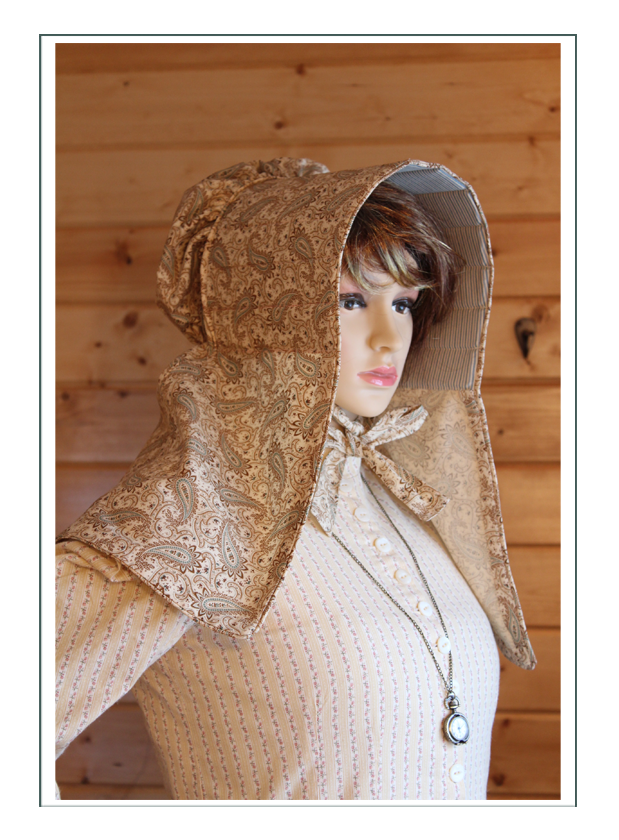
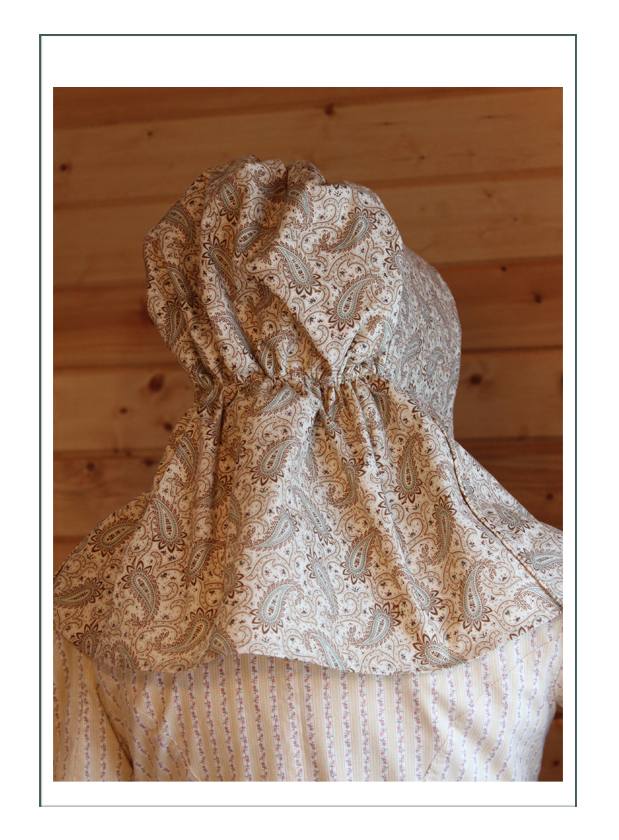
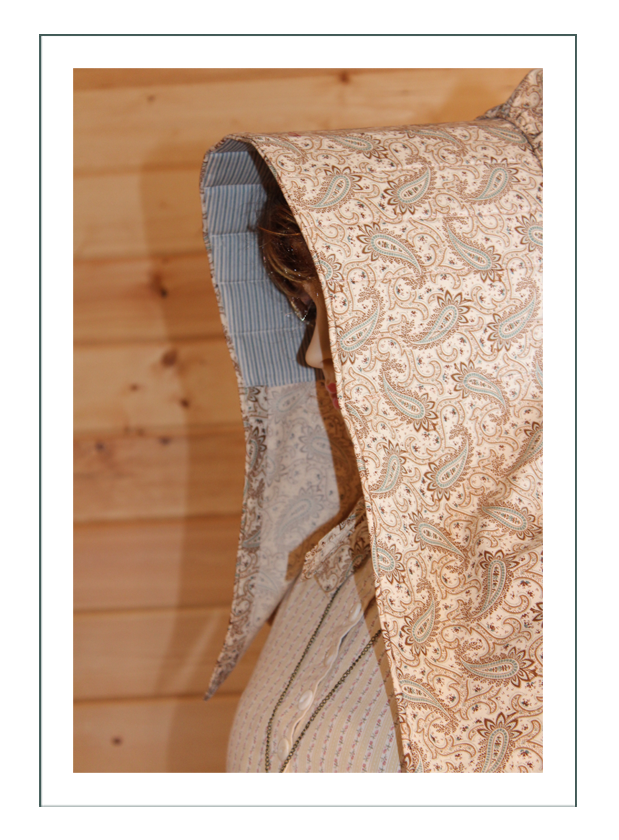
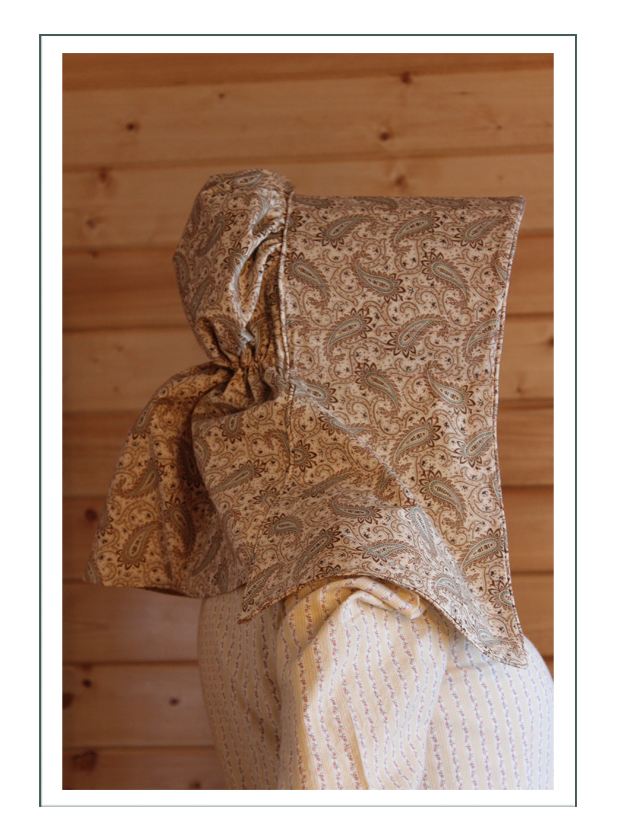
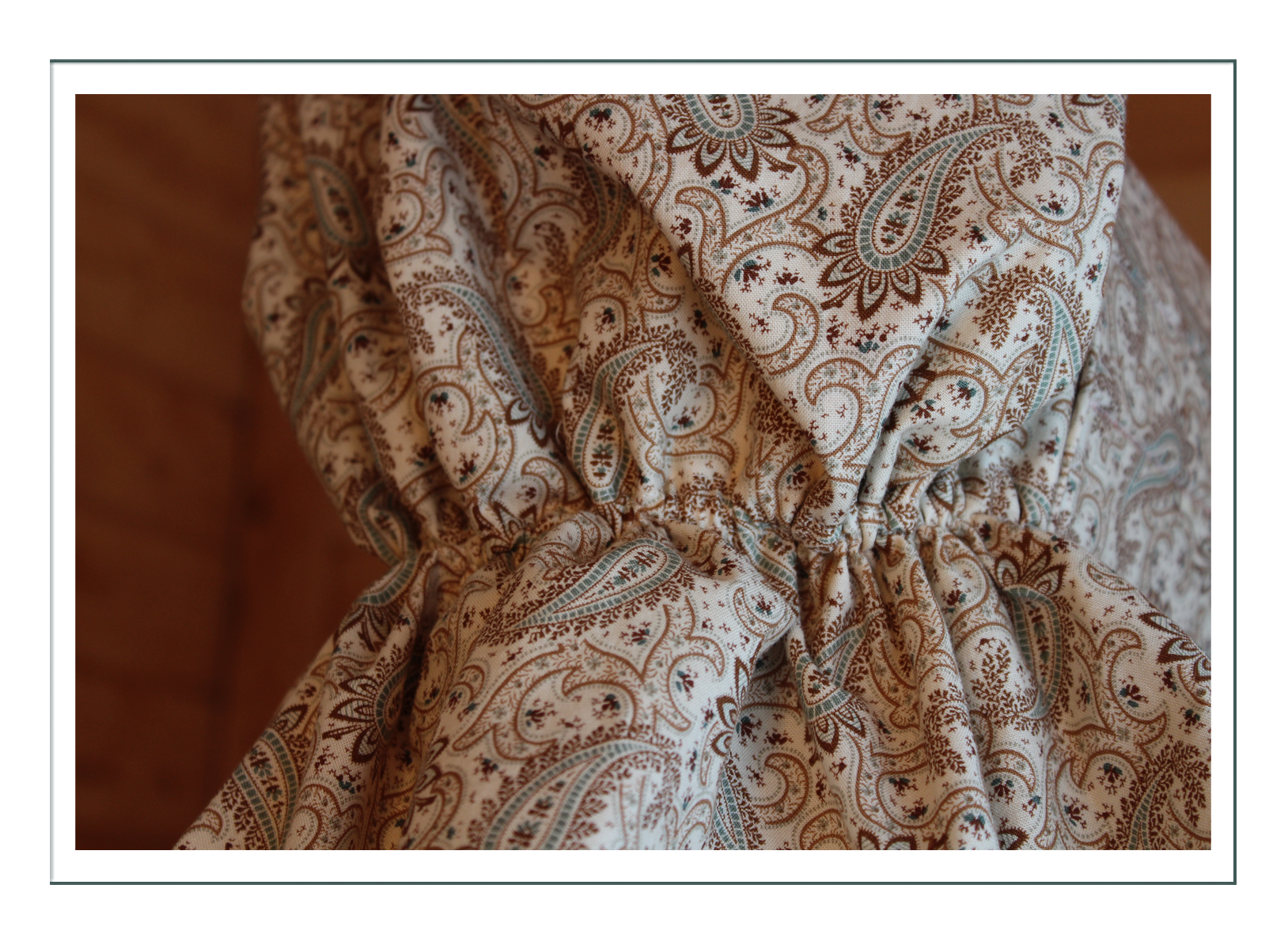

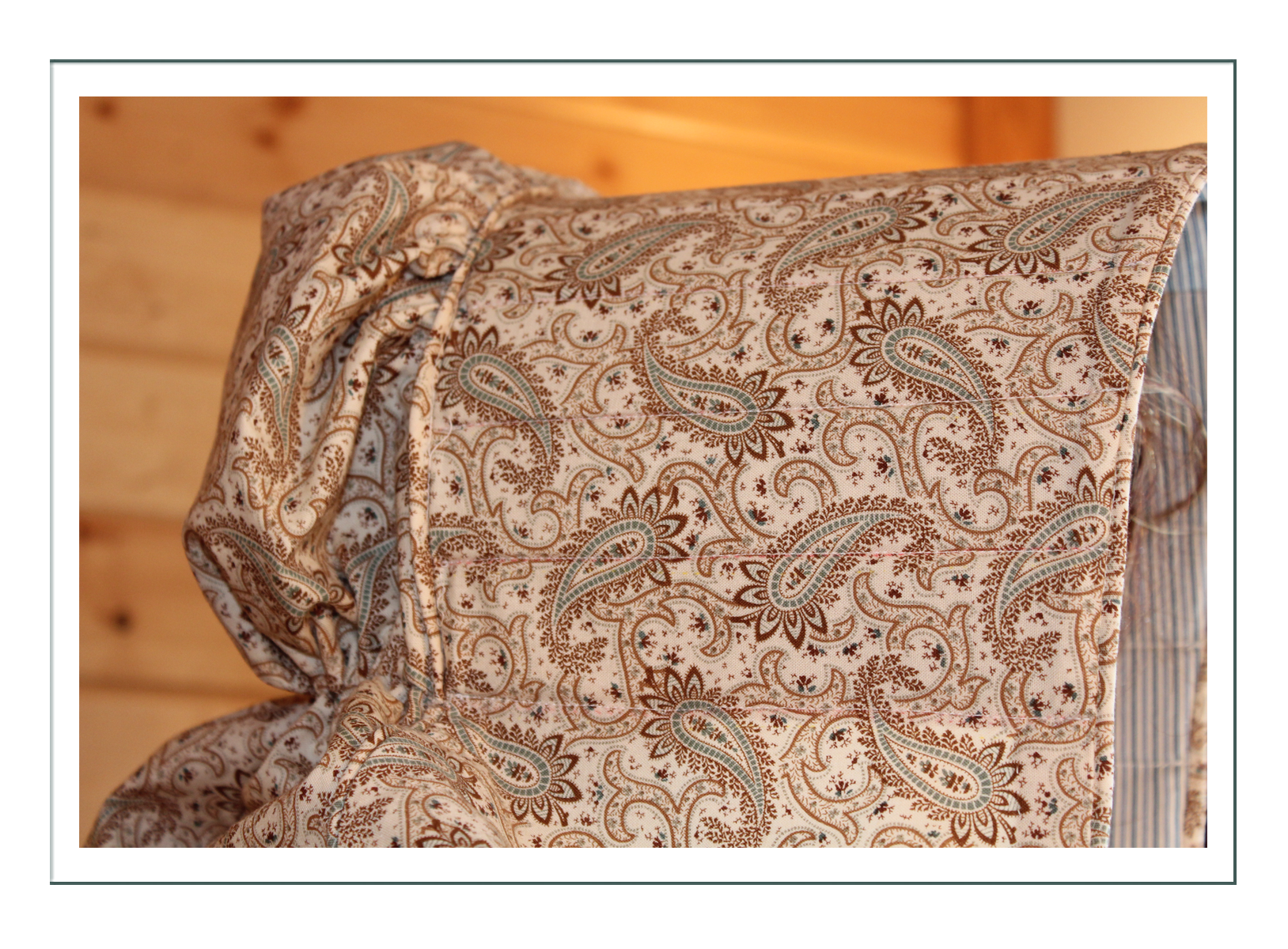
 Dress Rehearsal
Dress Rehearsal

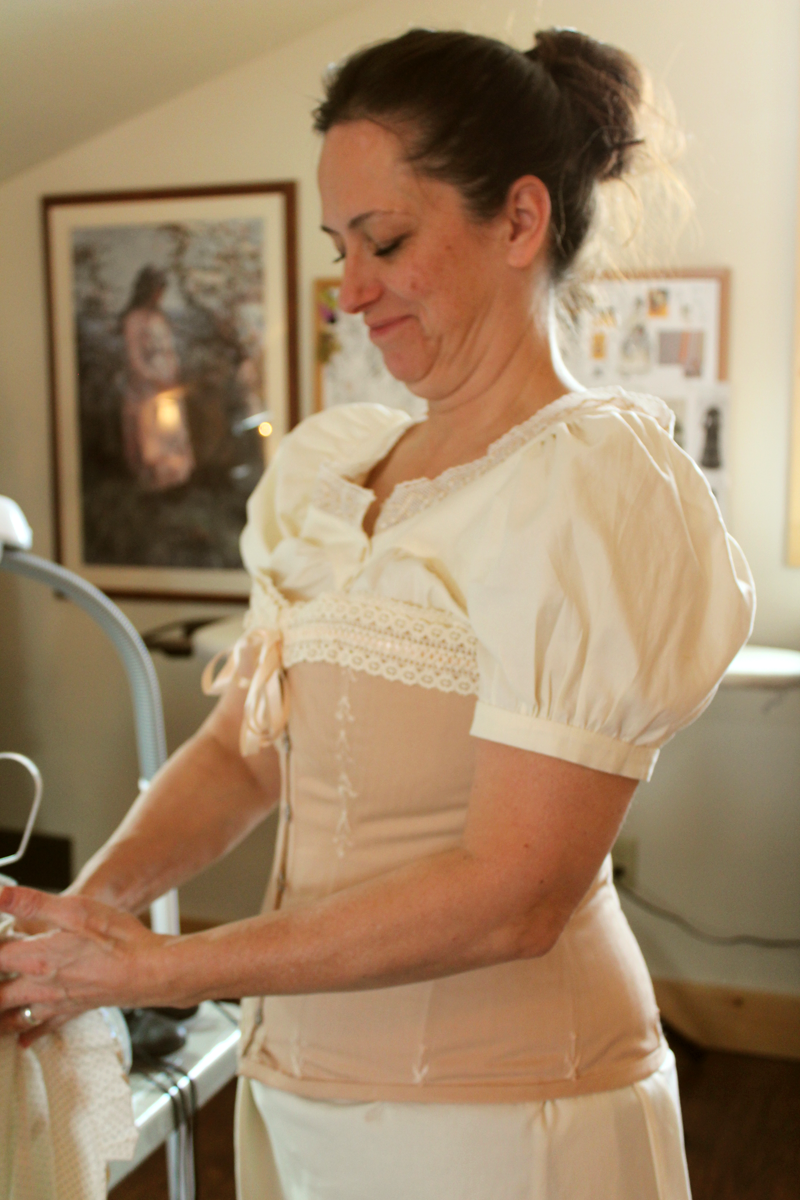
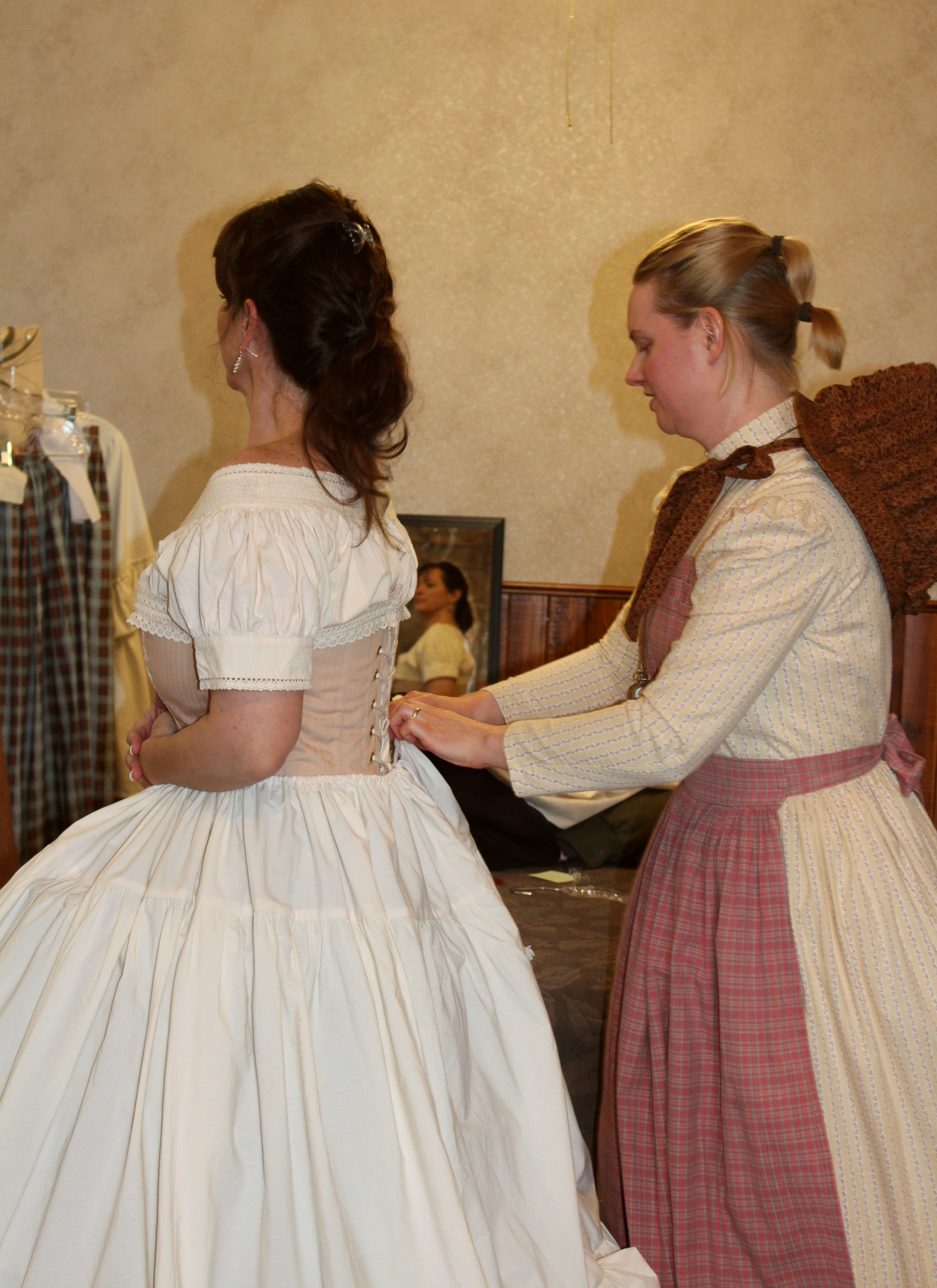 March 2018 Show
March 2018 Show
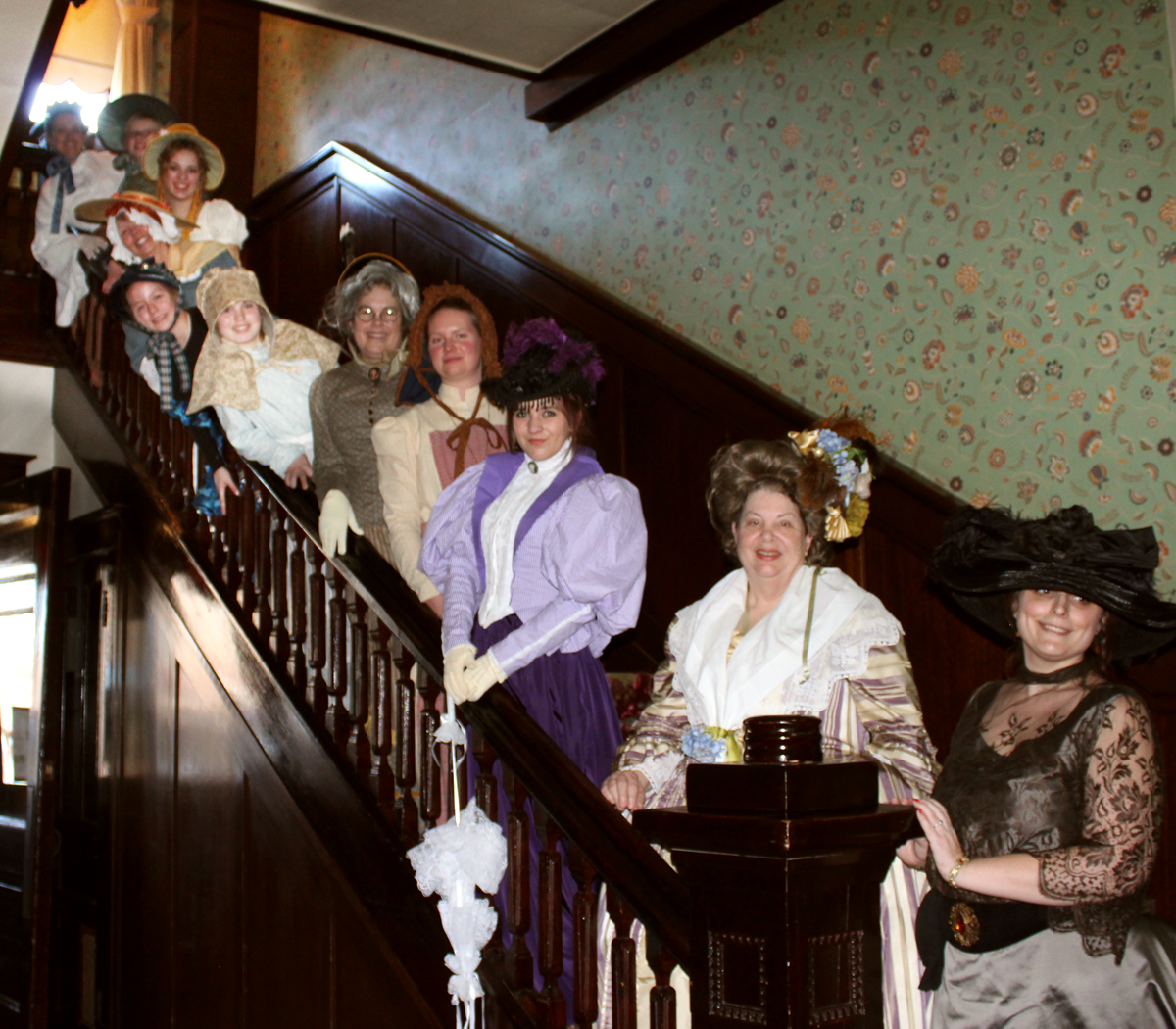

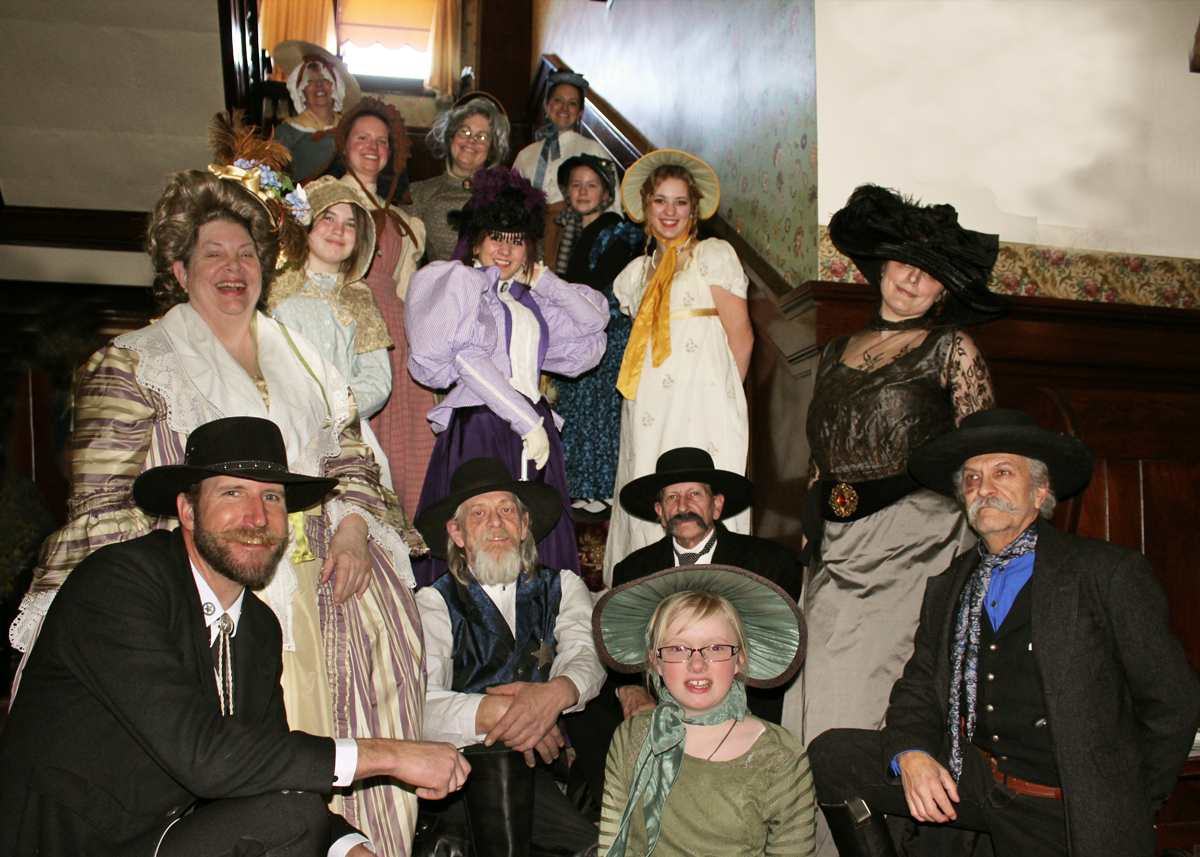
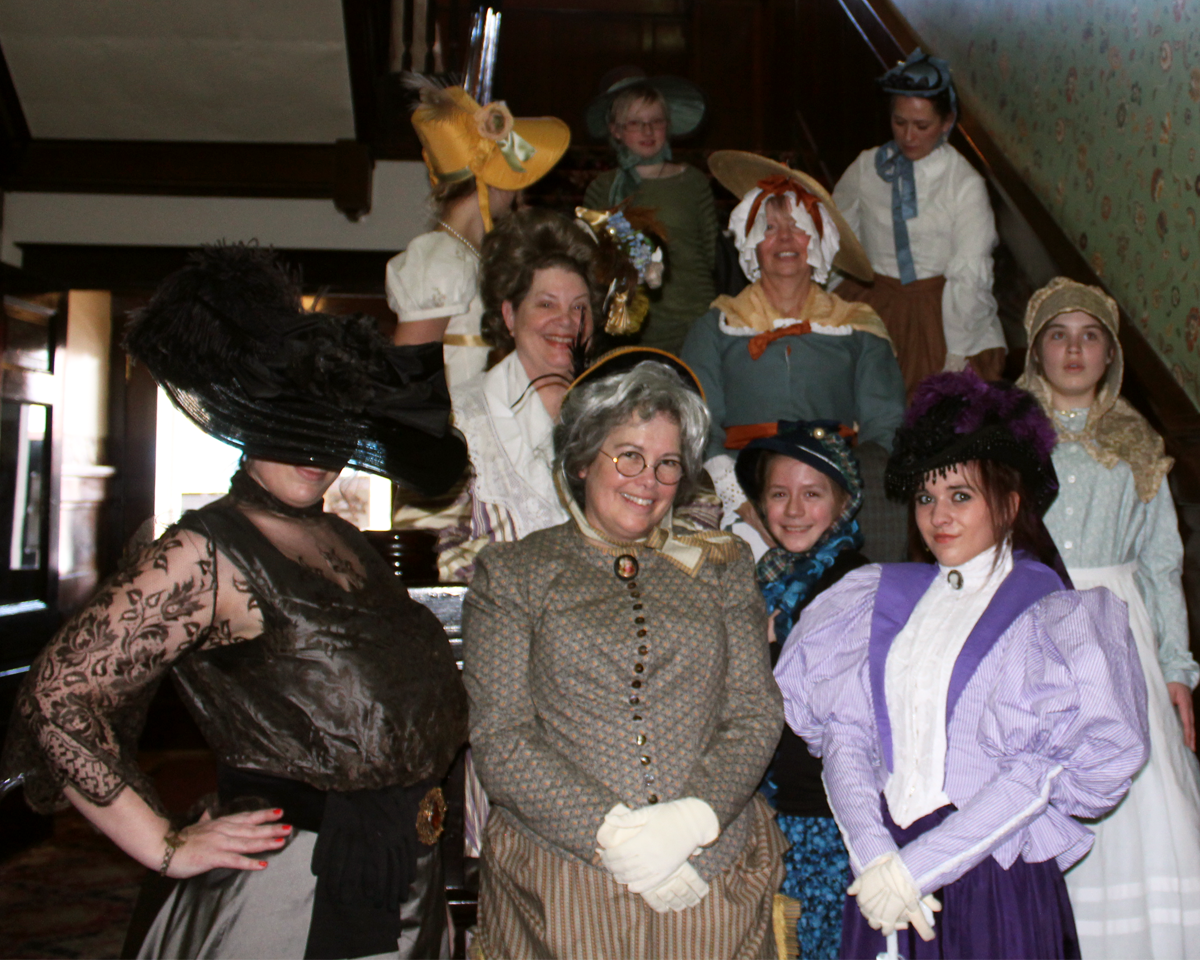
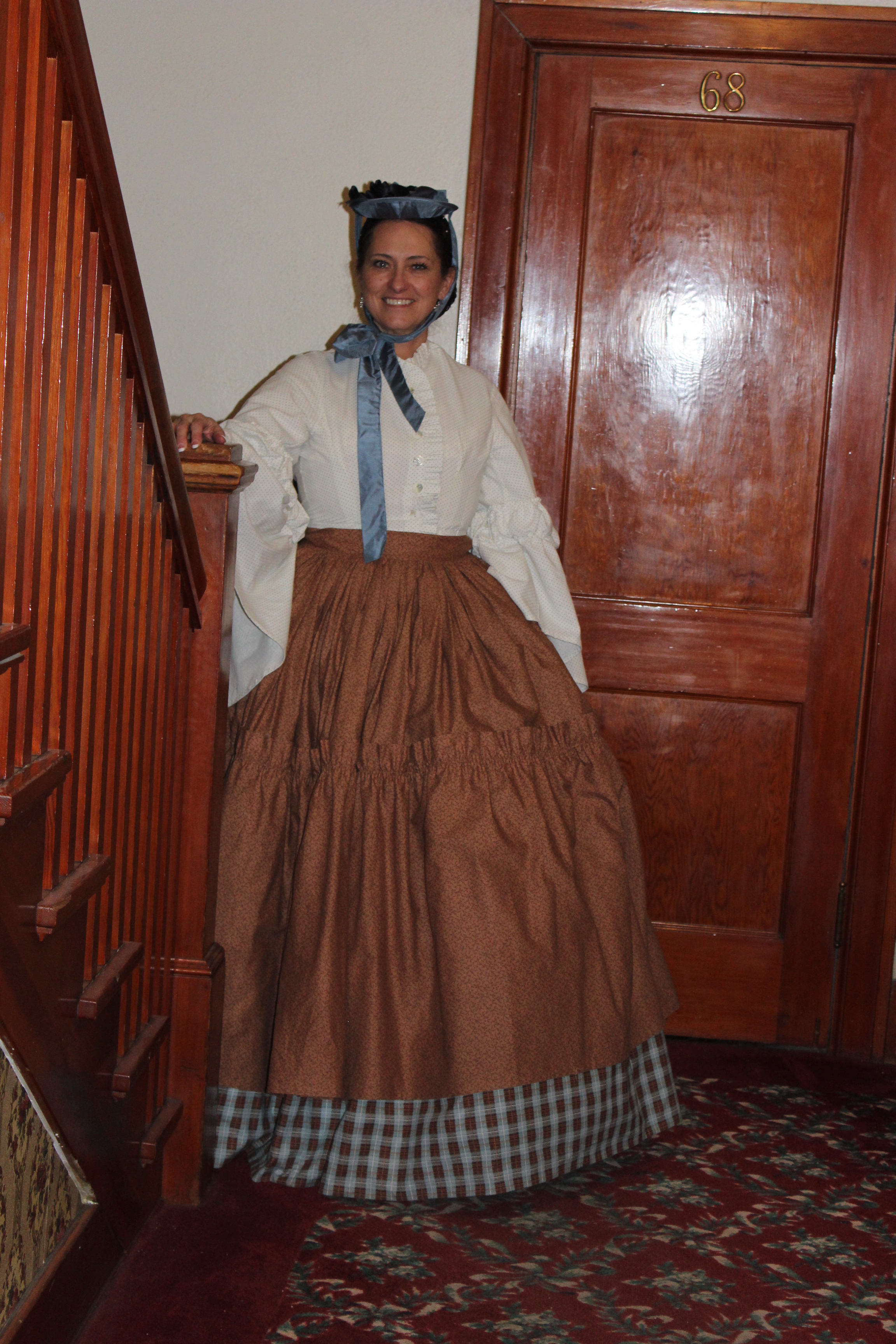
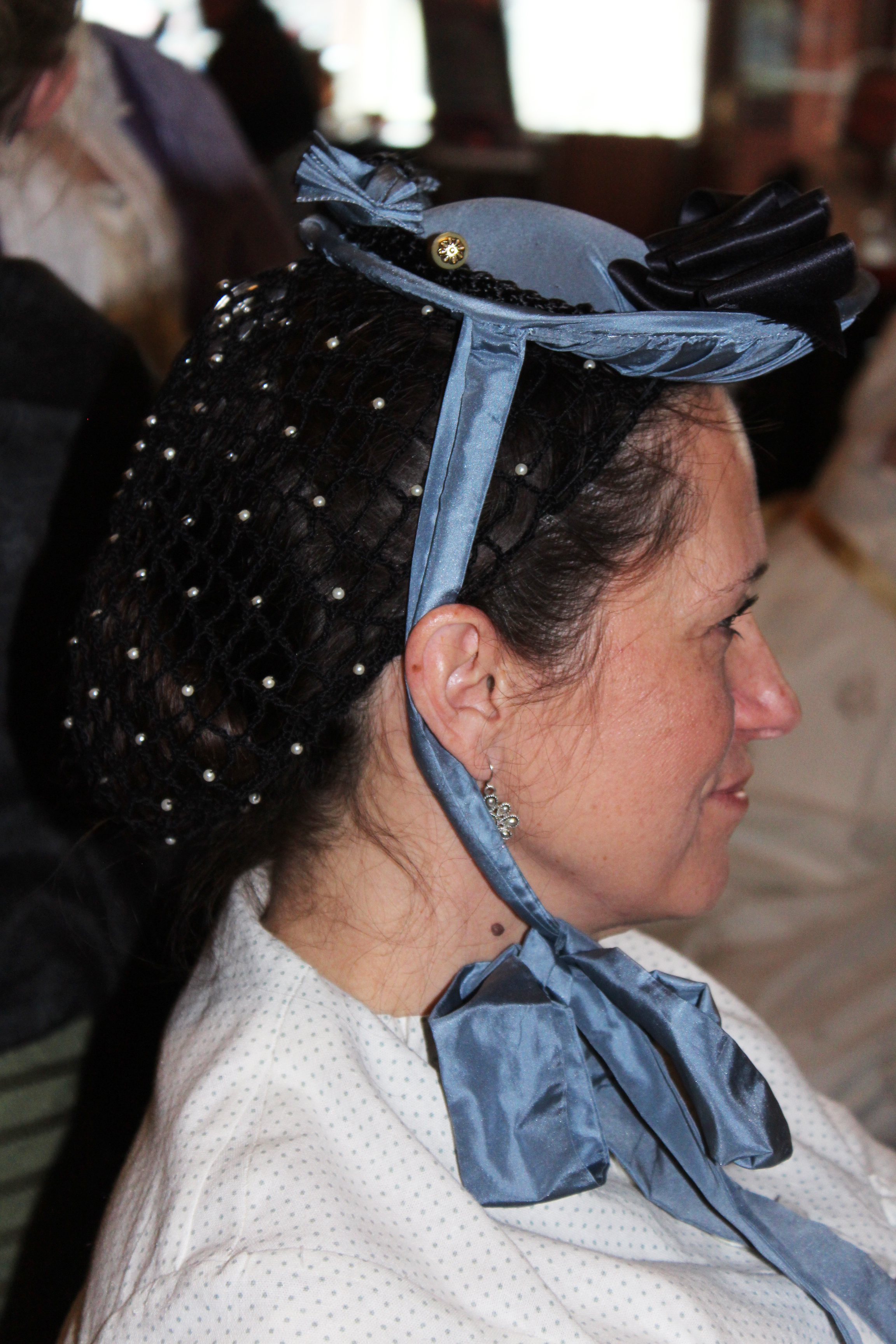
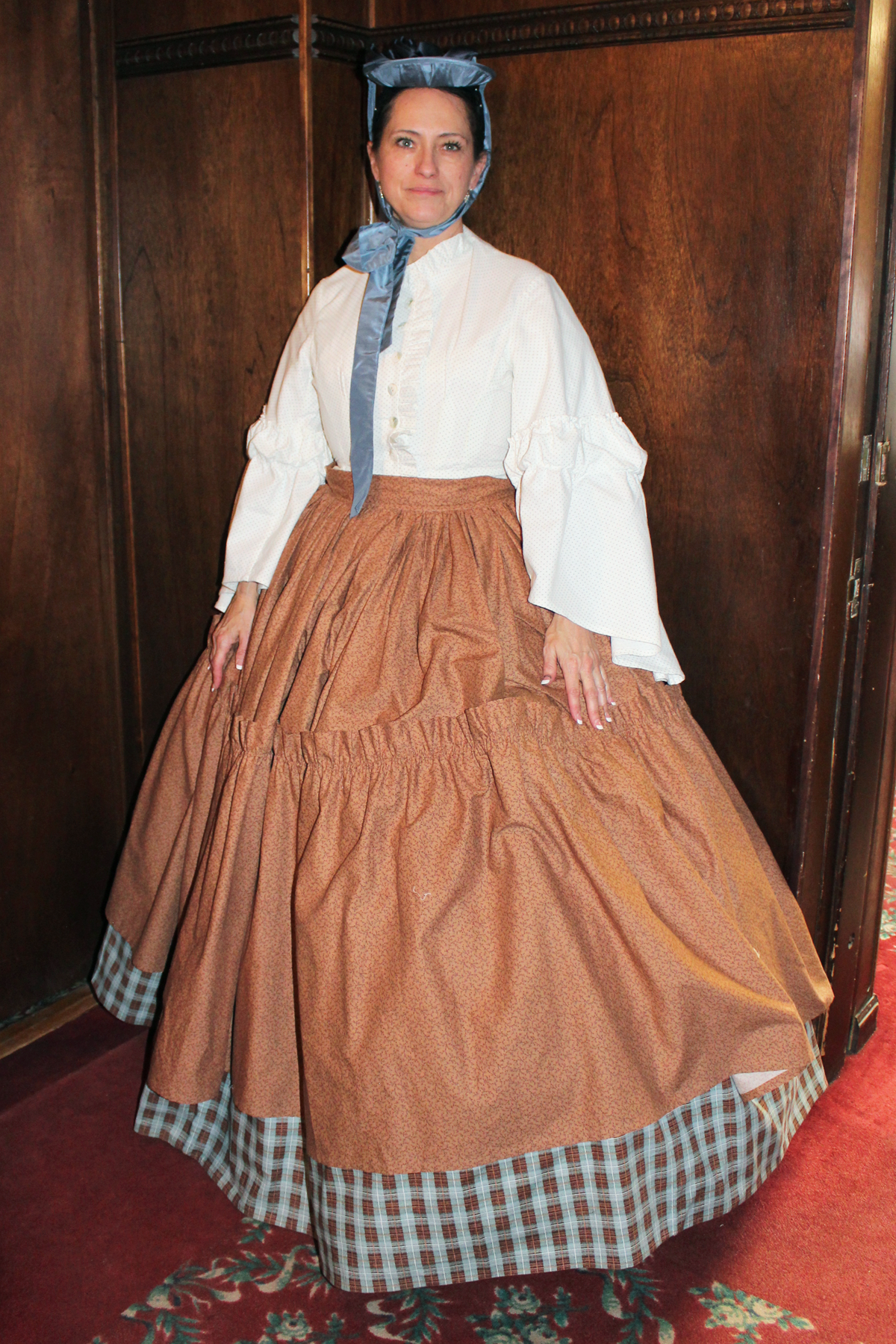
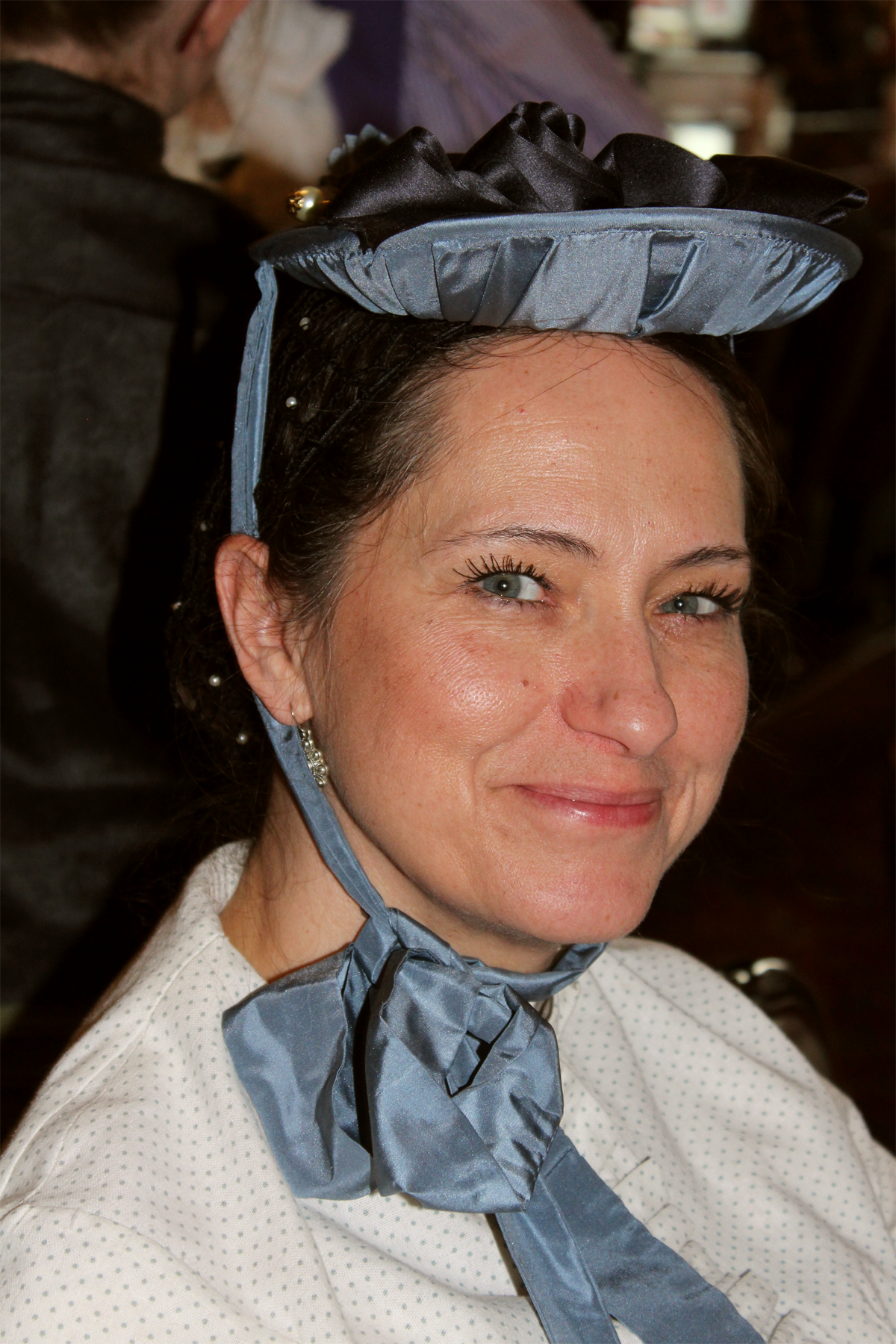
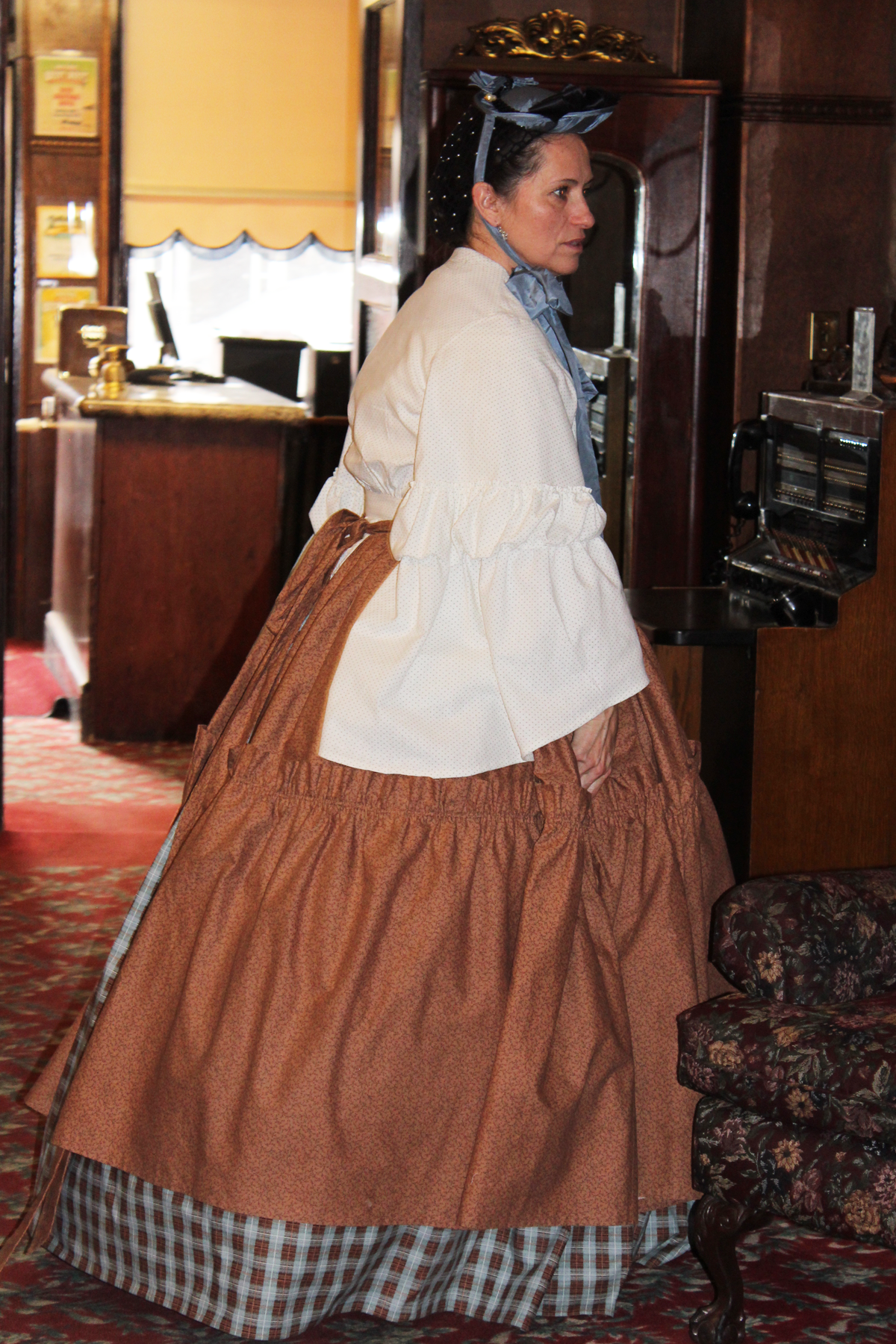
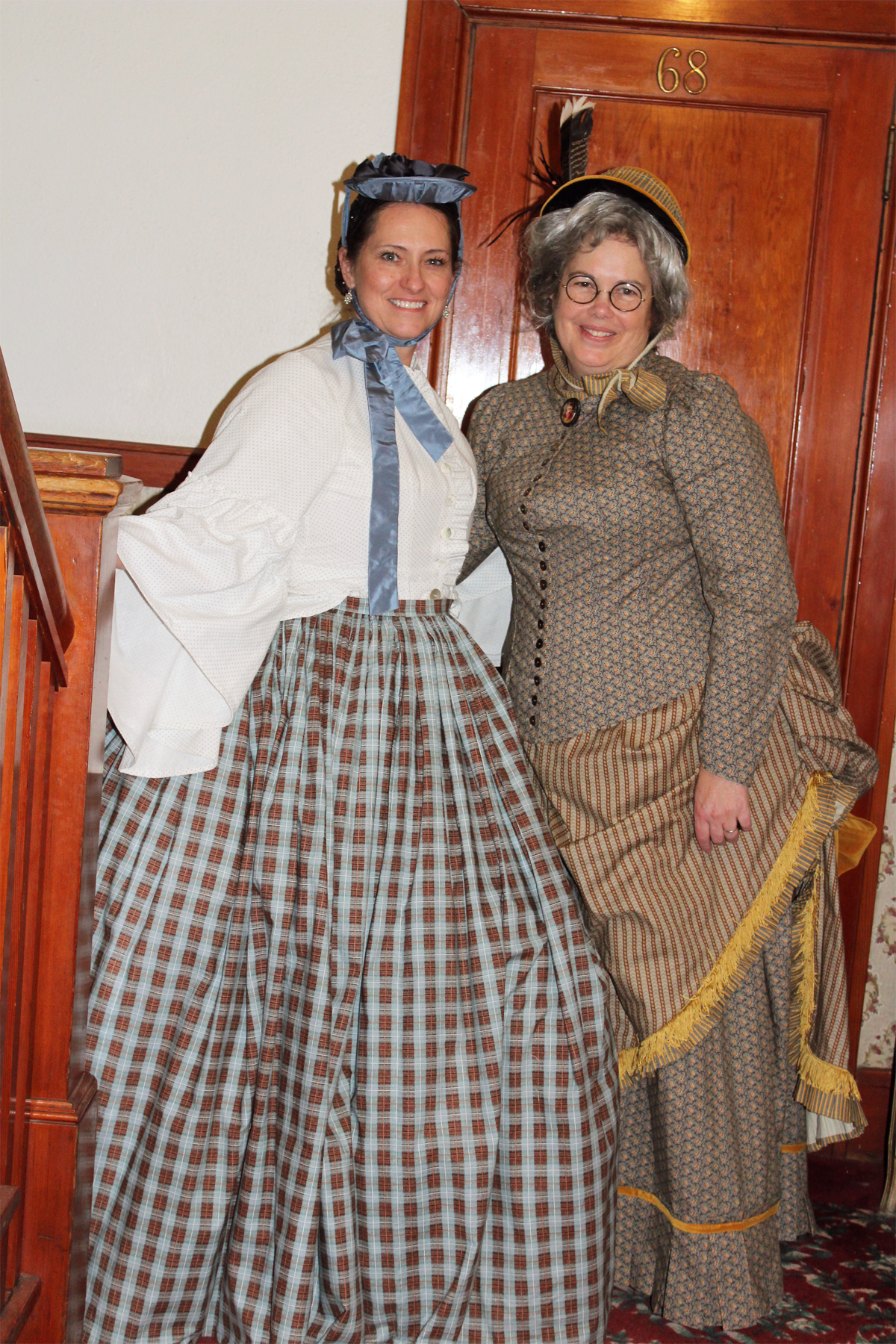


Click to go to Kristi’s Historical Research of Time & Place Page
Click to go to Kristi’s History of Fashion Research Page
Click to go to Kristi’s Design Development Page
Click to go to the top of this page
Click to go to The Buffalo Gals main page


